I was nominated by Dennis Hall and Guy Kawasaki for the Navy’s Distinguished Visitor program to photo document everyday life on the aircraft carrier the USS Abraham Lincoln. Check another one off the “bucket list”! This was an opportunity of a life time!
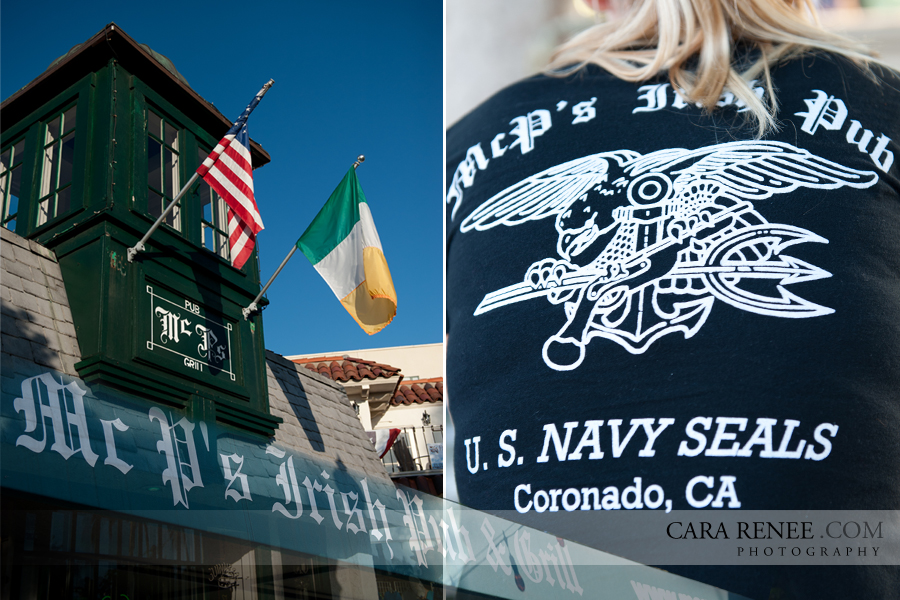
The SEALs motto is " The only easy day was yesterday".
The night before the embark, we met up at Mc P’s, a local pub and grill that is a famous hangout for Navy SEALS.
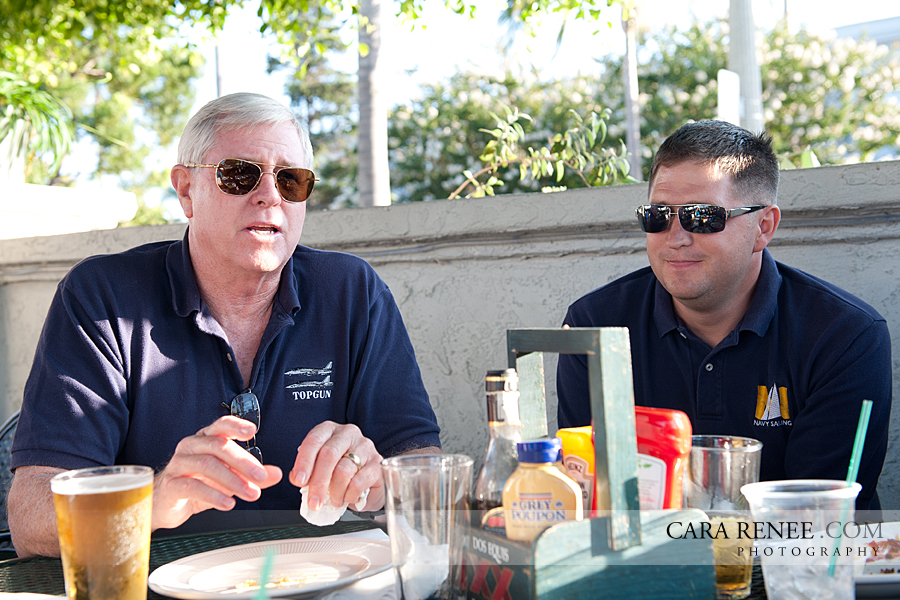
CAPT Donald Auten,USN Ret (left) and LT Aaron Kakiel (right)
- We were welcomed by CAPT Donald Auten, author of the book “Roger Ball” and LT Aaron Kakiel from Public Affairs. Don and Aaron answered many of our questions about what we would see and experience the next day.
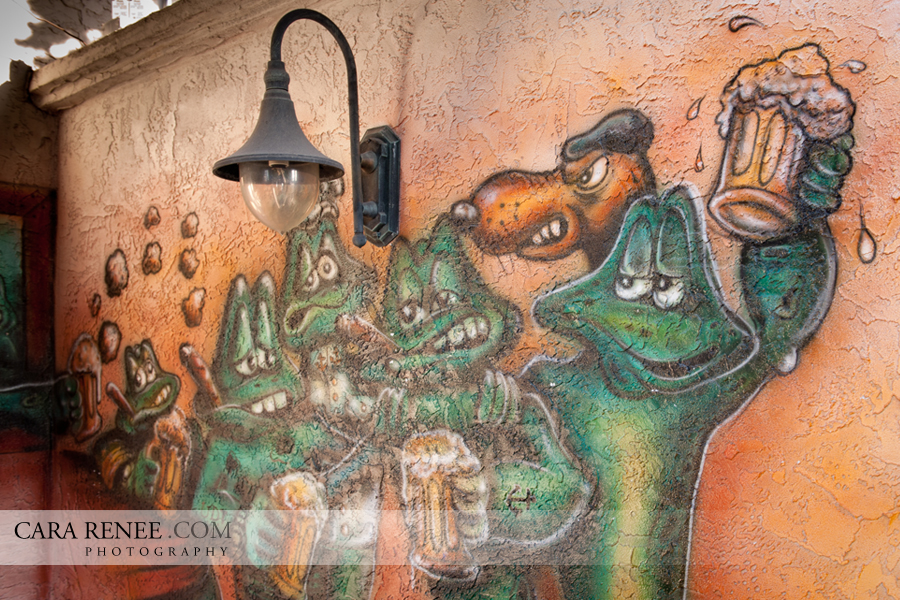
The SEALs are referred to as FROGMEN
- Our embark began the morning of August 6, 2011. As I drove over the bridge from San Diego to NAS North Island for the pre-embark brief, I heard the devastating news of the helicopter crash in Afghanistan and the tremendous loss of so many of our US Navy SEALs. The extraordinary sacrifices of US Navy SEALs and their families is sobering to think about.
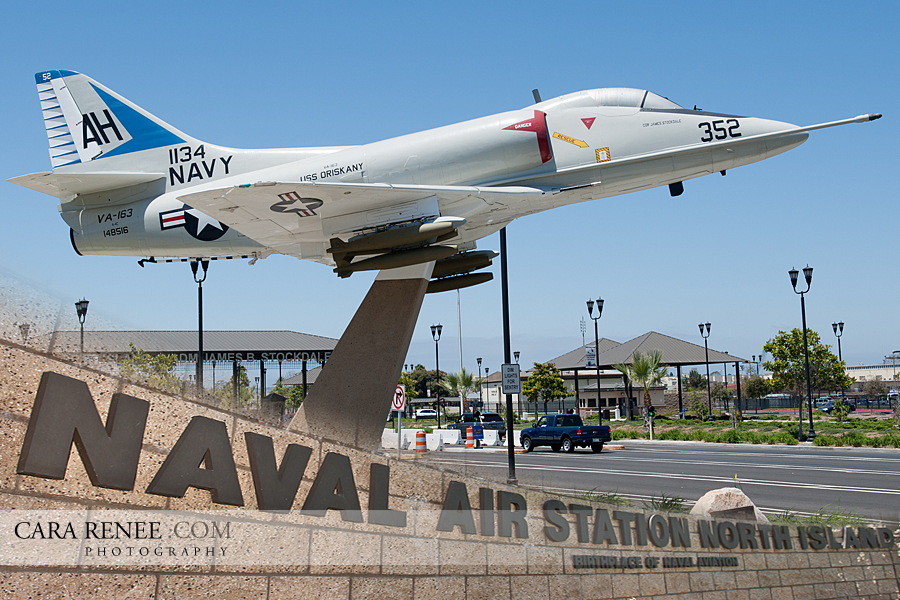
The birthplace of Naval Aviation.
X
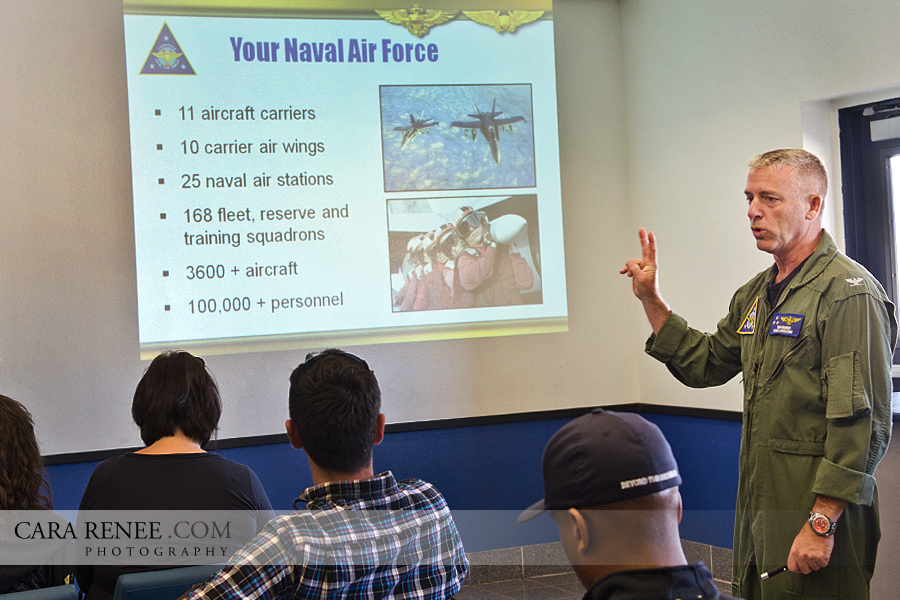
CAPT Tom Nosenzo Force Operations
We were briefed about the history of Naval Air Power by CAPT Nosenzo. He also explained the Core Capabilities of the United States Navy which include:
- Forward Presence
- Deterrence
- Sea Control
- Power Projection
- Maritime Security
- Humanitarian Assistance & Disaster Response.
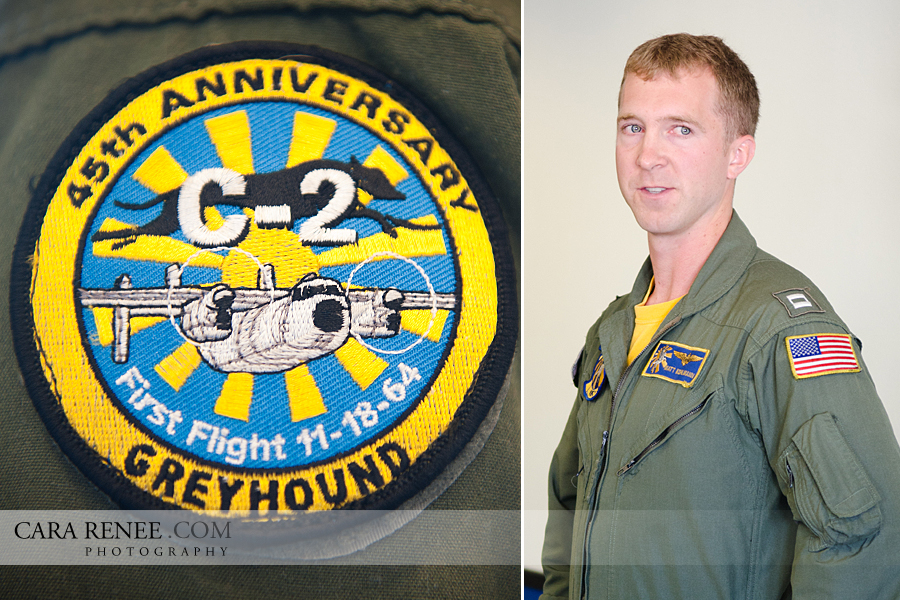
Greyhound Anniversary Patch
LT Matt Kohlmann, a pilot from the squadron VRC-30 Providers, briefed us about our flight in the C-2A Greyhound “COD” or Carrier On board Delivery. The C-2A is a carrier based transport that delivers high priority items like jet engines and other critical parts, as well as passengers and mail.
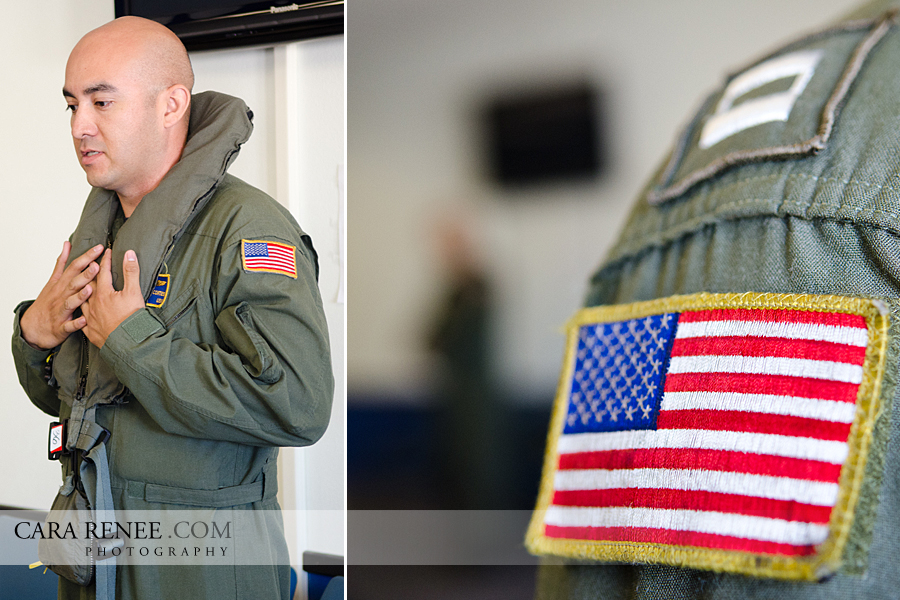
AWF1 Carlos Cortes
We were briefed on all the safety gear and how to brace for our first “Trap” on the USS Abraham Lincoln. We were told to cross our arms across our chest, grab our vest, place our chins down, and put our feet up on the seat in front of us.
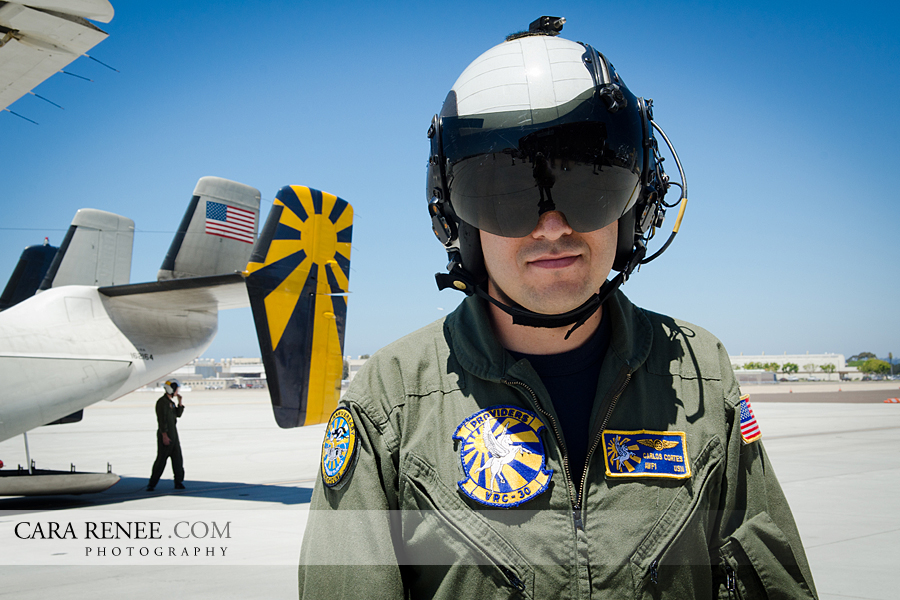
This is how the "Pros" look!
X
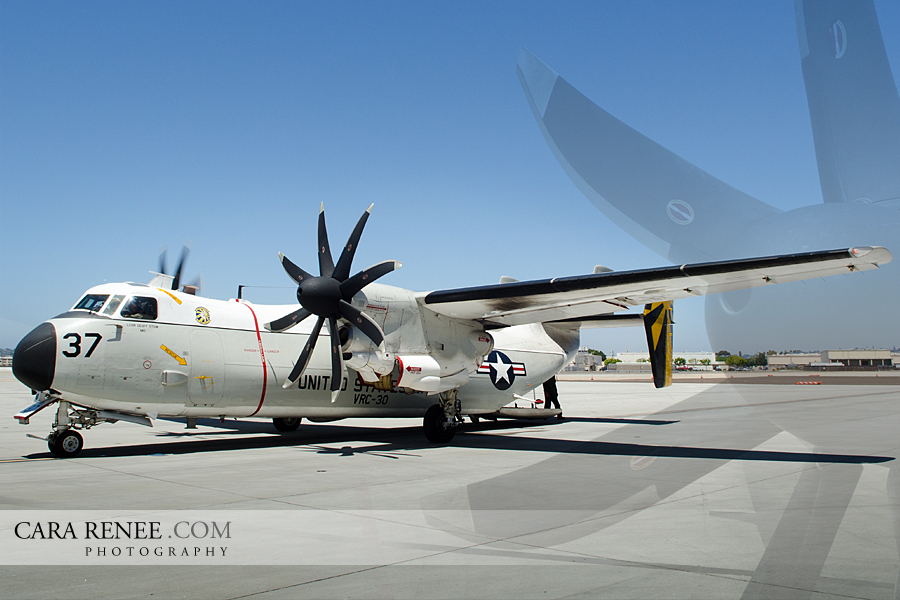
The C-2A "COD"
- The pilots shutdown the engine on the side closest to us as we headed out in a single file line to board the Greyhound. Soon we were airborne and about 45 minutes later, we received notice from the crew that we were about to land on the carrier and within seconds, the aircraft came to a complete stop… a successful arrestment! The “trap” happened very quickly. It was a smoother landing than I anticipated… considering that we went from 120 miles per hour to zero in three seconds.
-
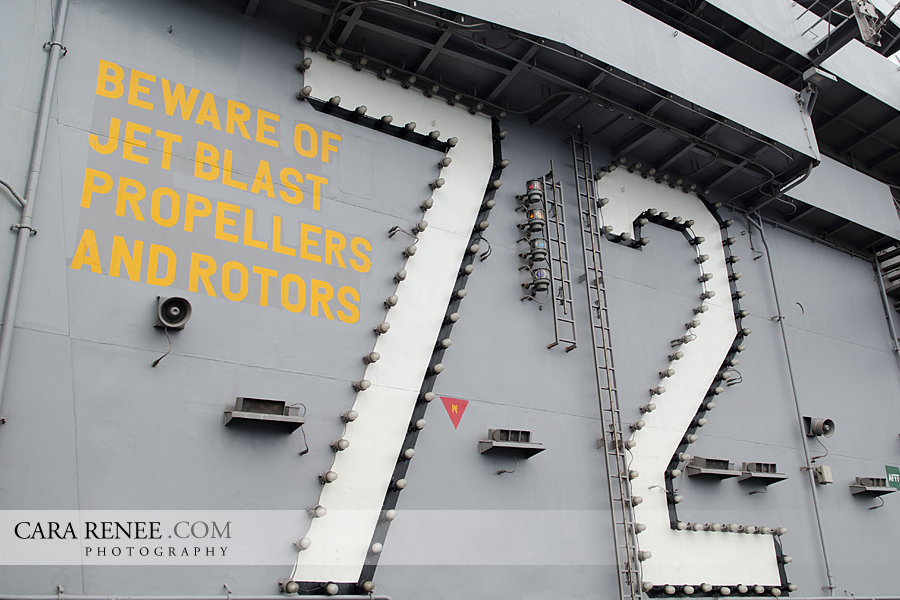
USS Abraham Lincoln (CVN 72) is America's fifth Nimitz-class aircraft carrier.
- X
-
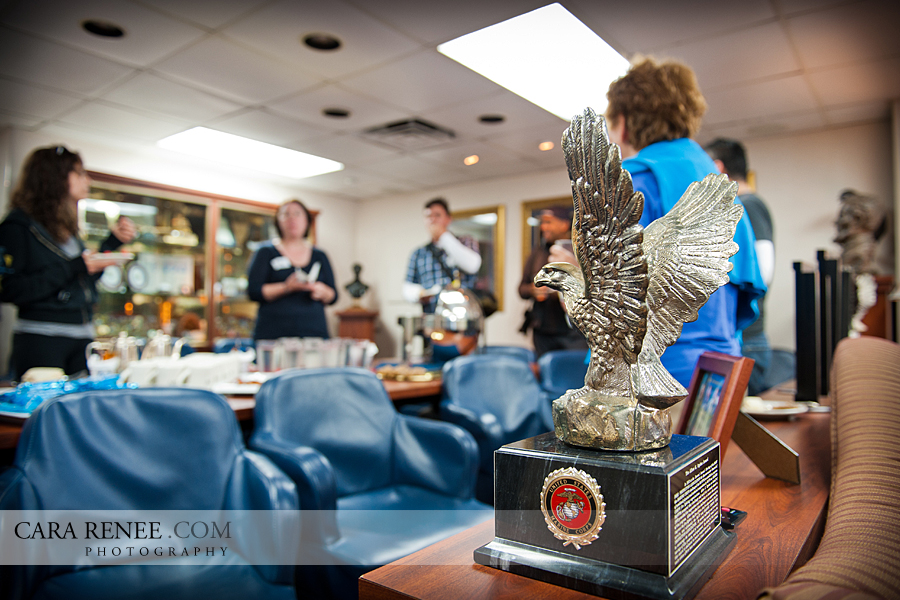
Memorabilia from the ship and private collection of Commanding Officer Captain John D. Alexander filled the reception room.
CAPT Alexander welcomed us with light lunch while we got our sea legs. I felt some motion, but not to the extent I did on board the USS Makin Island, (see previous blog USS Makin Island). During introductions, the CO, (short for Commanding Officer) paused every few minutes like clockwork, while the thunderous rumble of another aircraft launched or caught a wire. It appeared through CAPT Alexander’s years of service, long pauses during conversation, became an essential habit while communicating on board an aircraft carrier.
-
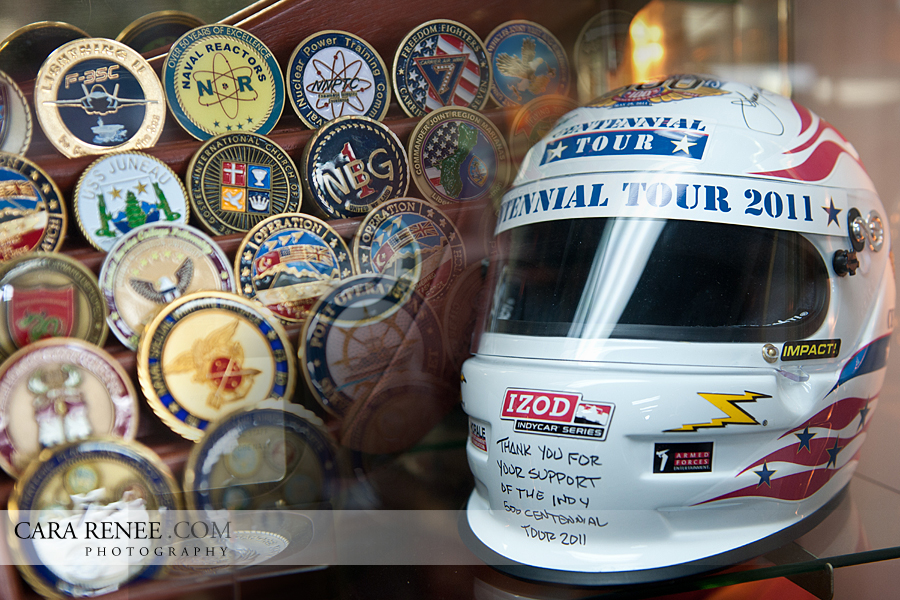
This racing helmet is one of the most valuable possessions on board the ship.
- That’s a lot of coins in that display cabinet! They’re called Challenge coins and part of Navy tradition. The coins are given and exchanged among military members. Each military member should to carry their current command coin at at all times… if not, and they are asked to show their command coin and cannot, the next round of beverages is on them!
-
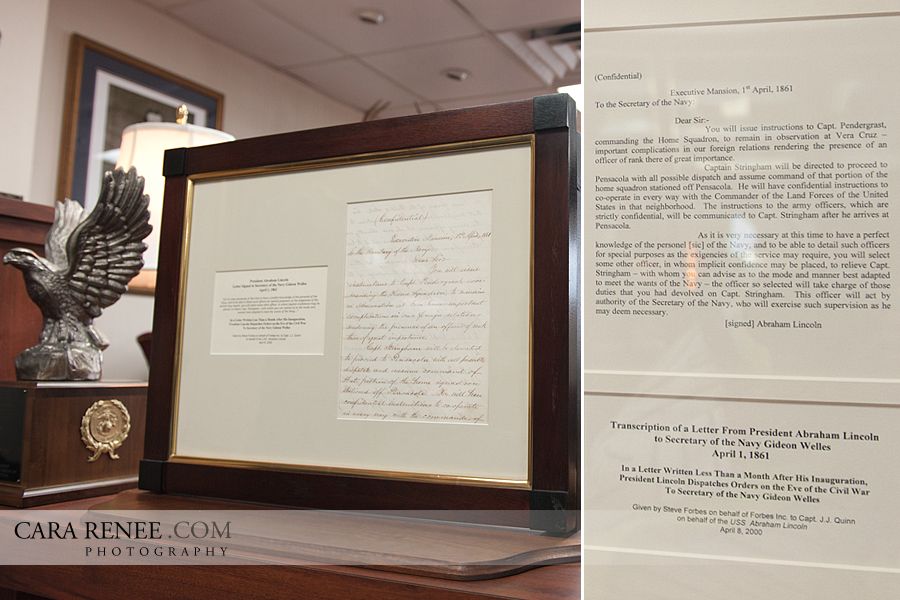
Actual letter from Abraham Lincoln
President Abraham Lincoln memorabilia is located everywhere on the ship. I was amazed to see this actual handwritten letter from President Lincoln. Our 16th President had beautiful handwriting. Penmanship seems like a lost art in the age of keyboards and touch screen technology.
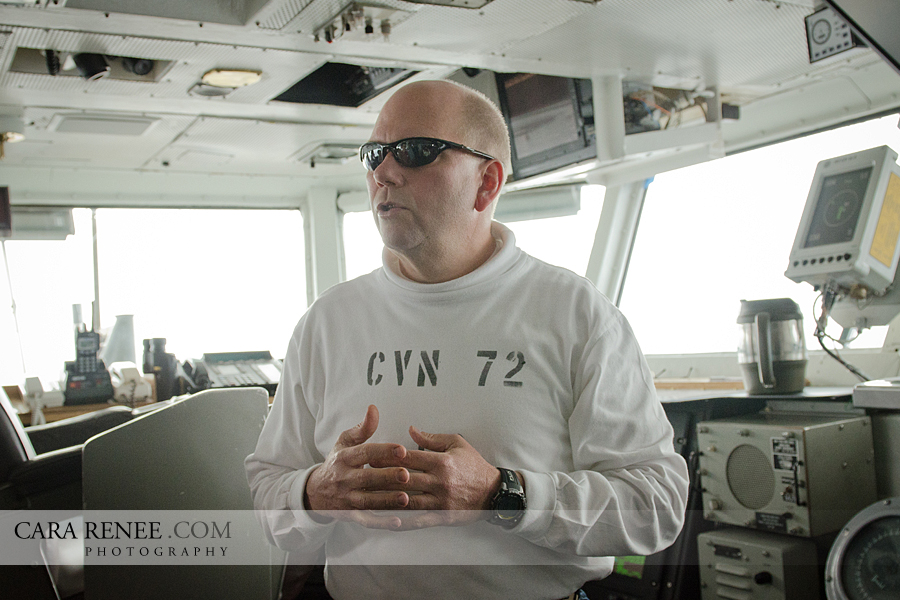
CAPT John Alexander, Commanding Officer of the USS Abraham Lincoln
-
-
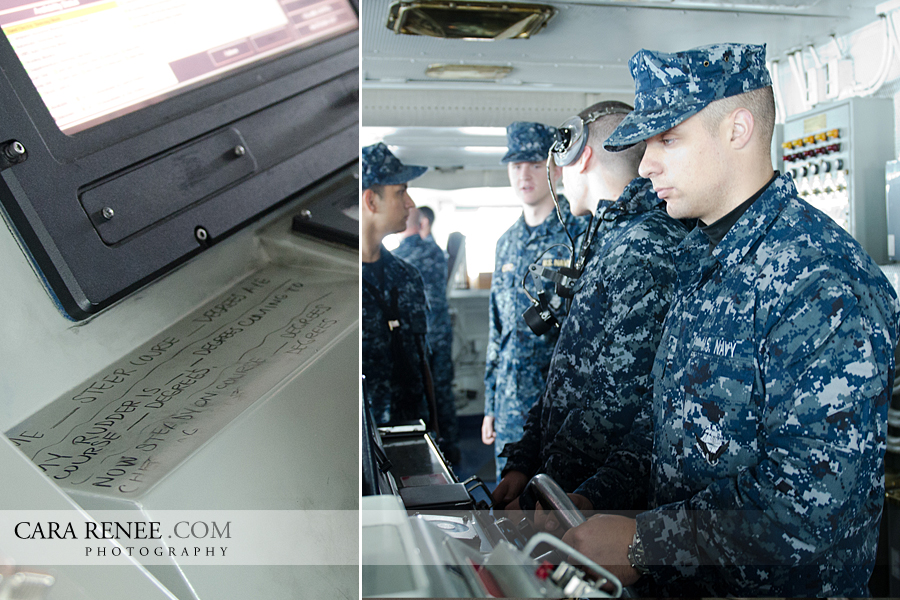
I noticed that someone had "penciled in" how to respond to the current course just to the left the Helmsman.
I was able to observe sailors navigate and steer the ship… part of the responsibilities for these young sailors!
-
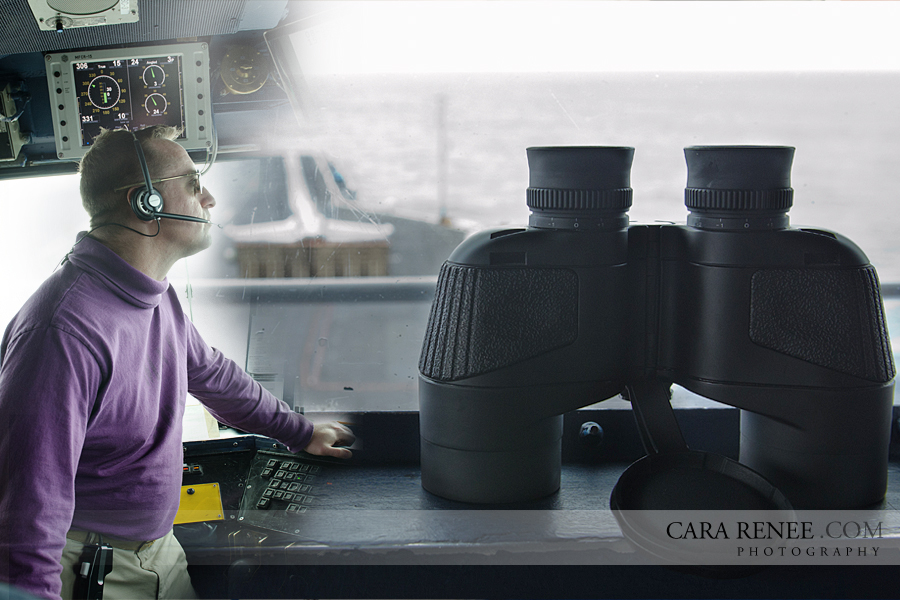
Every aircraft is closely watched and evaluated prior to each catapult.
- X
-
-
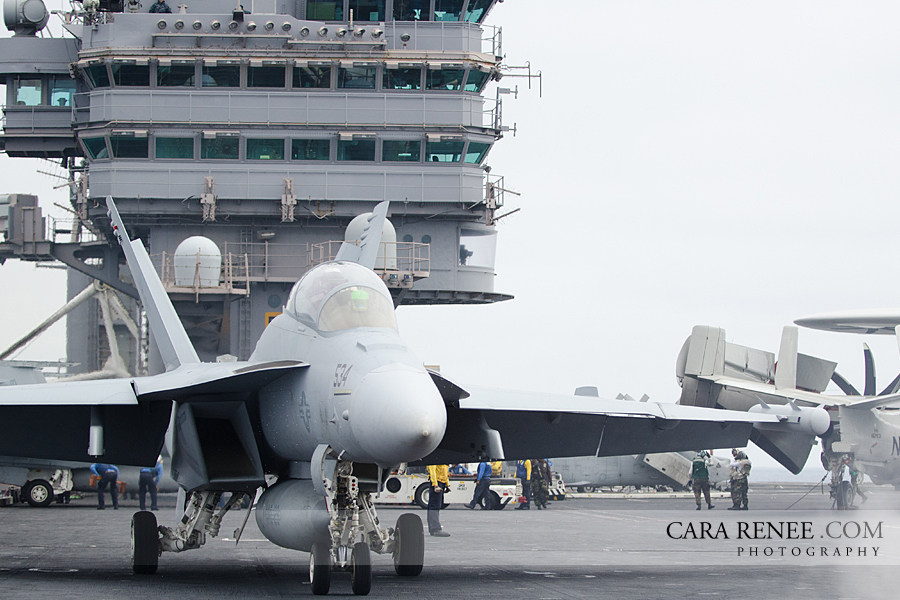
A tremendous amount of time is spent training military personnel as precision is key to success, safety and survival on an aircraft carrier.
- X
- It takes a rainbow of colored shirts to catapult an aircraft off a carrier. On the flight deck, different colored jerseys are used to differentiate job responsibilities.
-
- Purple-Aviation Fuels
- Blue-Plane Handlers
- Green-Catapult & Arresting Gear Handlers
- Yellow- Aircraft Handling Officers
- Red-Ordnancemen
- Brown-Air Wing Plane Captains and Air Wing Line Leading Petty Officers
-
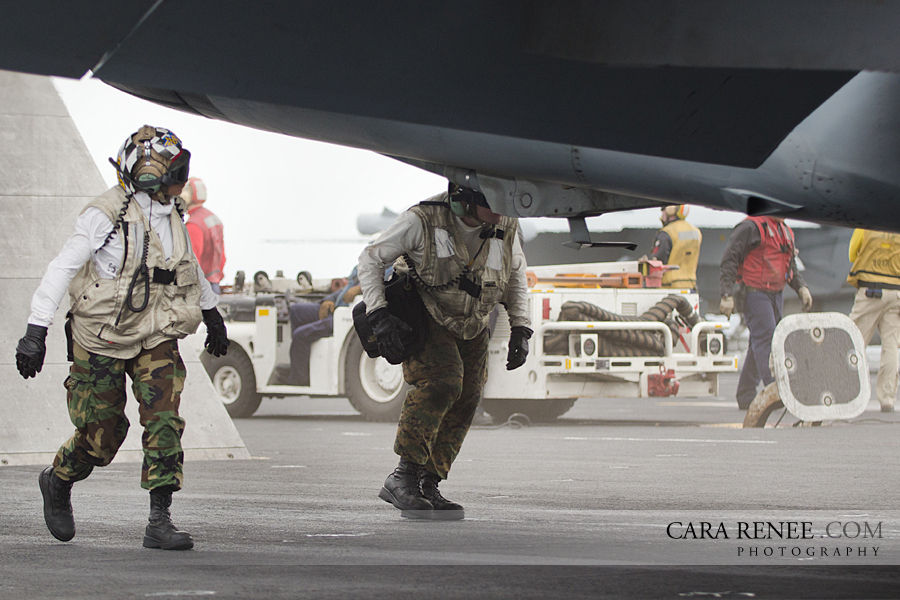
"White Shirts"are Air Wing Quality Control Personnel.
- They inspect the aircraft and are safety observers such as Landing Signal Officers (LSOs), Air Transfer Officers (ATOs), Liquid Oxygen(LOX) Crews and Medical Personnel.
-
-
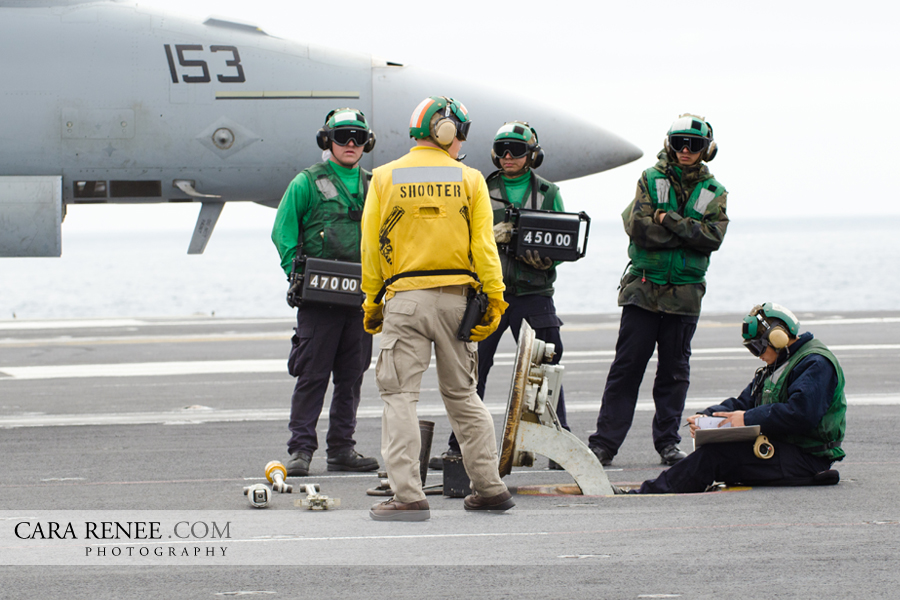
The "Shooter" is a Catapult Officer
Yellow Shirts are Aircraft Handling Officers, Catapult & Arresting Gear Offices and Plane Directors.
-
-
-
-
-
-
-
-
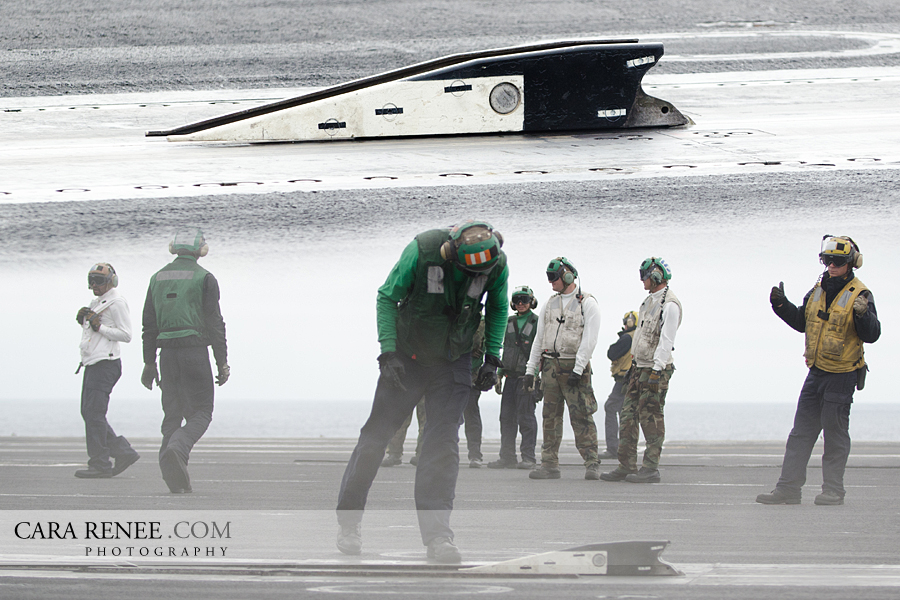
The Catapult
- The Green shirts are Catapult/Arresting gear Crew, Air Wing Maintenance Personnel, Hook Runners and Photographers.
-
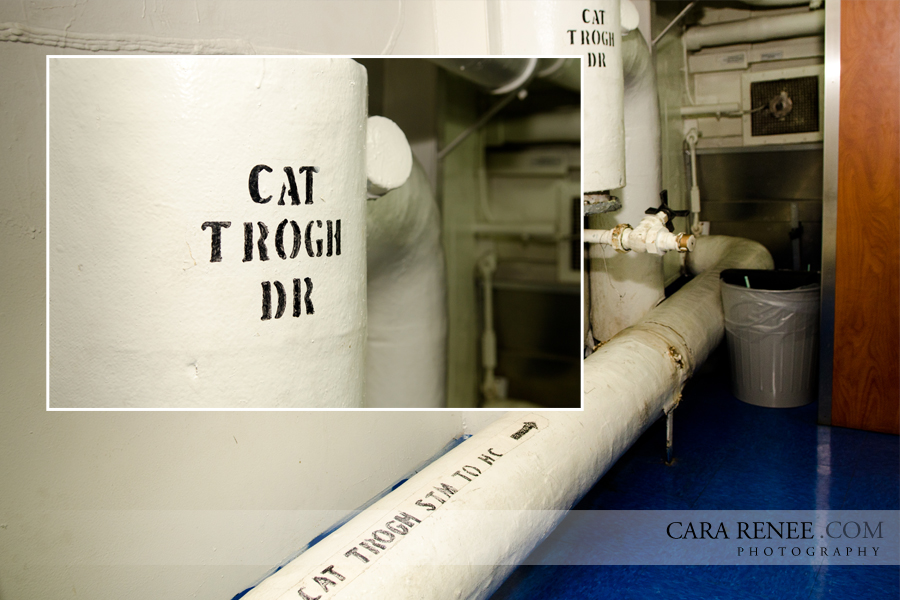
Steam for the Catapults
- The catapults currently work off steam produced from the carrier’s propulsion system, but will be retrofitted with a magnetically driven system in the future.
-
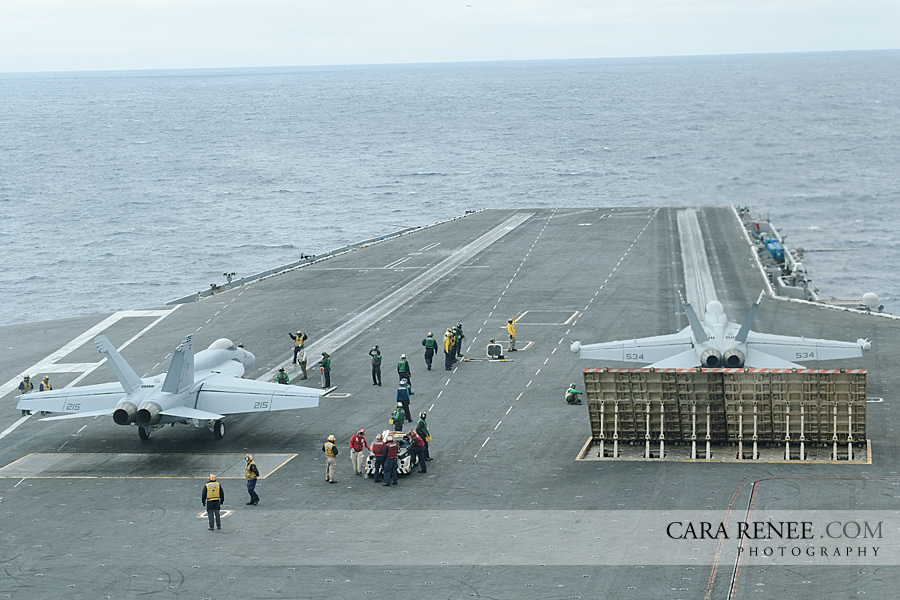
The shield behind the aircraft is called a Jet Blast Deflector, or JBD for short. They help protect against the jet blast produced on takeoff.
- I
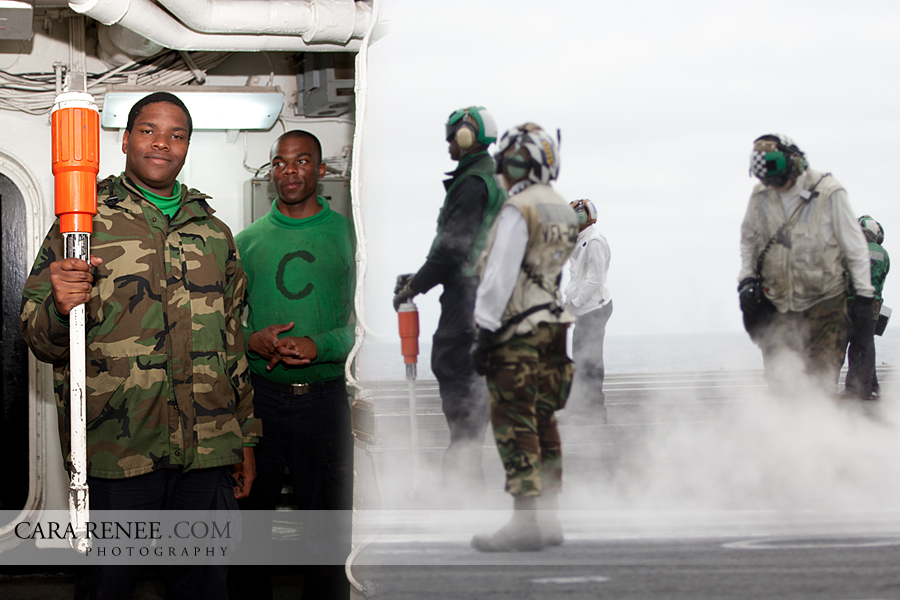
This 50 lbs Holdback bar is used in catapulting aircraft off the carrier. The holdback requires a sufficient amount of force to be generated for launch before it releases. After 100 catapult launches, each bar must be refurbished.
-
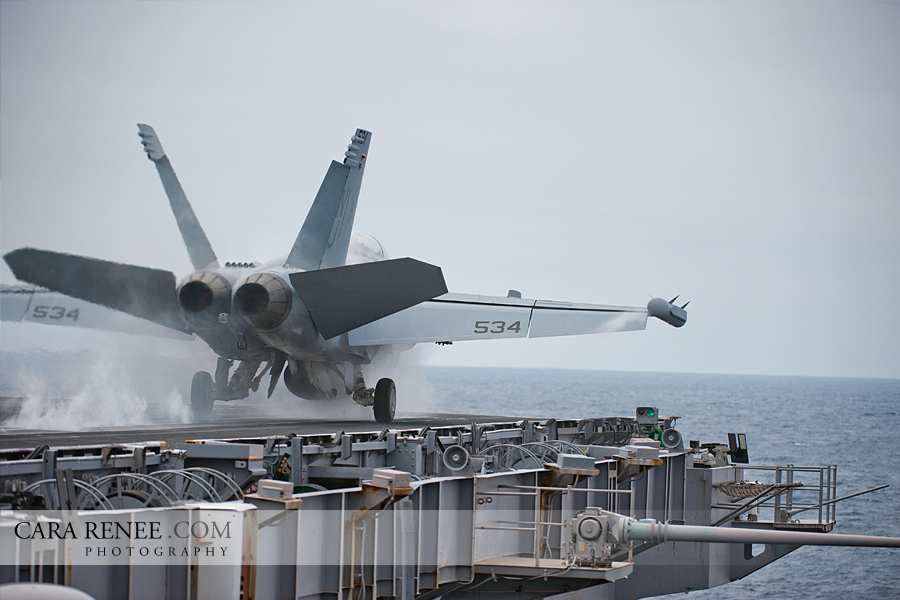
Check out the steam from the Catapult!
X
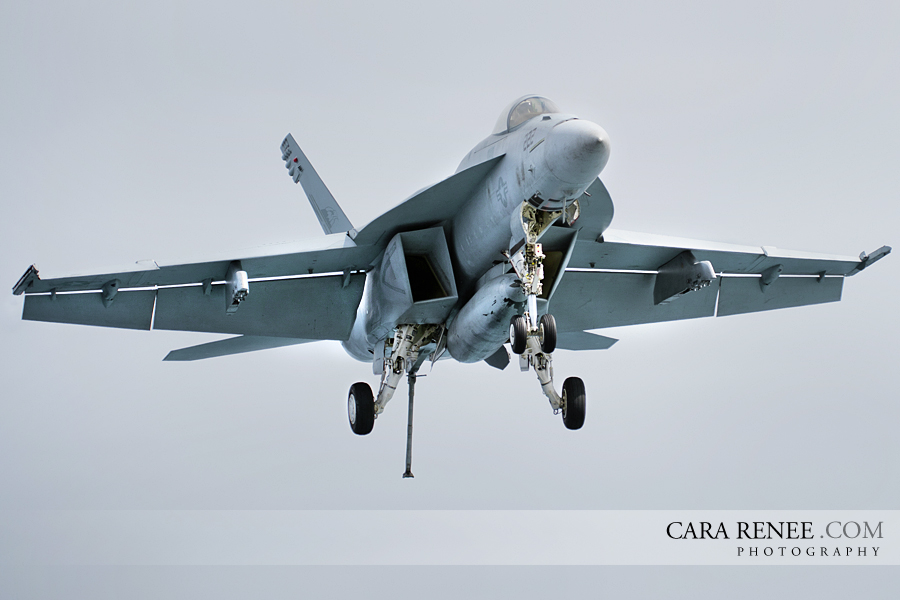
Pilots call the “Ball” which refers to the Fresnel lens on the deck which guides the pilot to a precision landing at the appropriate glide slope to the carrier deck.
X
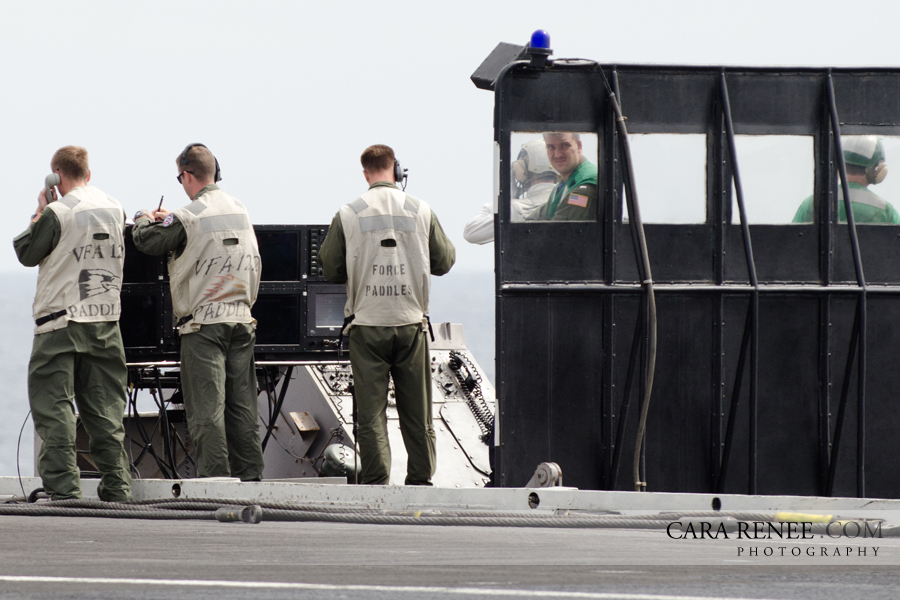
- When the Pilot calls “Ball”, the Landing Signal Officer (LSO, also called “Paddles”) responds back to the pilot “Roger Ball” in confirmation that everything is good for their approach to the carrier.
-
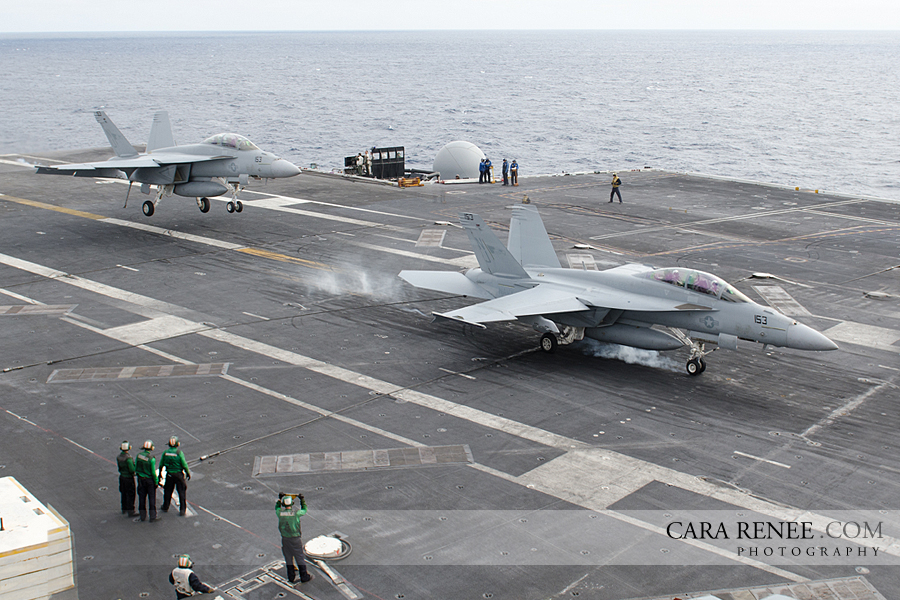
Photo sequence showing a "Trap"
X
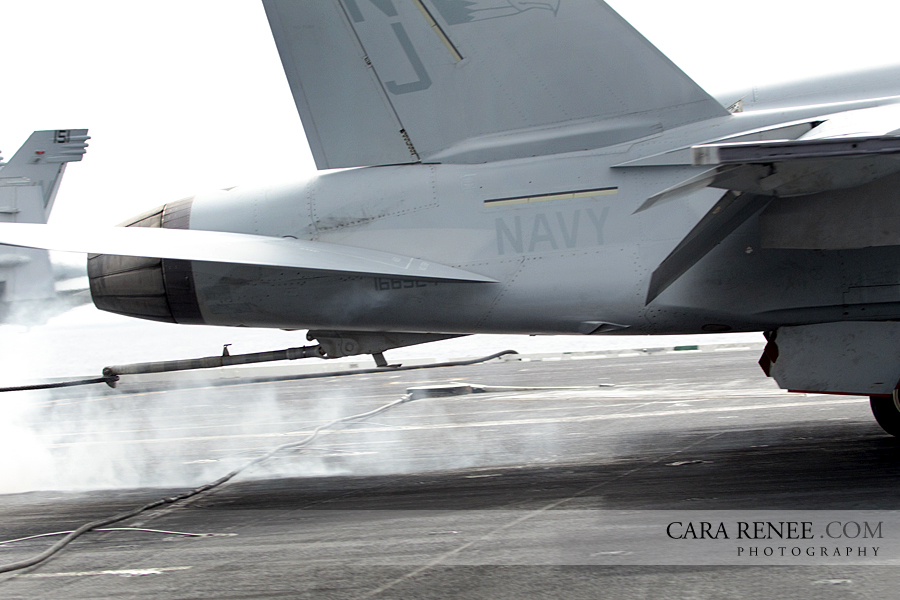
"Tailhook"
A “Trap” or landing on an aircraft carrier is commonly called a “controlled crash” since they have to come down hard and fast as opposed to a flared landing on a land-based runway. If a pilot is not in a good position to land, the LSO will “wave off” the pilot requiring him to climb away from the carrier. A pilot “bolters” when he is too high for his arresting hook to grab a wire. When that occurs, the pilot has only a split second to go to full power and take-off having to circle back to try again.
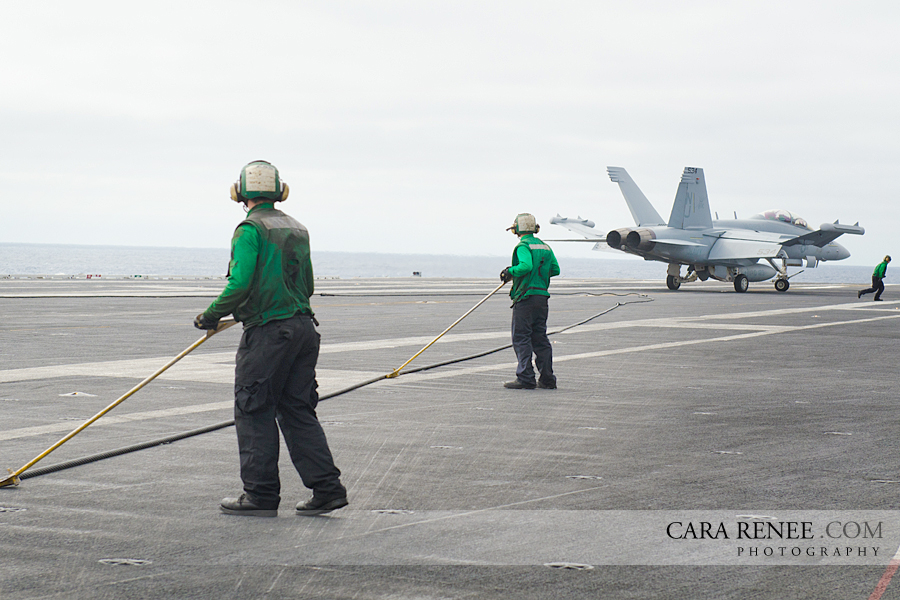
After the tailhook retracts, the wire is carefully fed back into position for the next landing. As the pilot “calls the ball,” arresting gear crew have to ensure the settings are correct for the type of aircraft and weight. With aircraft landing less than a minute between each other, those wires and the crew get a work out!
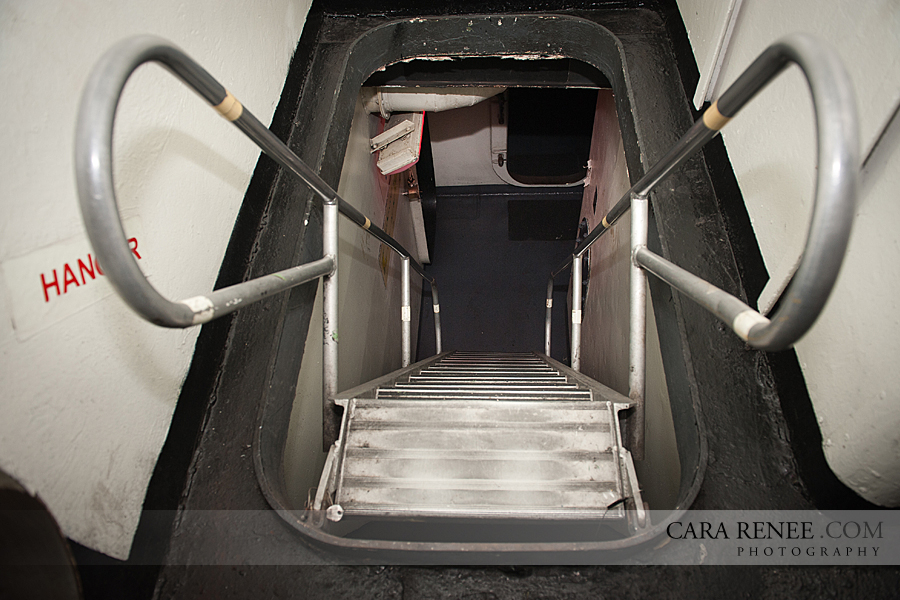
We went up and down these narrow stairwells all day…it’s a pretty good workout with 35lbs of camera gear strapped on.
Next up the Hanger Bay… aircraft are stored and maintained in the Hangar Bay which is directly below the flight deck.
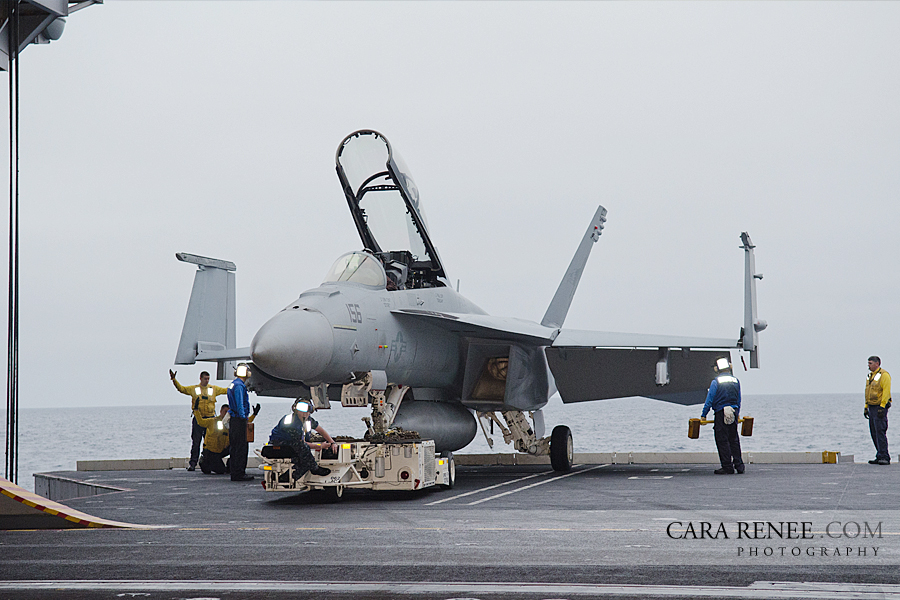
This elevator is used to move aircraft up to the Flight deck from the Hanger bay.
X
X
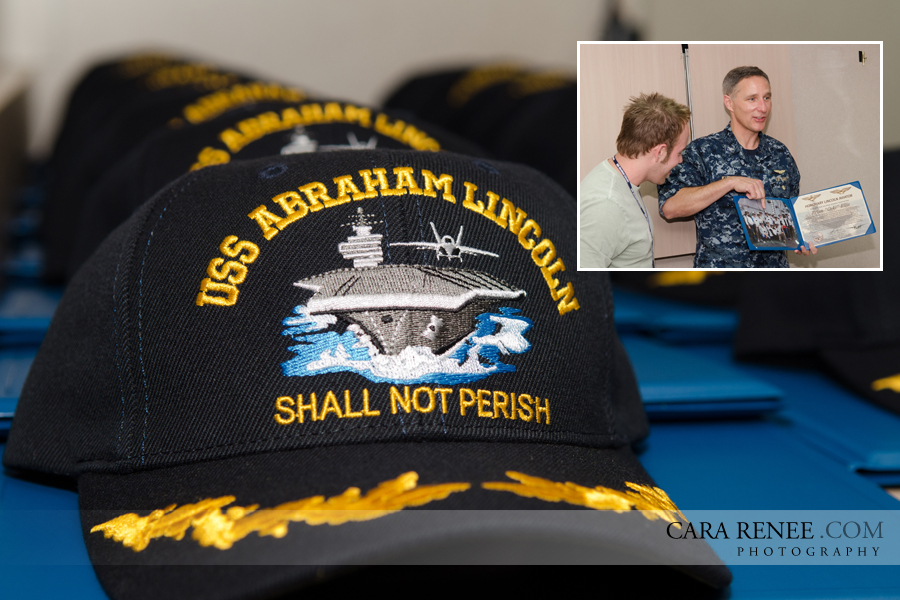
Captain Timothy Kuehhas, Executive Officer of the USS Abraham Lincoln hosted dinner for us on board the ship.
CAPT Kuehhas presented caps with our “call signs” embroidered on the back. Pilots use call signs which are “unique” nicknames used during radio communications between aircraft during flight. Call signs are not chosen, only “given” by your fellow squadron pilots. There’s usually a pretty good story behind them!
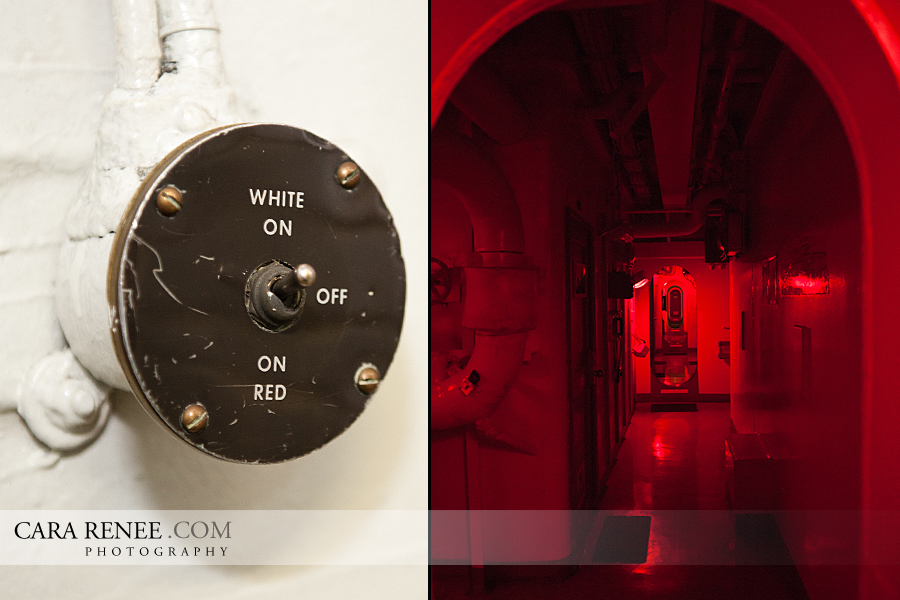
Red light at night illuminates the hallways.
After sunset the hallways transition from white lighting to red. The red lighting allow for eyes to quickly make the transition from inside the carrier to outside on the dark flight deck. It also helps camouflage the carrier so that when the crew goes in an out of doorways the red lit hallways are less visible.
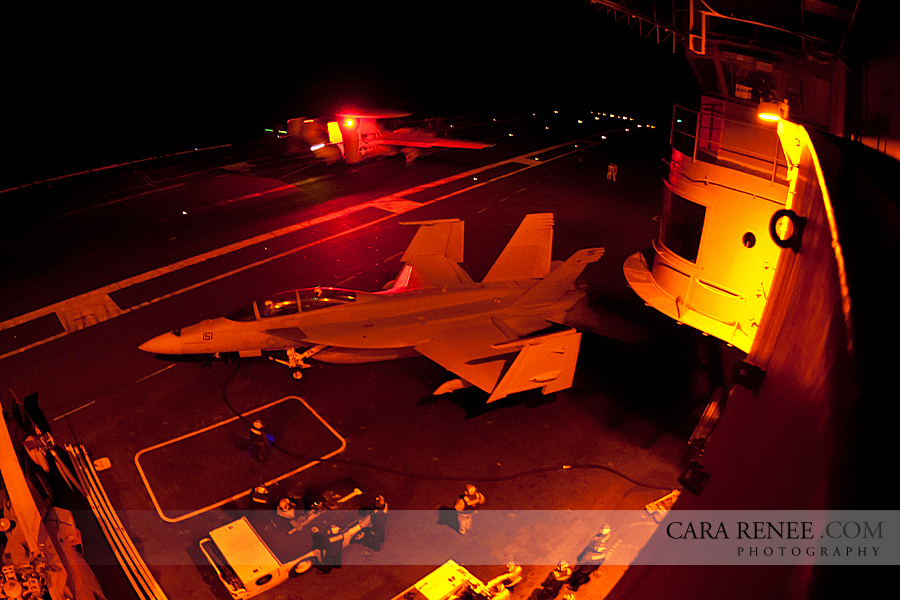
If you look closely, you can see the E2-C2 Hawkeye's arresting hook has caught the wire.
At night the carrier and deck are remarkably dark. It was truly amazing that pilots are able to land in such low light conditions. On this night, there was a low cloud ceiling making it even more challenging for the pilots because of the rapid transition required from flight instruments to the visual optical landing system, or as they call it, “the ball.”
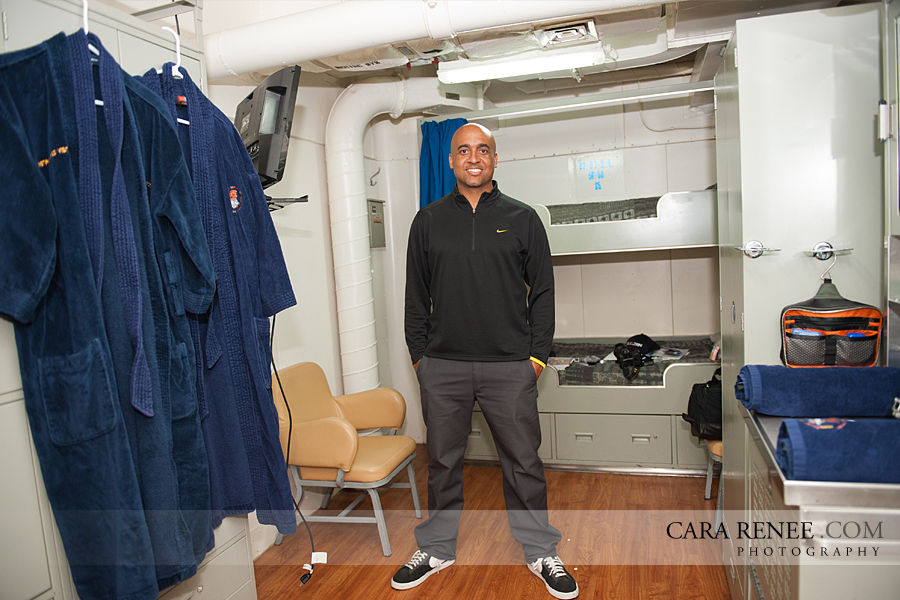
Raymond L Roker, CEO and Creative Director for URB let me snap a quick photograph of his sleeping quarters for our embark. It's about as wide as he is tall.
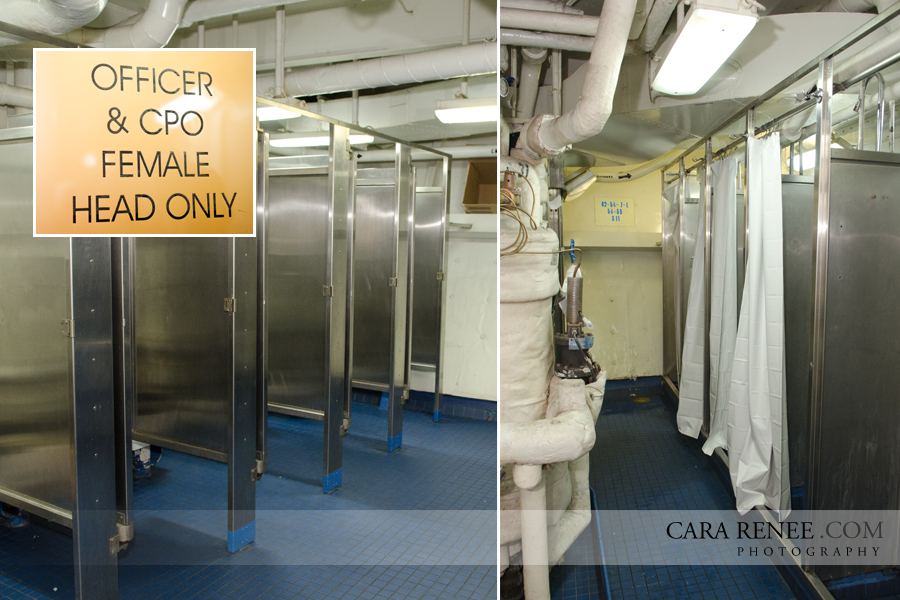
We were able to take a hot showers the next morning before our departure.
These particular showers and restrooms are for female Officers and Chief Petty Officers. You have to climb pretty far up the Navy career ladder to get these accommodations.
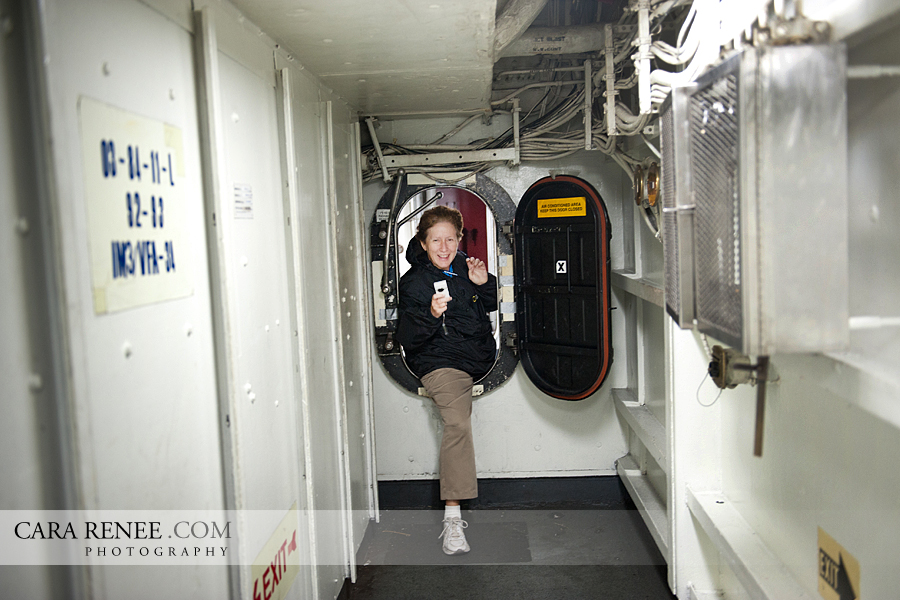
An aircraft carrier is a bit of an obstacle course...Marilyn Terrell, Chief Researcher at National Geographic Traveler navigates through the small doorway with ease.
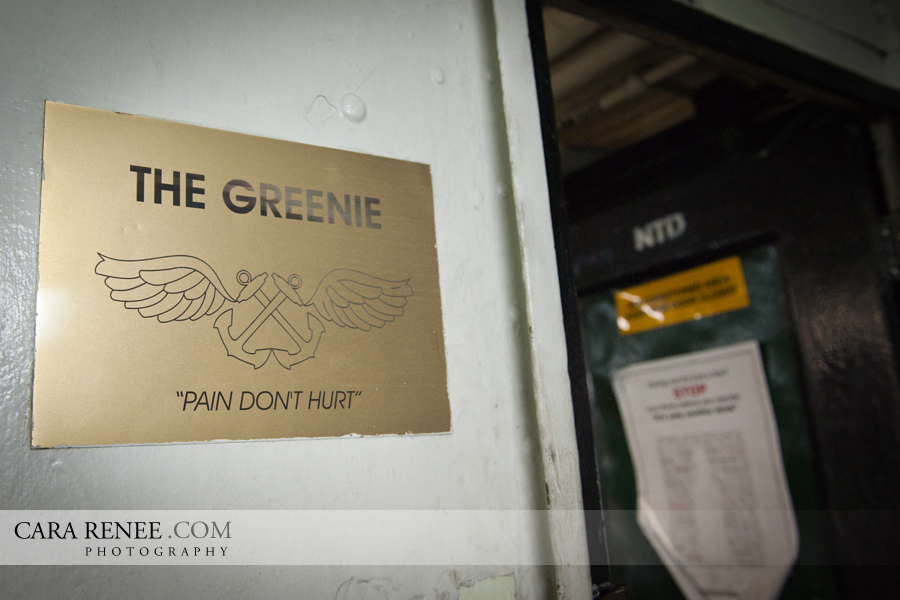
We found an open door.... the Greenies!
How lost could one get on an aircraft carrier? Pretty lost in a matter of minutes.
-
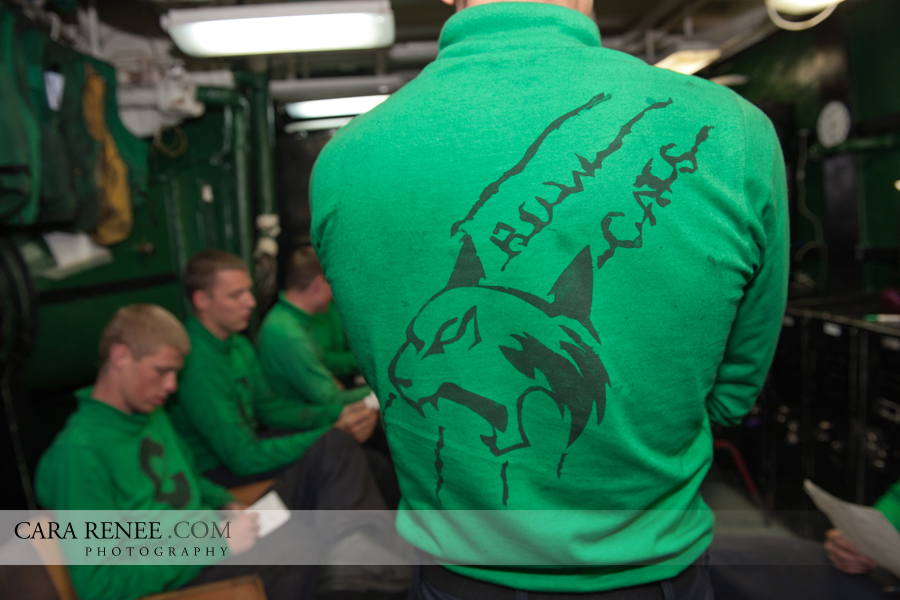
BOWCATS
- We noticed all of them were studying. We spoke with sailors ABE3 Zachary Clayton, AB Marcus Moody and Bow Chief Gabriel Quinlin all very professional and part of this impressive group of young highly motivated individuals working long hours in difficult jobs at all hours of the day or night.
-
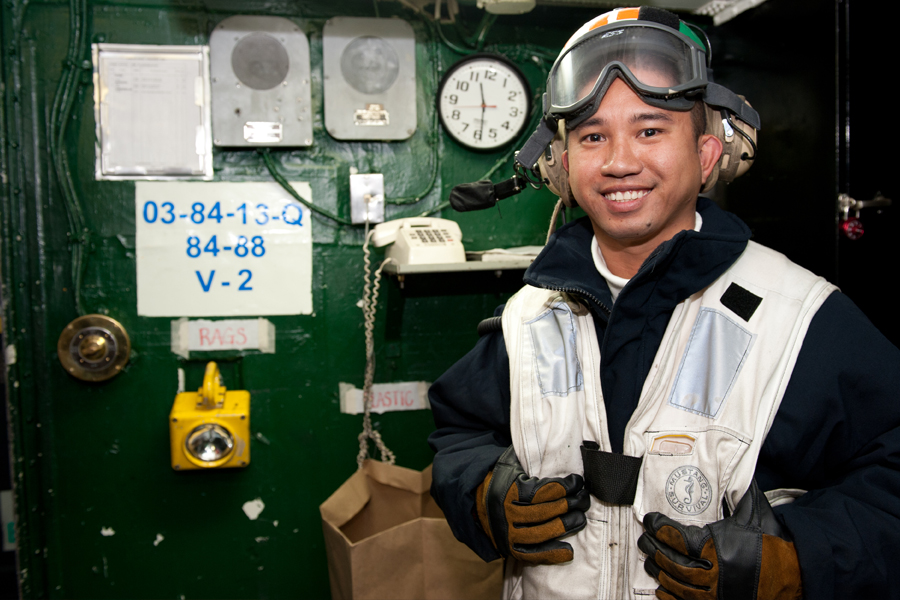
ABE1(AW/SW) Jeff Medina Quality Assurance
- It was 11:30 pm when ABE1(AW/SW) Jeff Medina stopped by to check in with the Greenies an make sure that fellow crew members were studying for their advance placement tests for promotion. It’s not his direct job responsibility, but he cares a lot about the crew and wanted to make sure that they were preparing. It was impressive that he took time out of his day to check back in and make sure that they were doing what they needed to be successful in their Naval careers.
-
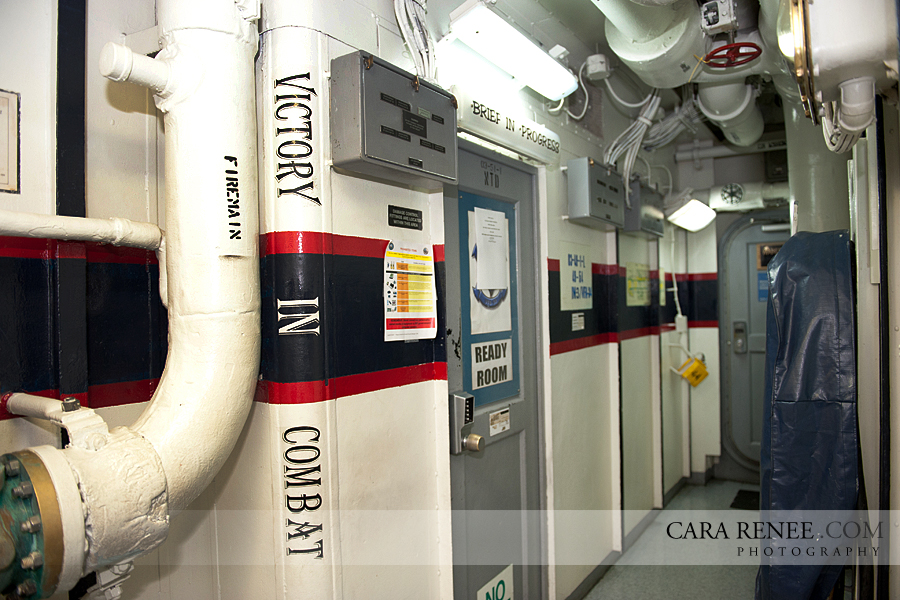
One of the several Ready Rooms on board the USS Abraham Lincoln
- I knew if we found “Ready Rooms ” we might find pilots who could give us a first hand account about landing on an aircraft carrier.
-
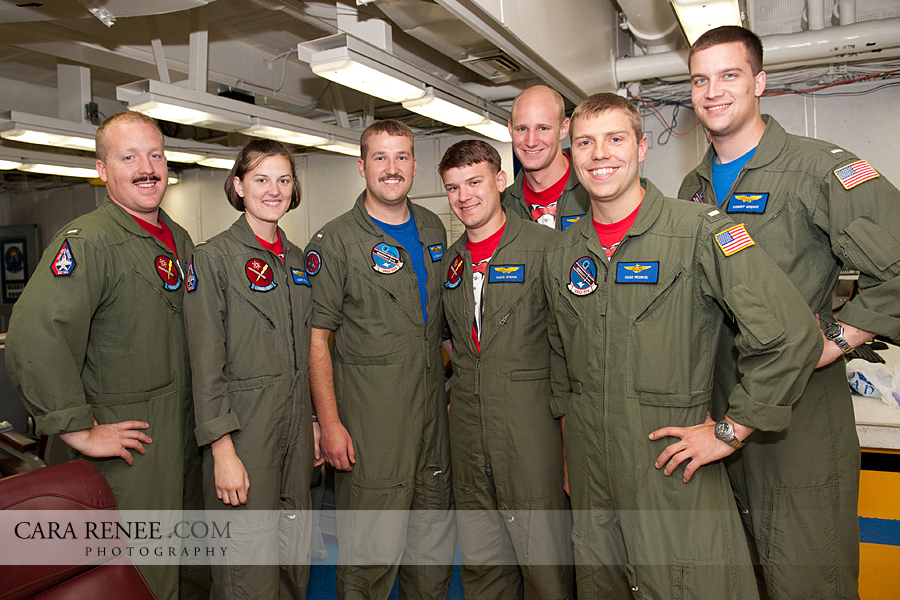
Pilots and Electronic Warfare Officers (EWOs) we watched them land on the carrier earlier during night flight ops.
Finally we found these newly qualified Aviators from Squadron VAQ-129 “Vikings” who fly the EA-18G Growler. The Vikings were exclusively a Prowler Squadron but are currently transitioning to the newer replacement airframe the Growler. They had been on the night schedule and were up for chatting with us about their experiences. It’s a Naval tradition for pilots to grow mustaches when they go to the “boat” to get their carrier “quals”… now that they are “qualed” some had already shaved them off. Thankfully, LTJG Laura Combs walked us back to our quarters so we could prepare for our departure the next morning.
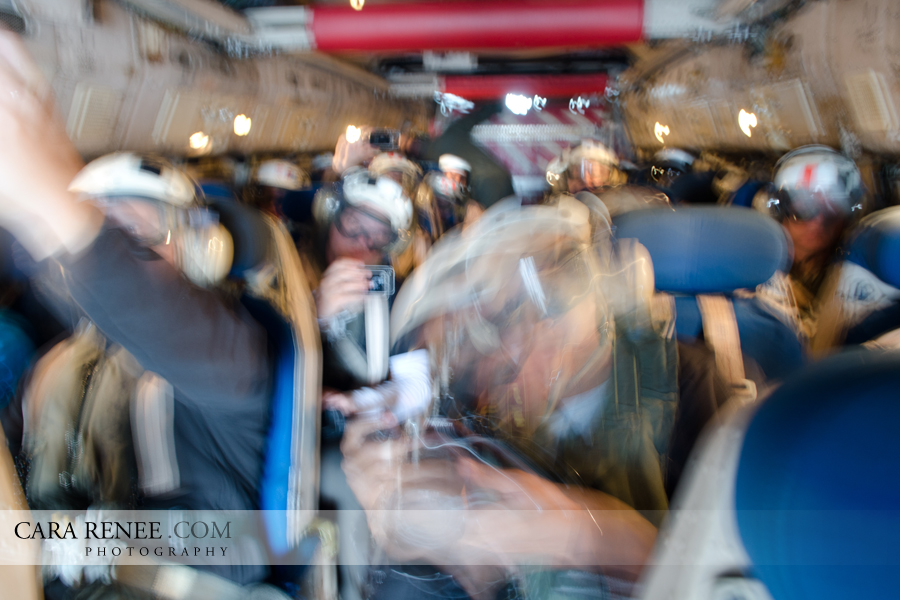
My interpretation of what it feels like to be catapulted in a COD of an aircraft carrier.
All to soon… the whirlwind embark on board the USS Abraham Lincoln was coming to a close. I was very excited about our catapult or “cat” off the carrier still ahead. I had asked the pilots the previous night what should I expect… some say it’s like a roller coaster. It’s really hard to explain… it happens so fast. Once again, I was surprised that is was remarkably smooth, with just as the pilot rotated off the end of the carrier, climbing to altitude as we headed back to San Diego.
A truly amazing experience and so much fun! We all wanted the COD to turn around and do it again.
1316022108
600
900
600
900
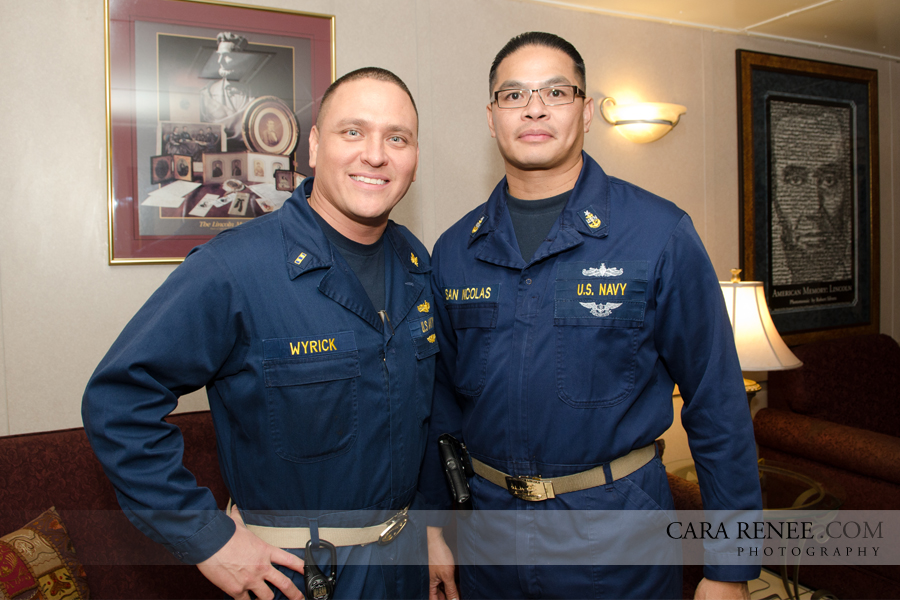
Photo documenting the men and women of our military and sharing their stories is one of the amazing opportunities that being a photographer has afforded me. I have meet some impressive individuals that are able to come together, function cohesively usually in harsh environments and perform extraordinary tasks. Observing the dynamics of the crew aboard the USS Abraham Lincoln is inspiring, and I enjoyed being able to share the story through the lens of my camera. After sorting through thousands of images this is just a small sampling of what I captured in my short stay aboard the USS Abraham Lincoln. There is so much more to see and so many more stories to tell.
There are several people to thank for providing this opportunity to photo document a day at sea aboard the USS Abraham Lincoln.
Rear Admiral Troy Shoemaker, thank you for hosting the Distinguished Vistor program and providing a tremendous opportunity to experience a typical day in the life of the Navy and Marines first hand. Captain Alexander, thank you for letting us come visit the ship and crew aboard your “home away from home”, the USS Abraham Lincoln, Captain Kuehhas, thank you for hosting a wonderful dinner and to LCDR Steve Curry and staff, I appreciate your generous time escorting us around. To Steve Fiebing and LT Aaron Kakiel, thank you for coordinating the details and logistics of our embark. Special thanks Dennis Hall and Guy Kawaski for nominating me to the Distinguished Visitor program. What an amazing experience! If you would like to read about other embarks, please visit Dennis and Guy’s blogs.
And finally, to the impressive, dedicated, and hardworking sailors onboard the USS Abraham Lincoln, thank you for your time and service to our country.
Dennis Hall
Blog: AvereGroup.WordPress.com
Guy Kawasaki
Blog: GuyKawasaki.com
© Cara Renee Photography All rights reserved. None of these images are in the public domain. Please see Copyright information or contact me at cara@cararenee.com
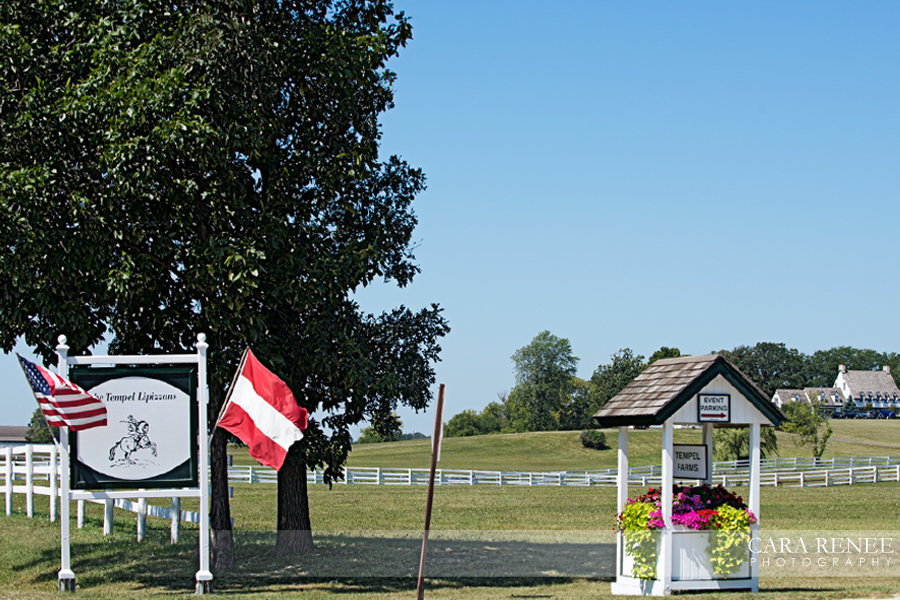

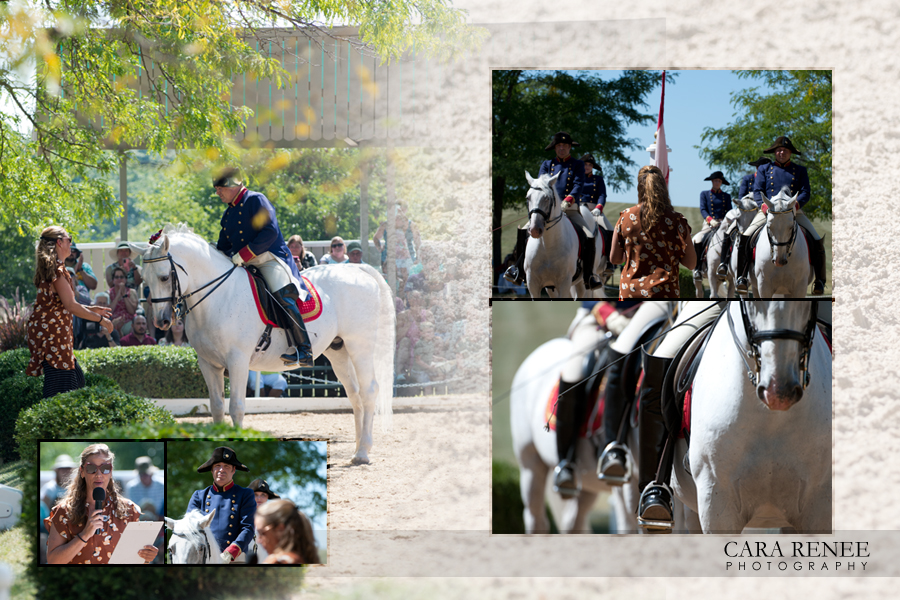
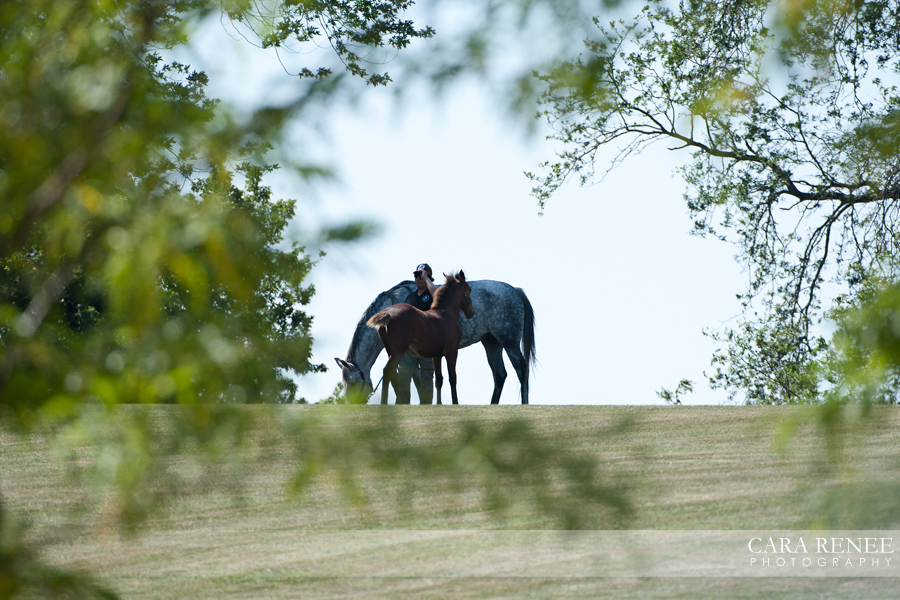
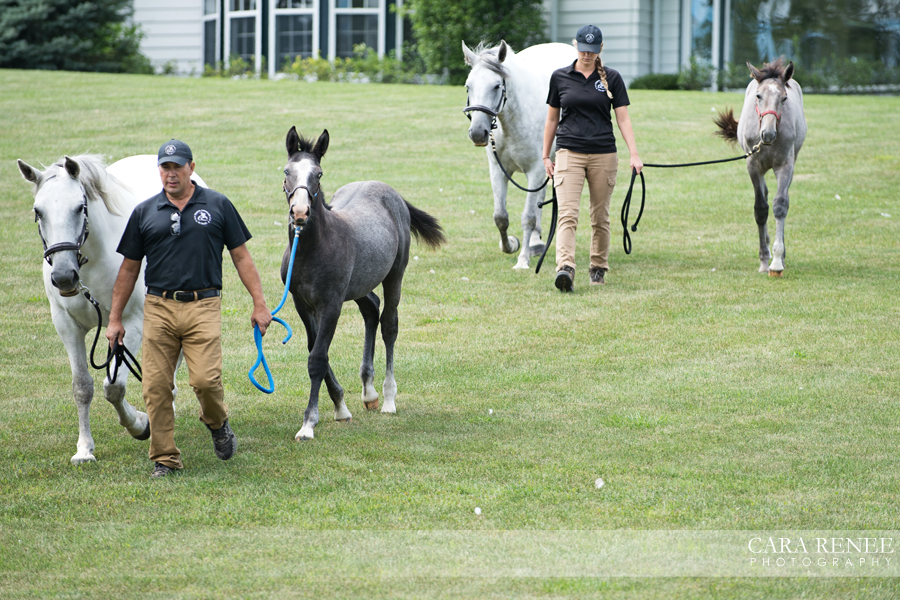
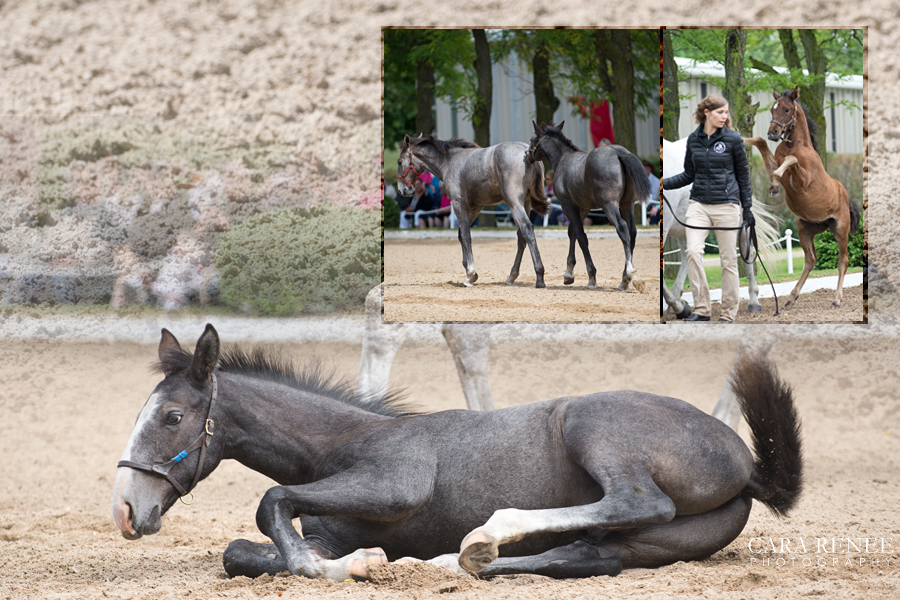
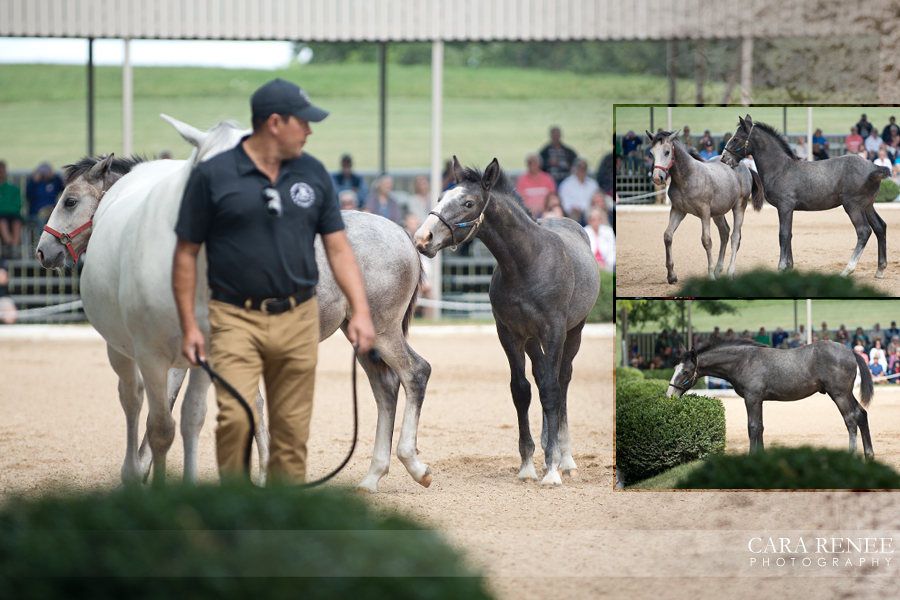
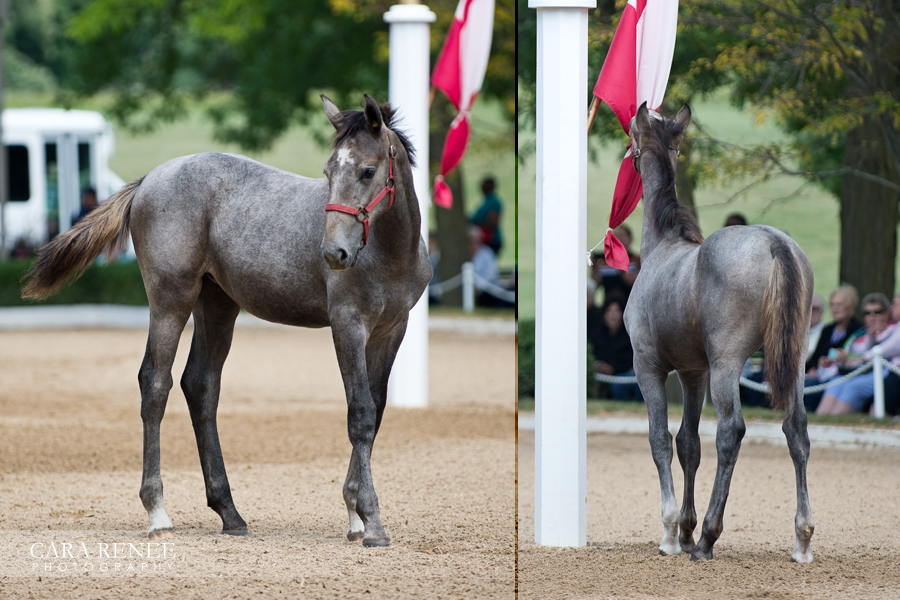
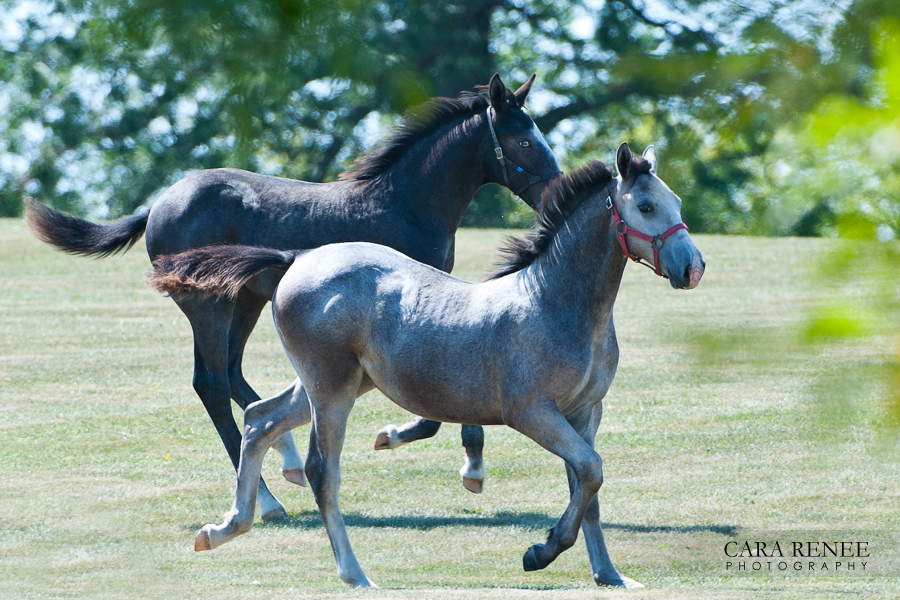
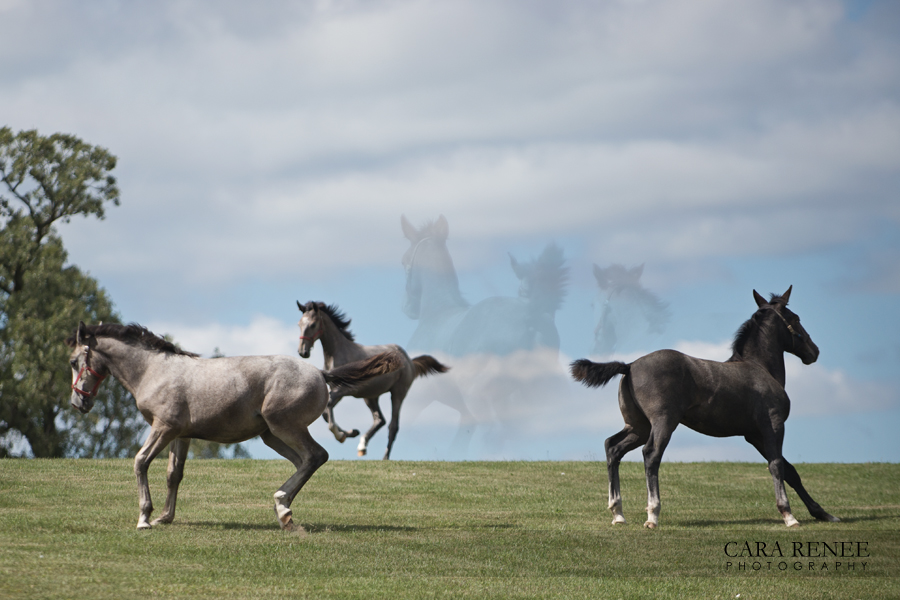
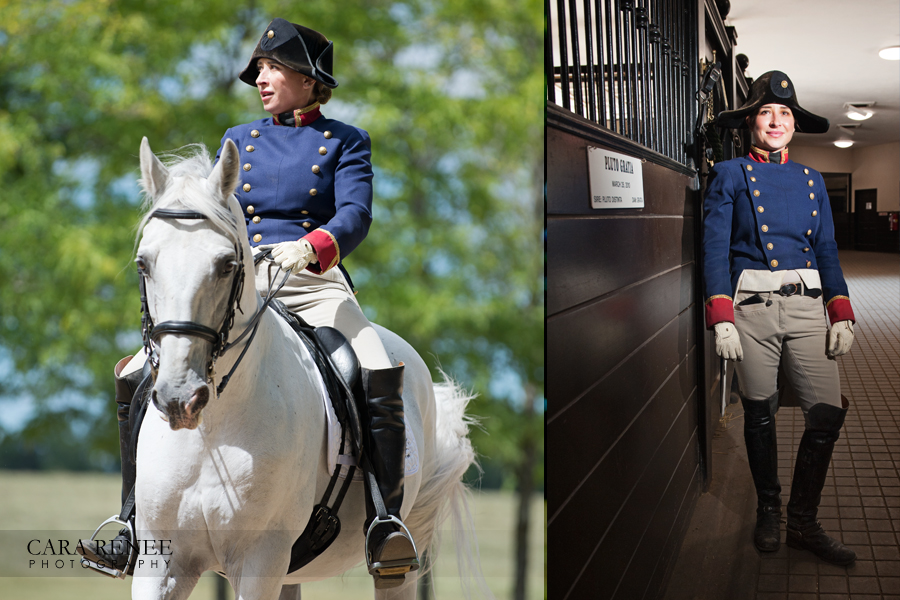
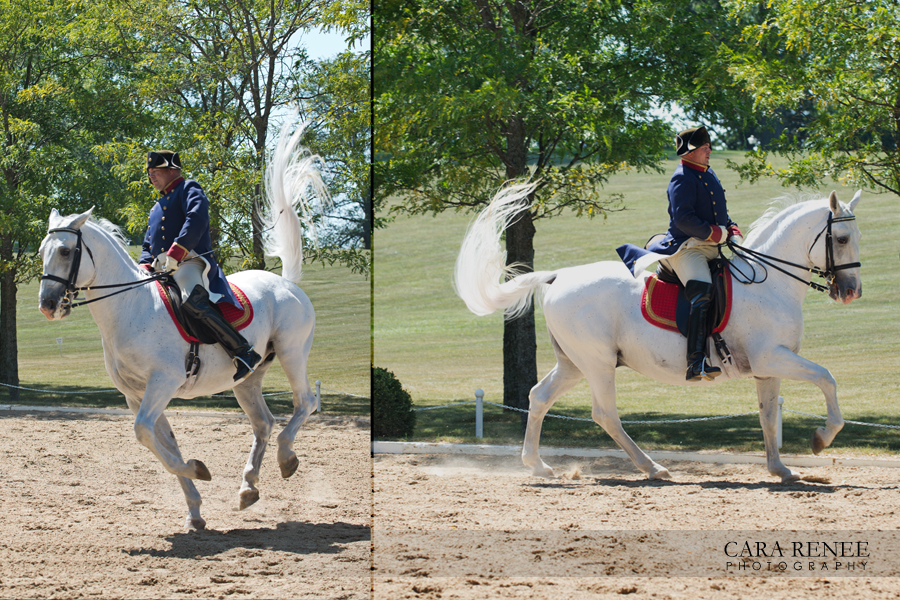
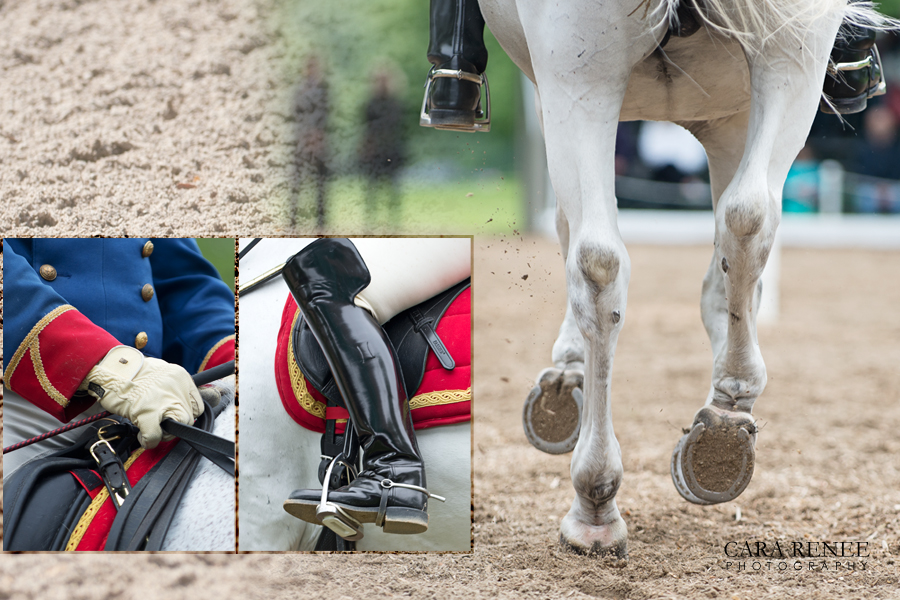
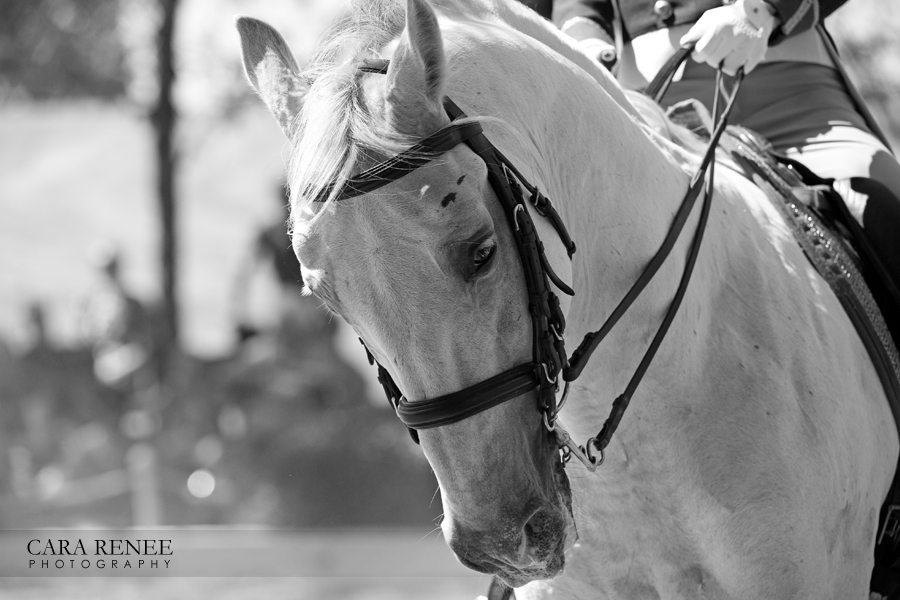
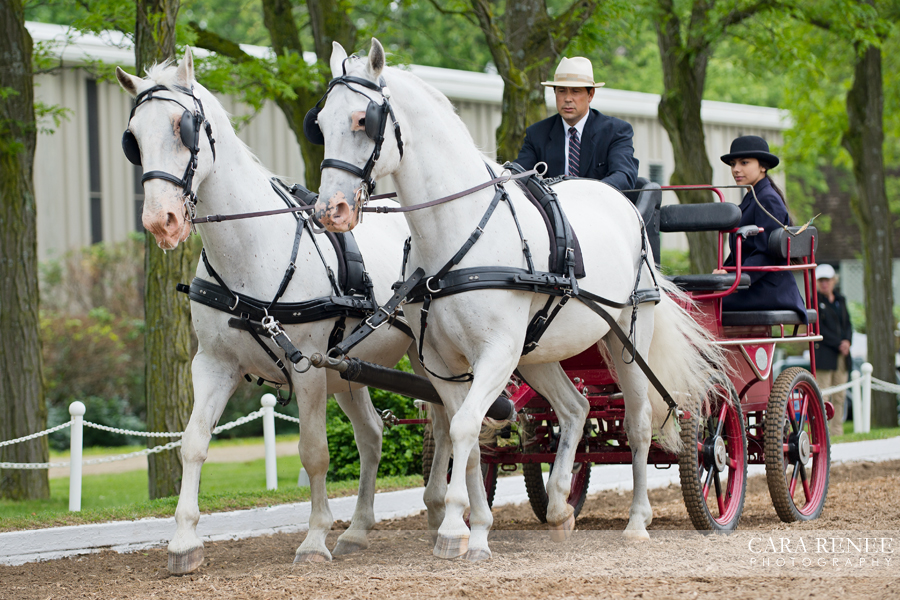
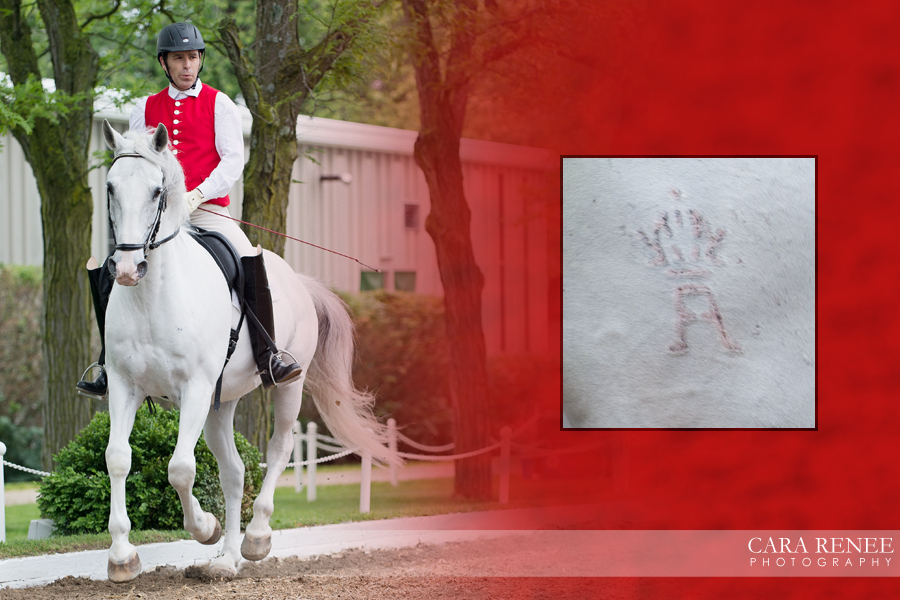
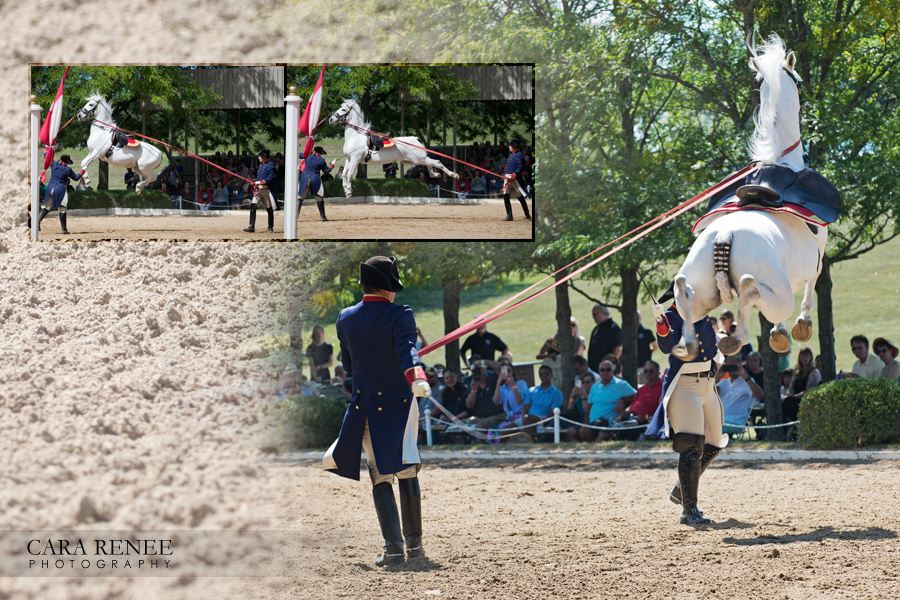
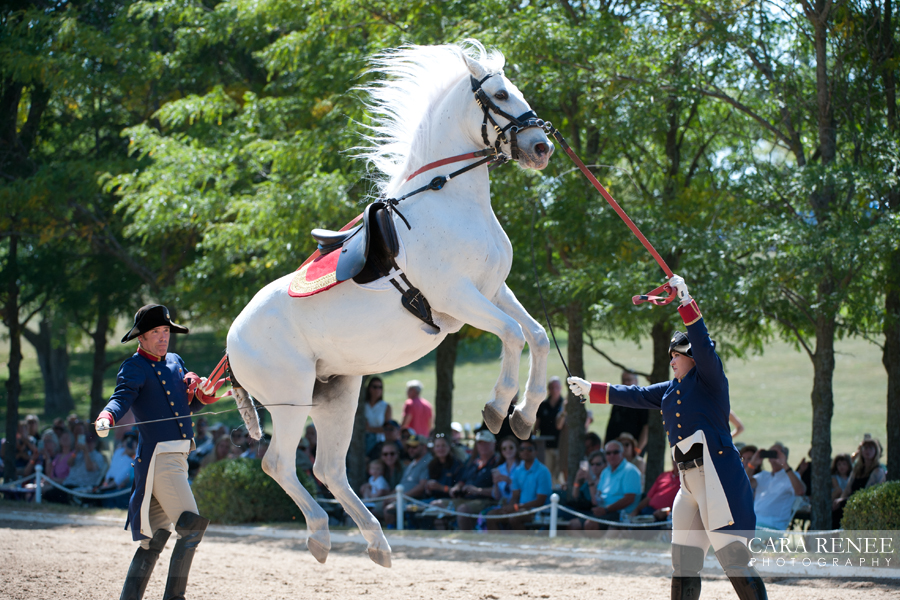
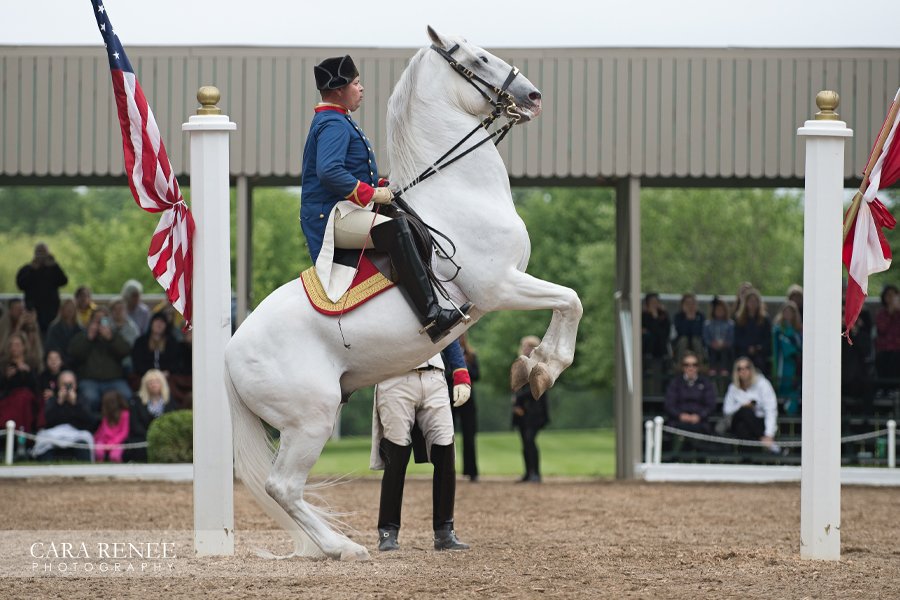
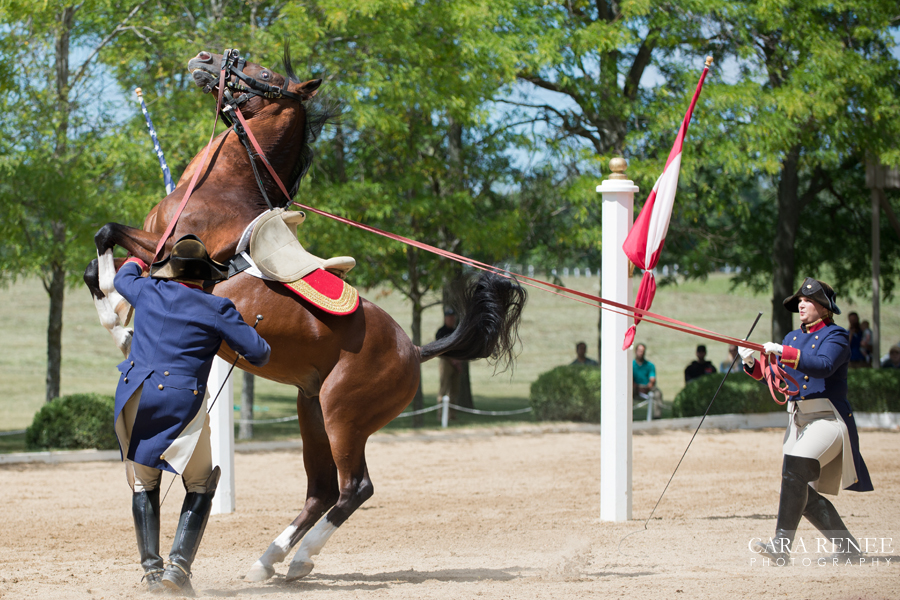
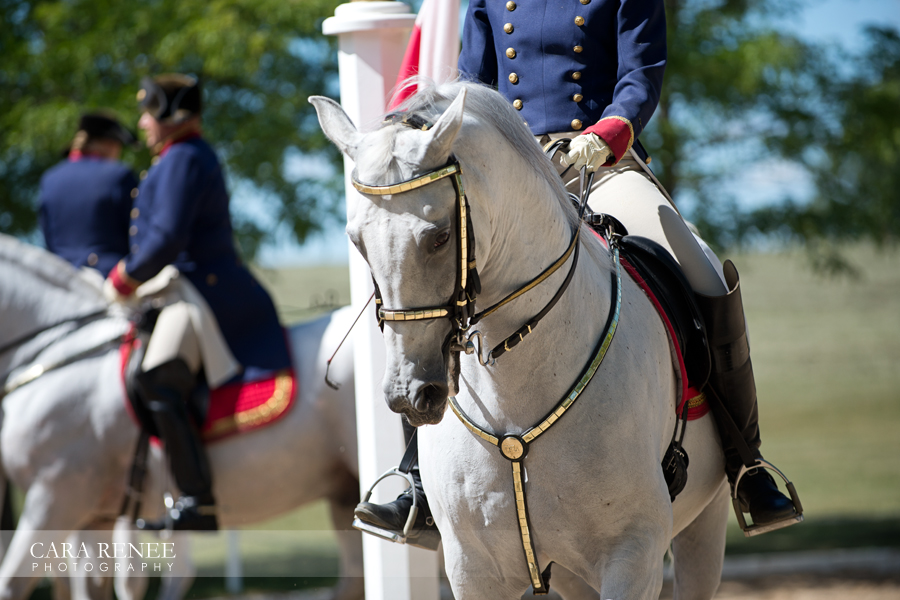
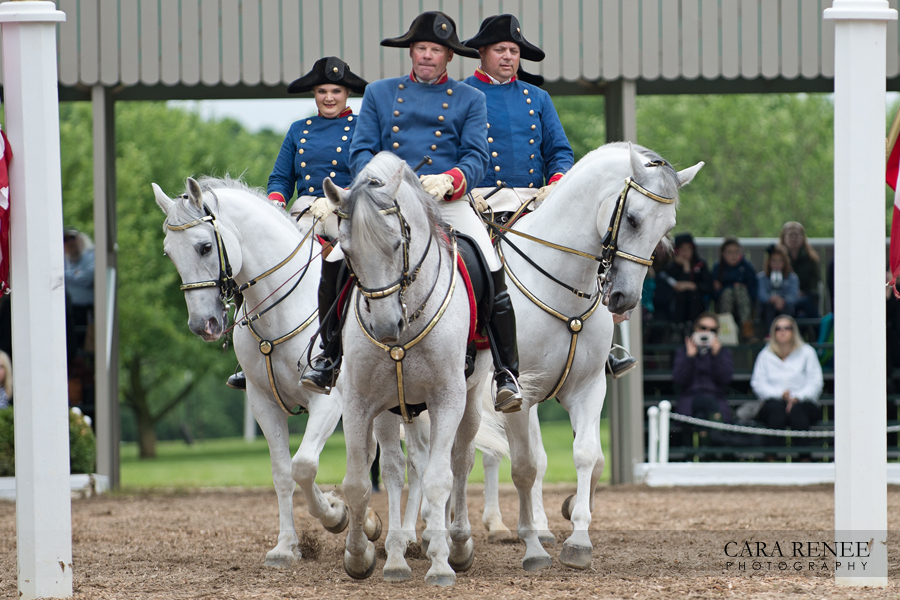
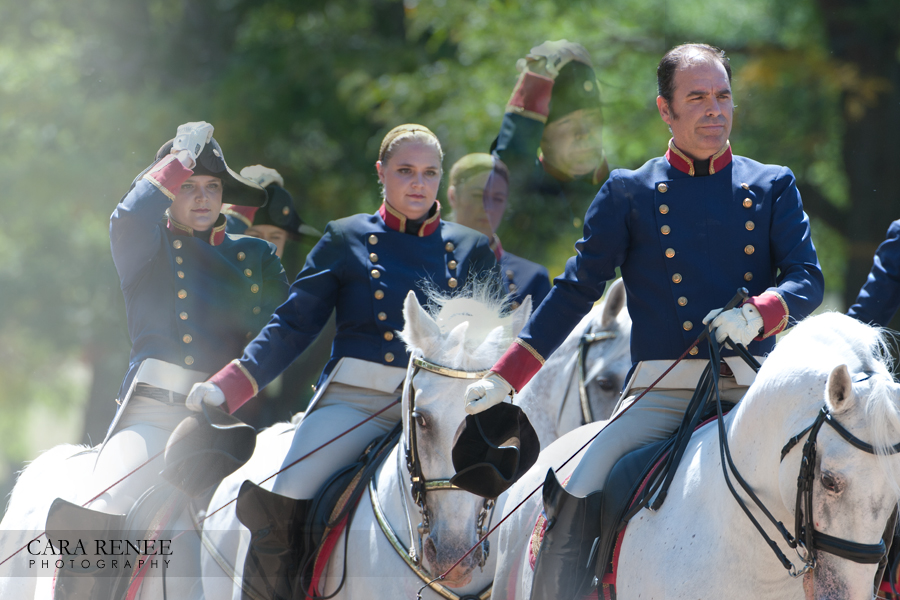
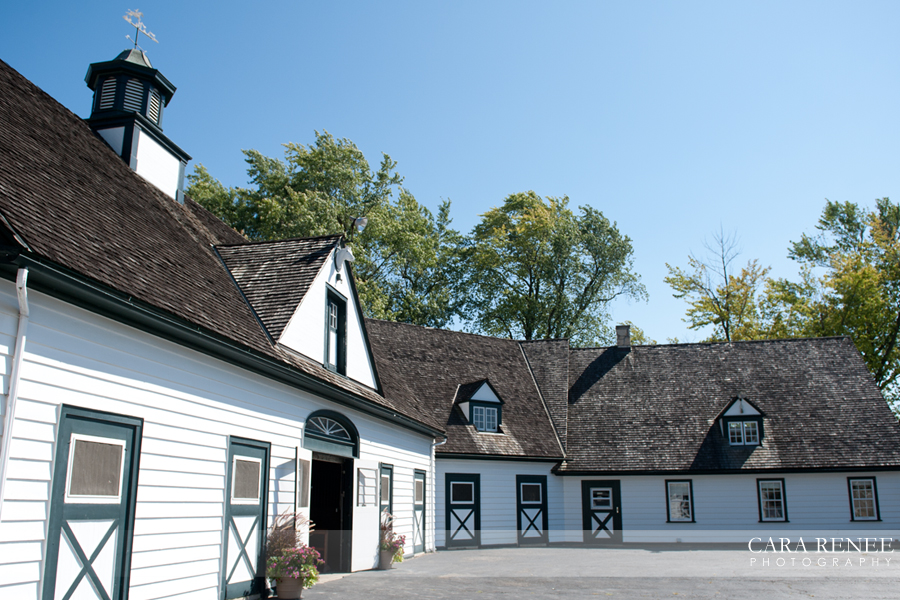
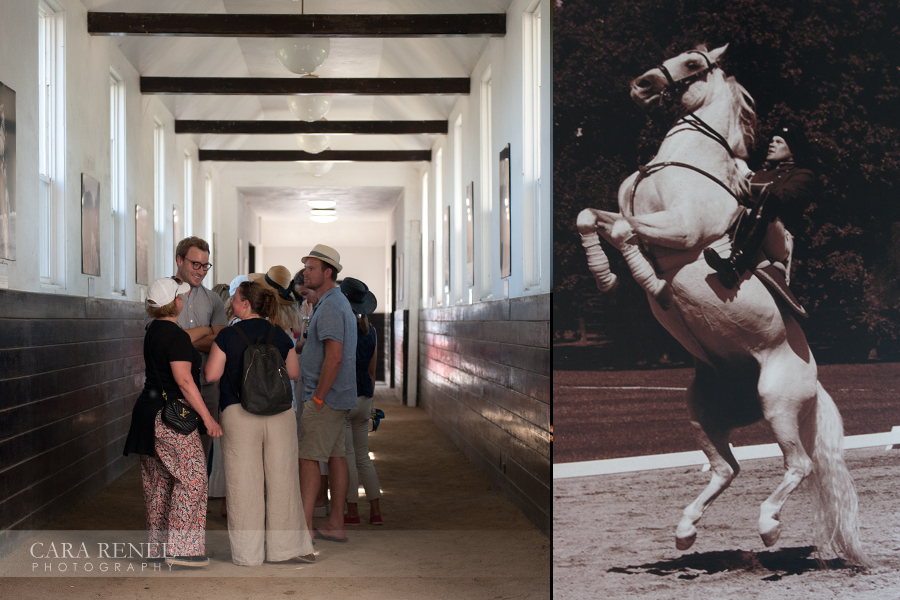
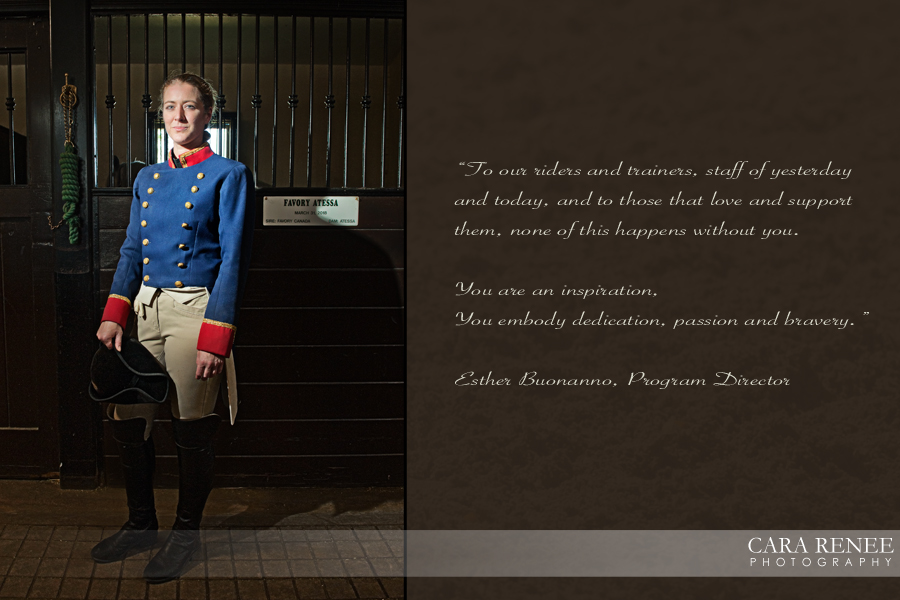
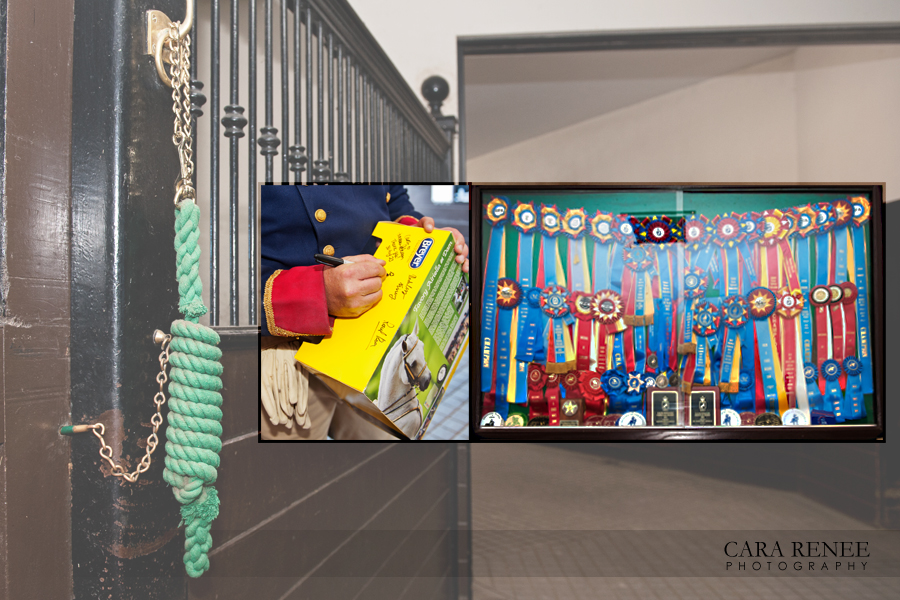
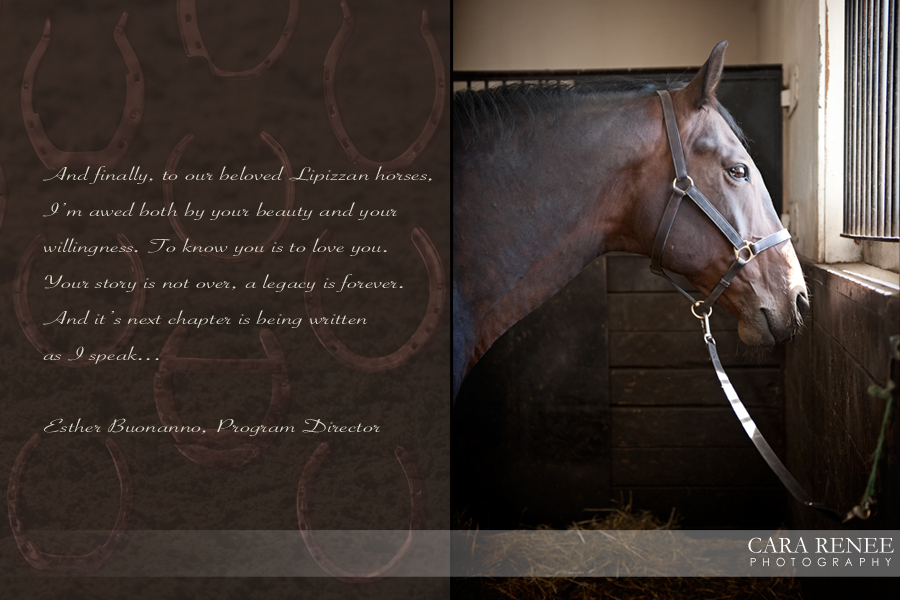
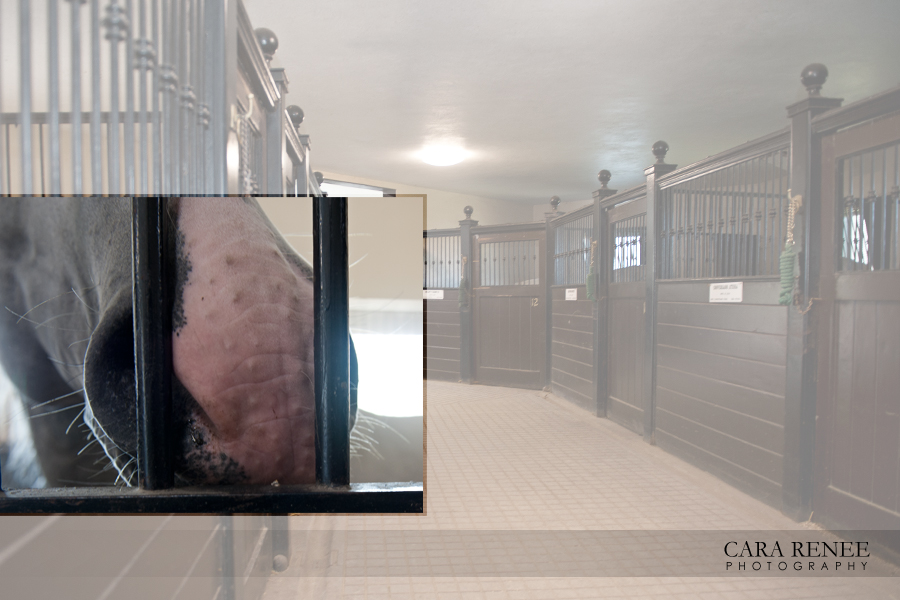
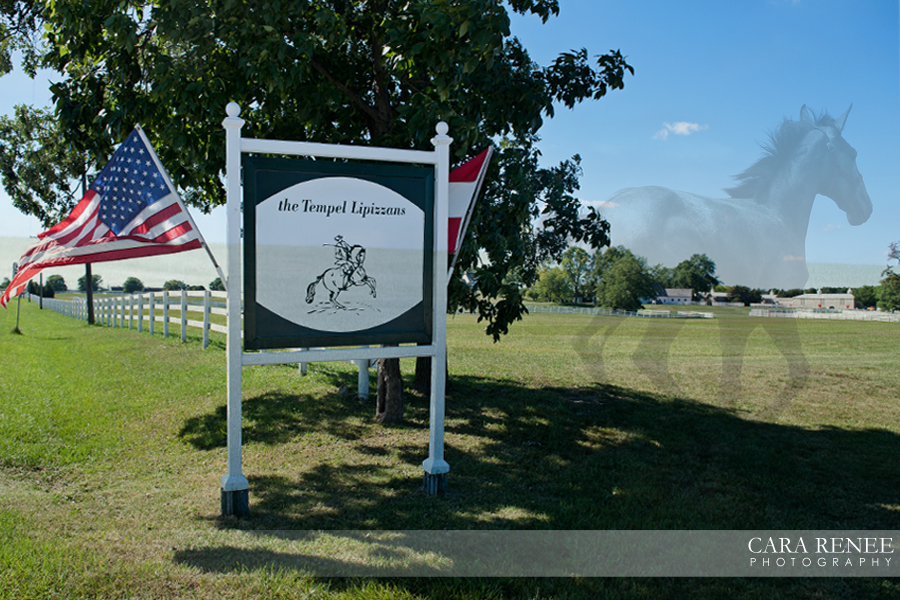
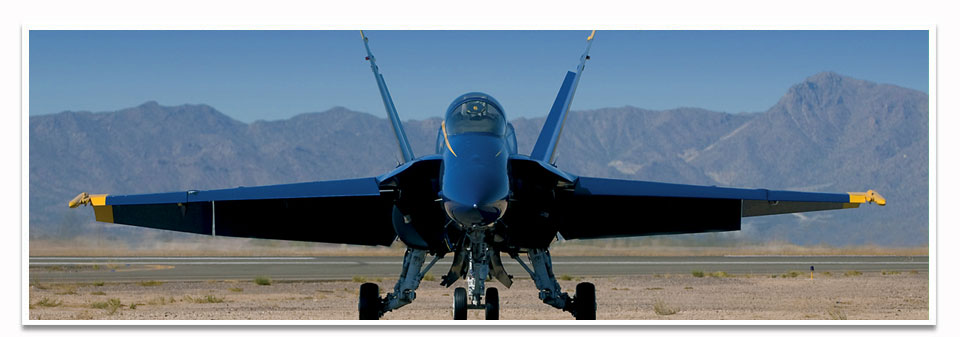

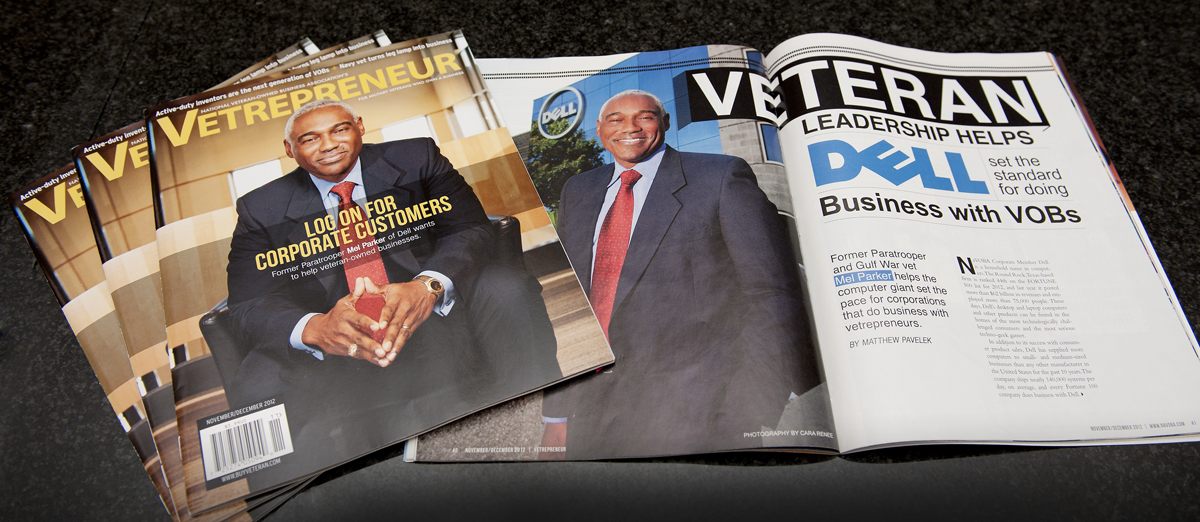 Vetrepreneur is a magazine that focuses on military veterans who own a business. I traveled just outside of Austin, Texas to photograph
Vetrepreneur is a magazine that focuses on military veterans who own a business. I traveled just outside of Austin, Texas to photograph
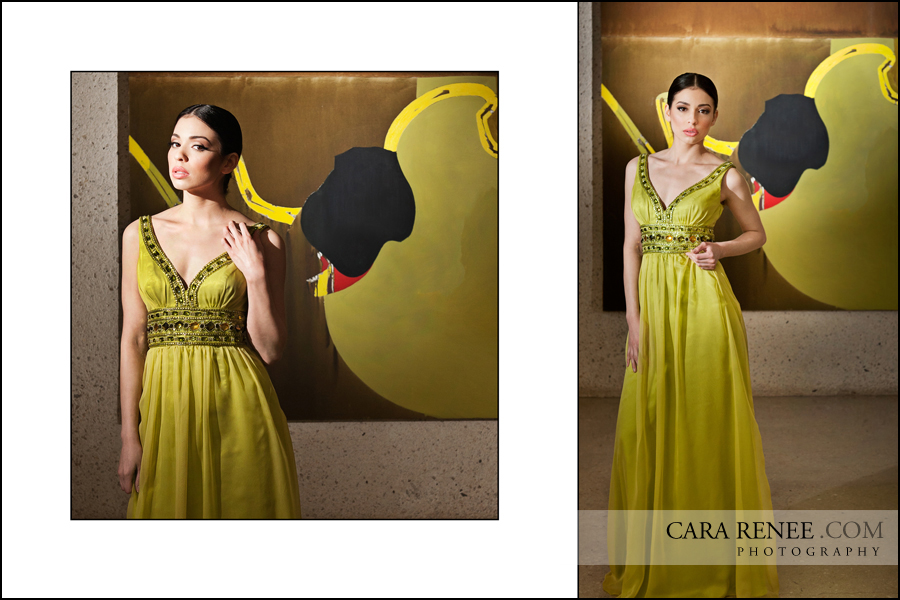

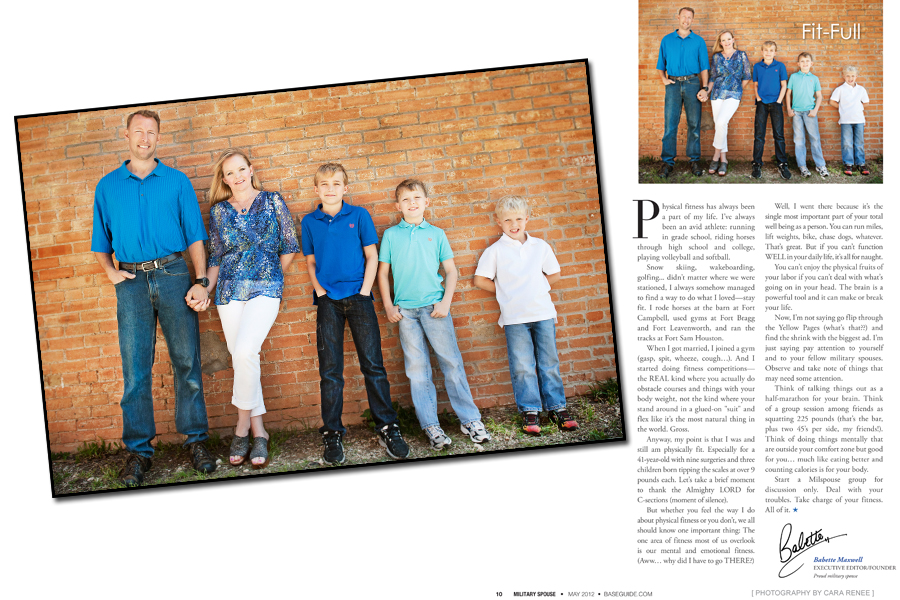
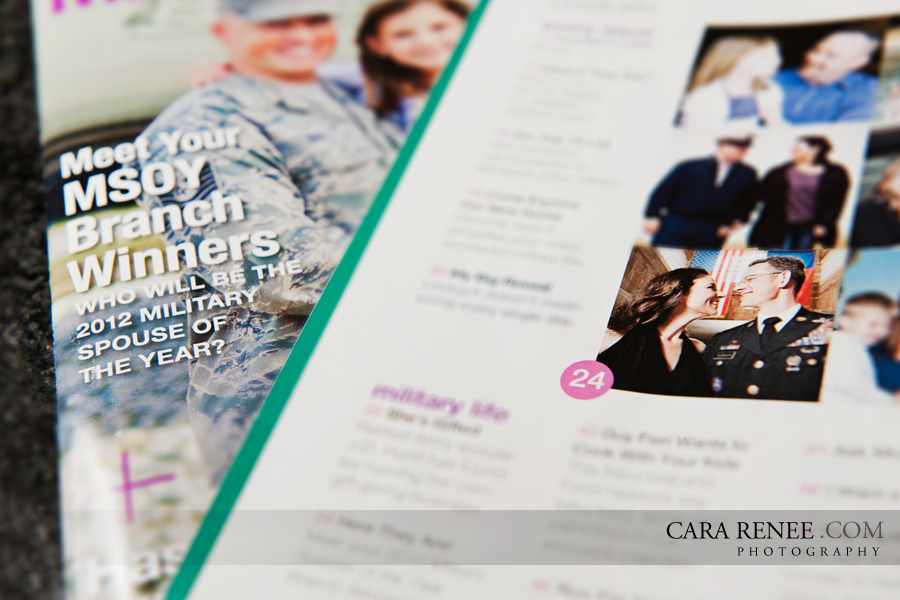
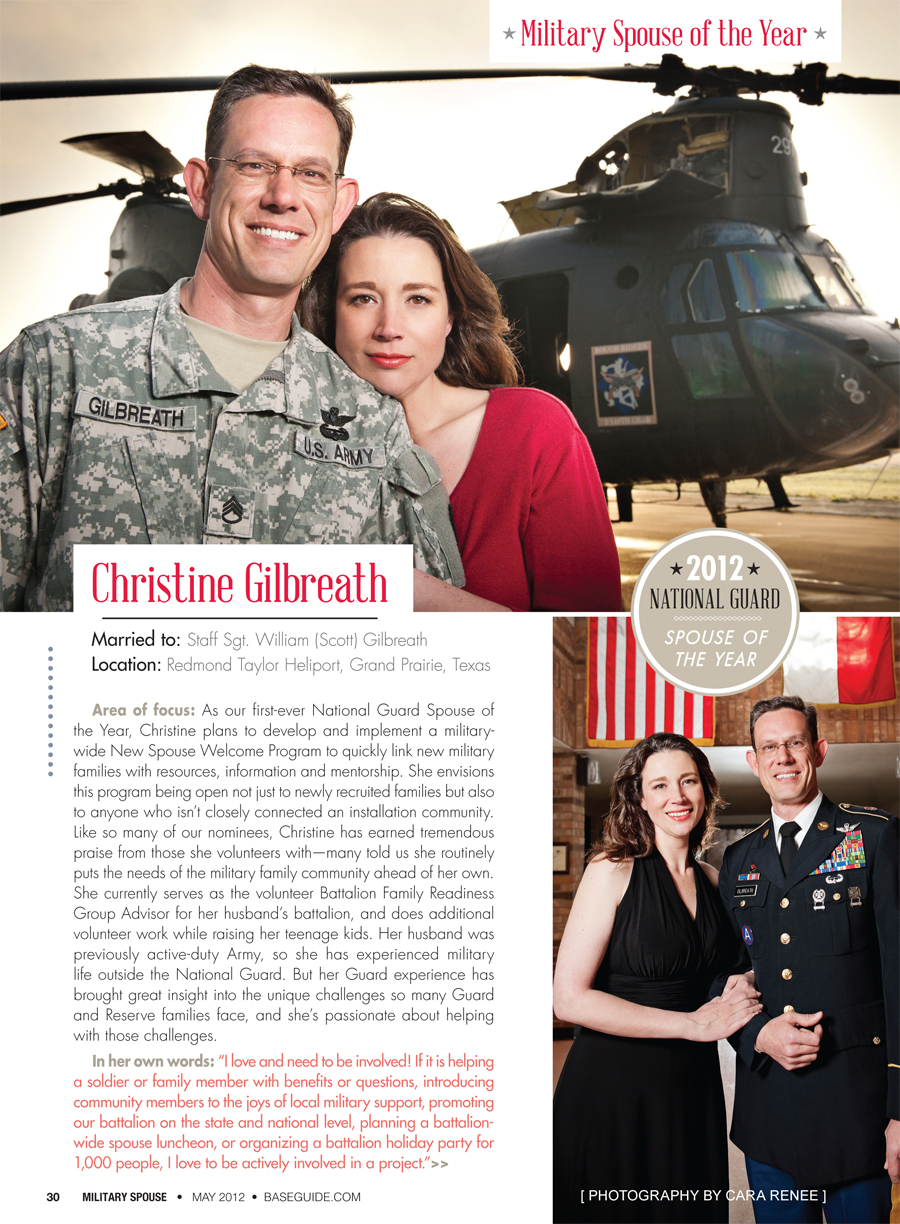
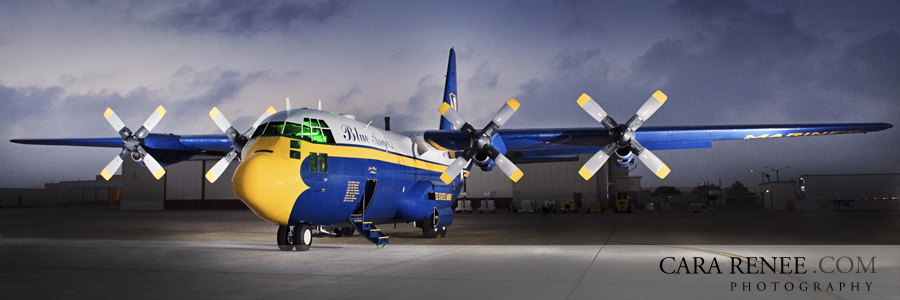
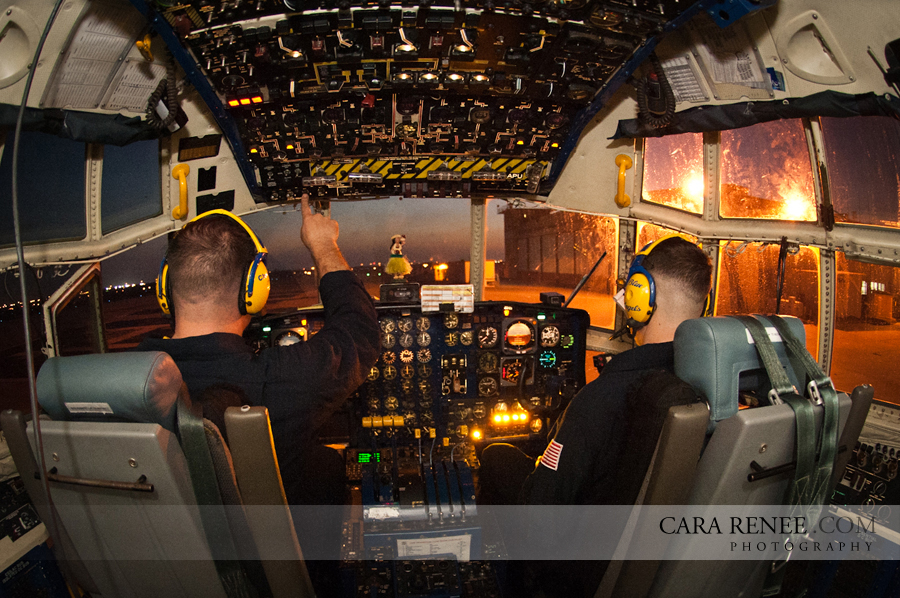
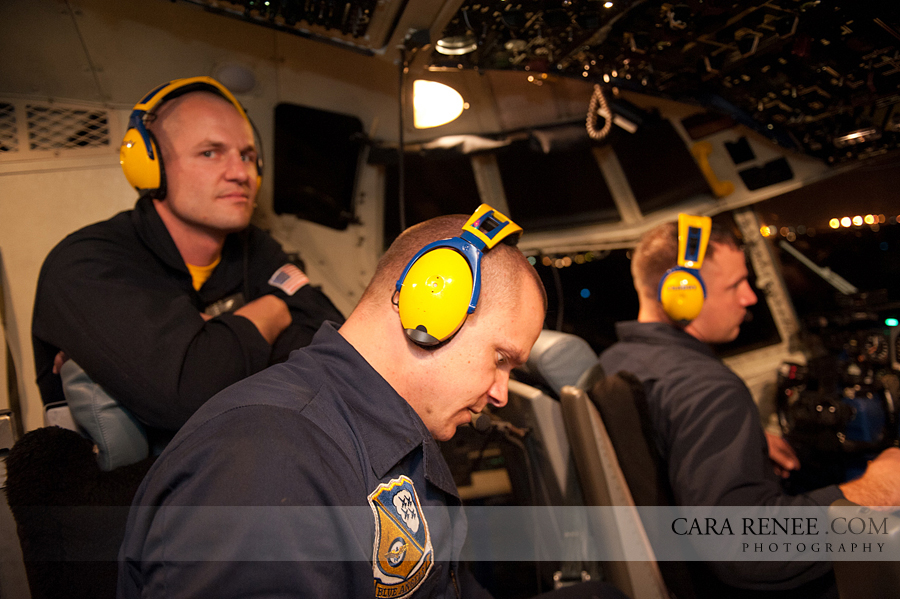
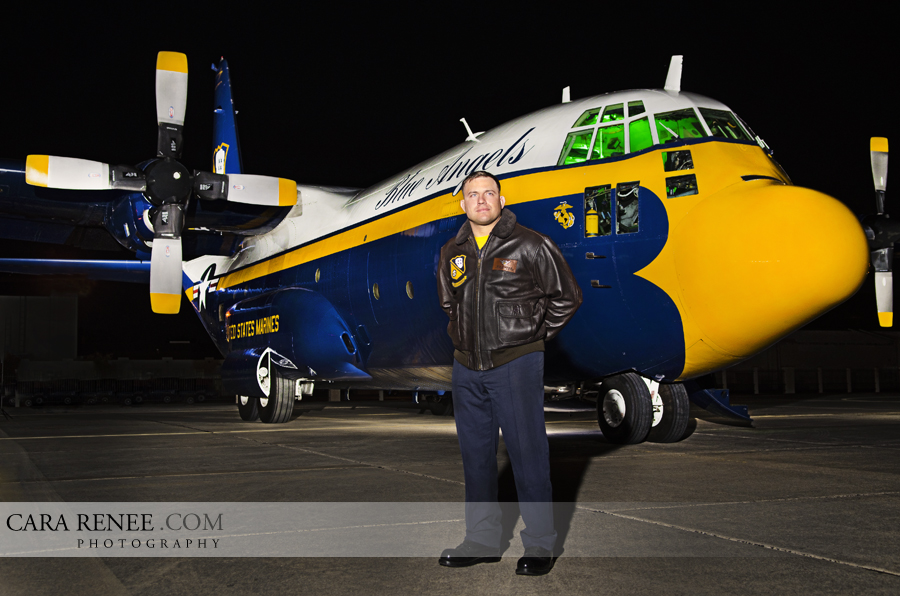
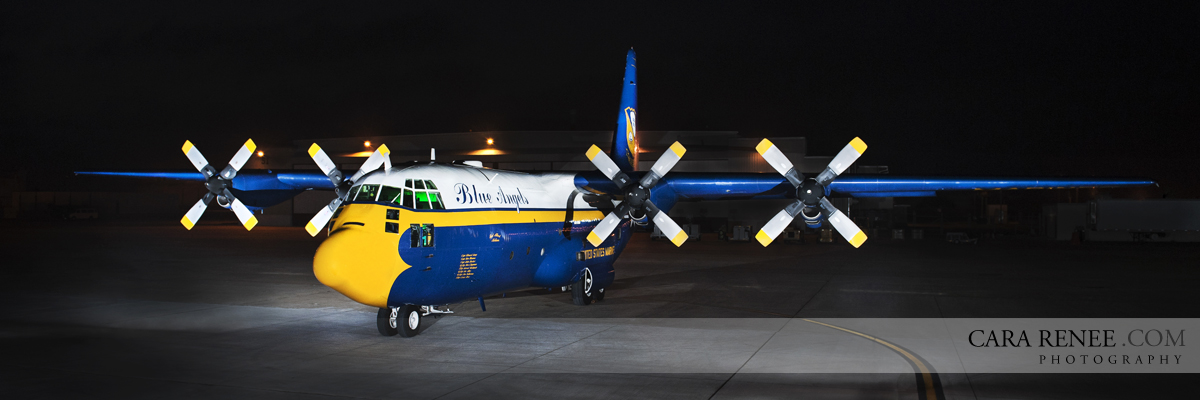






























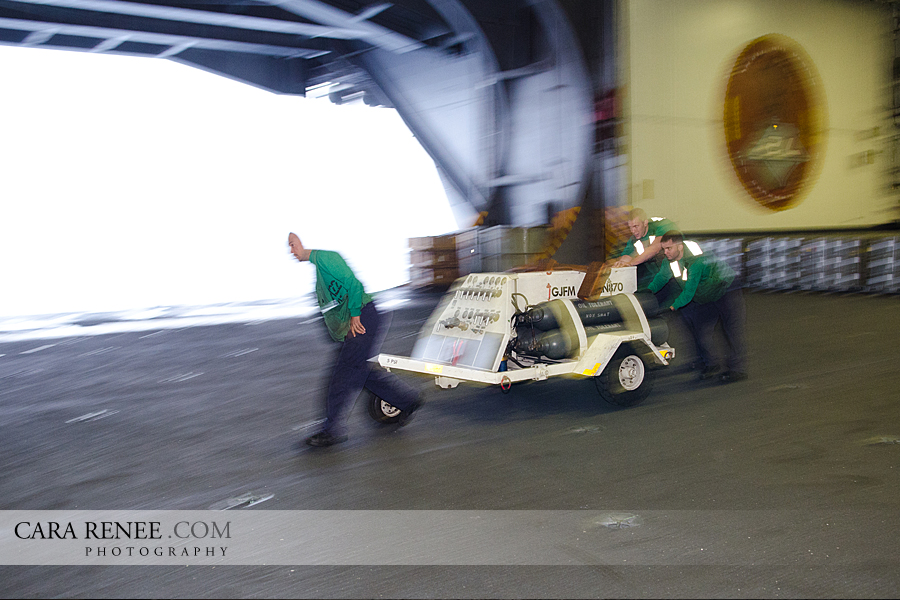













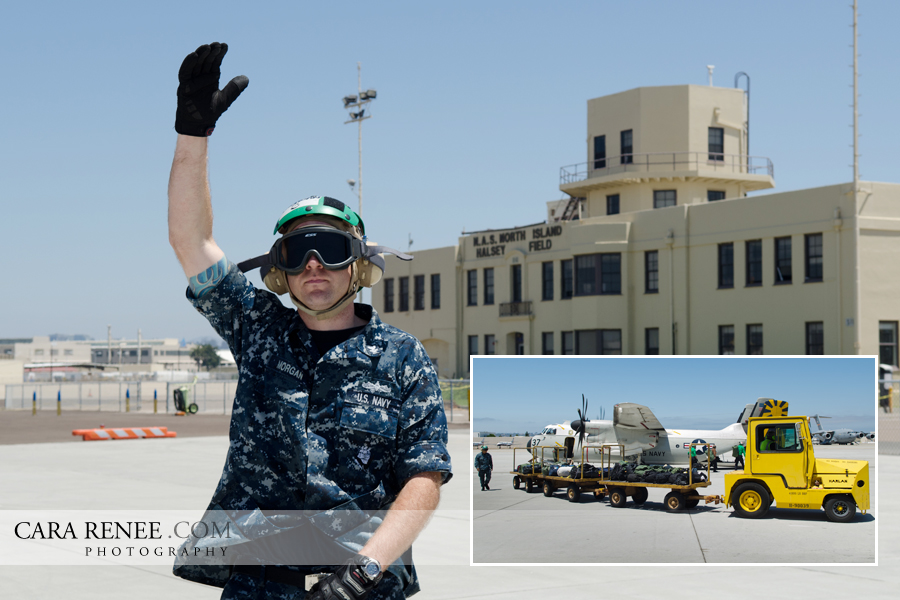


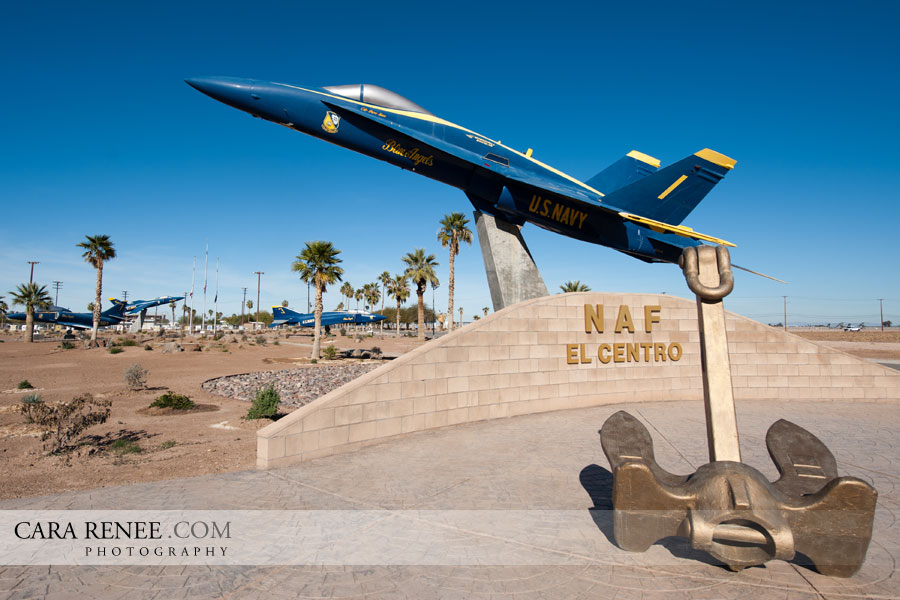
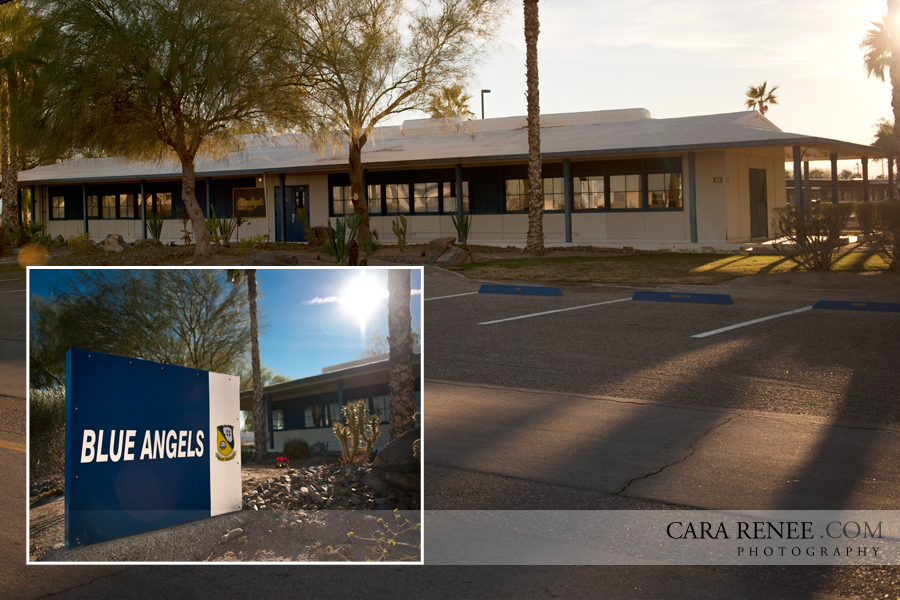
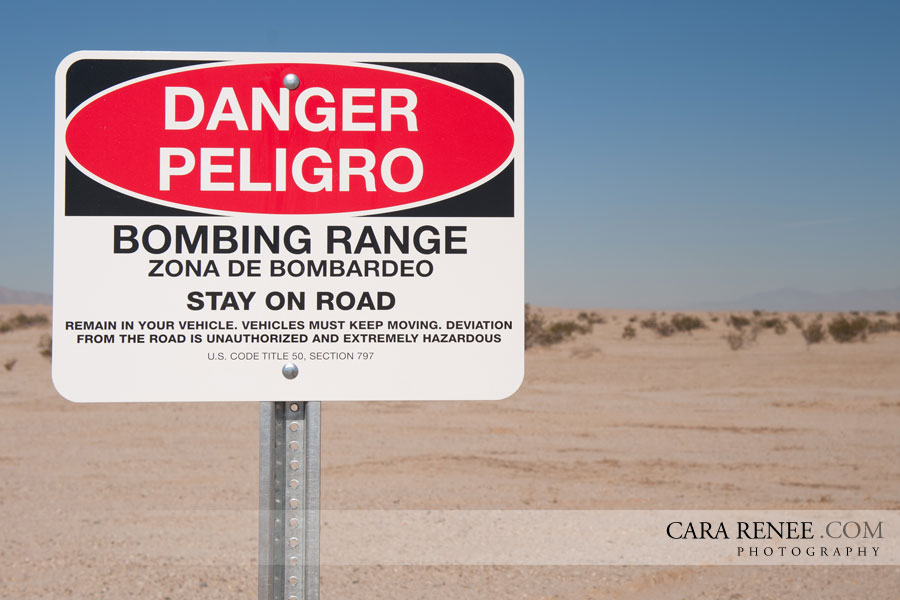
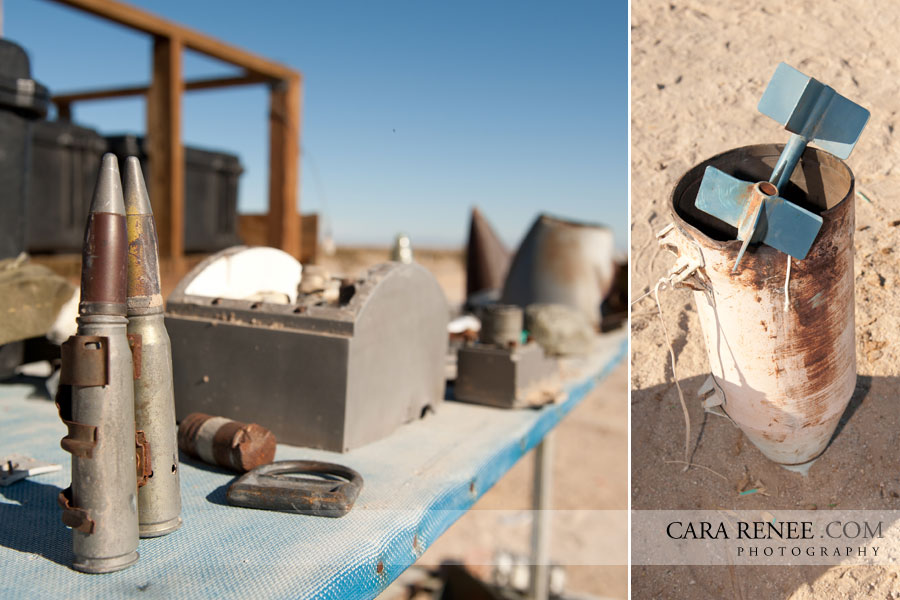
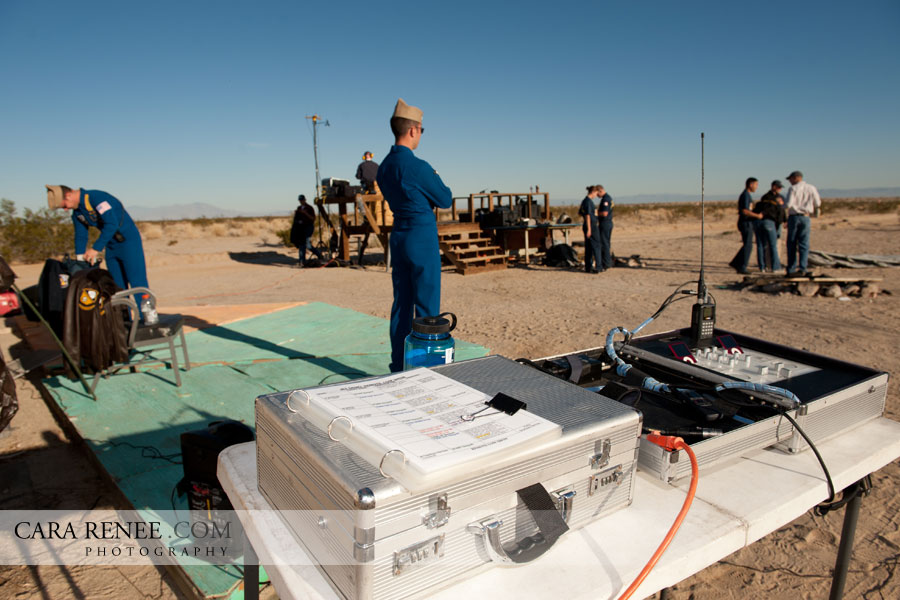
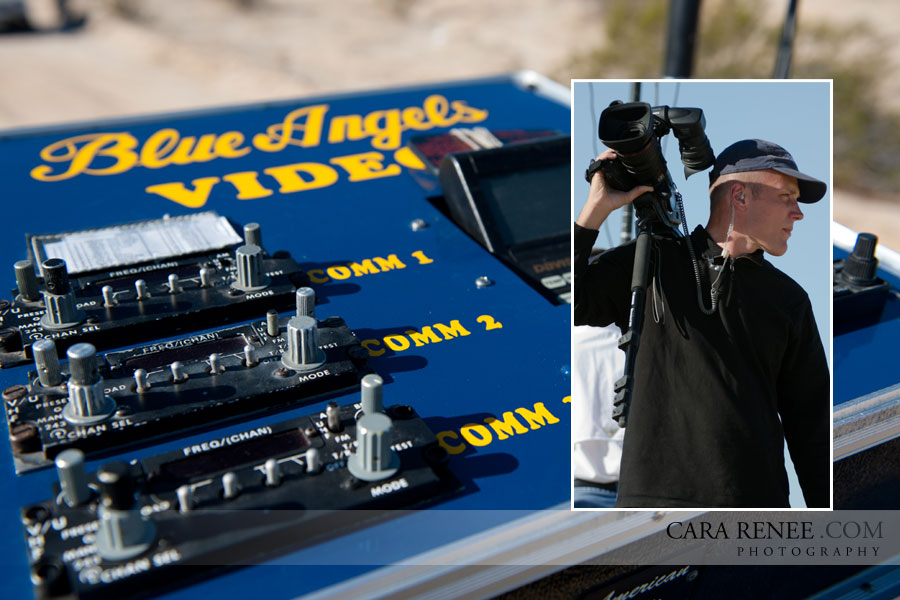
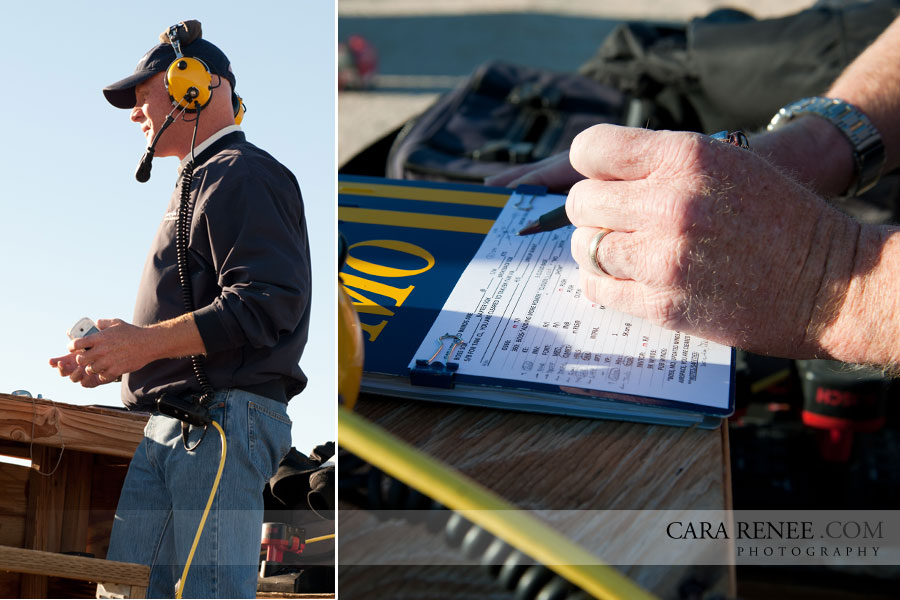
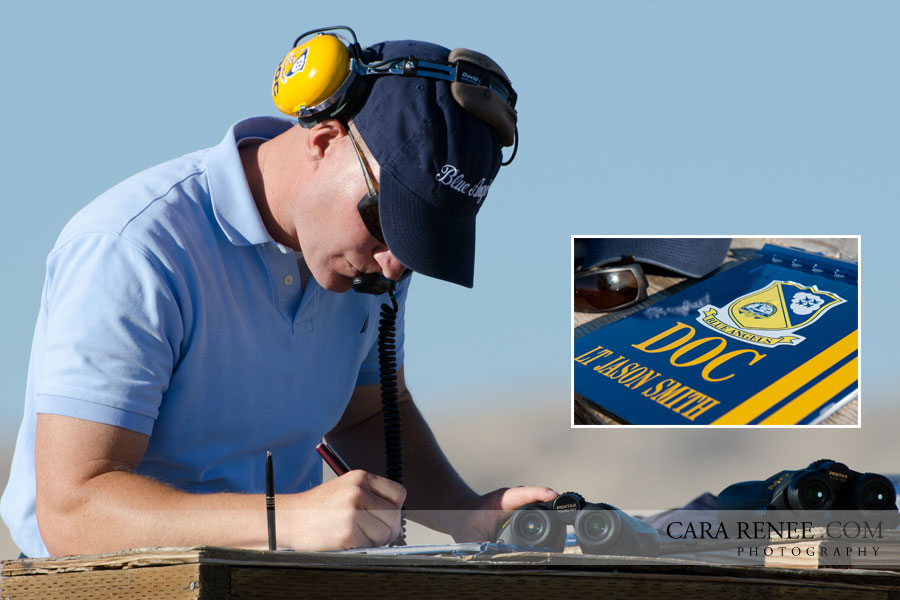
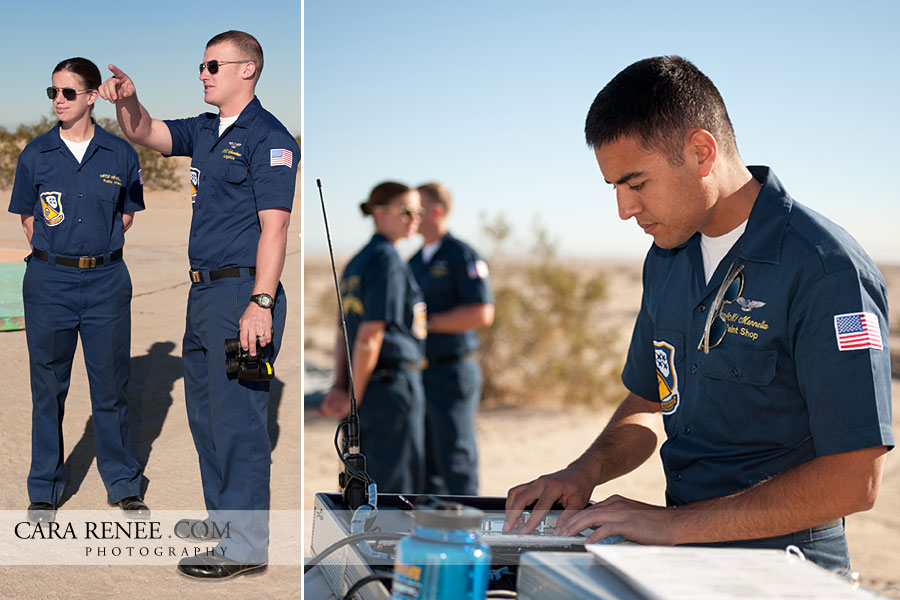
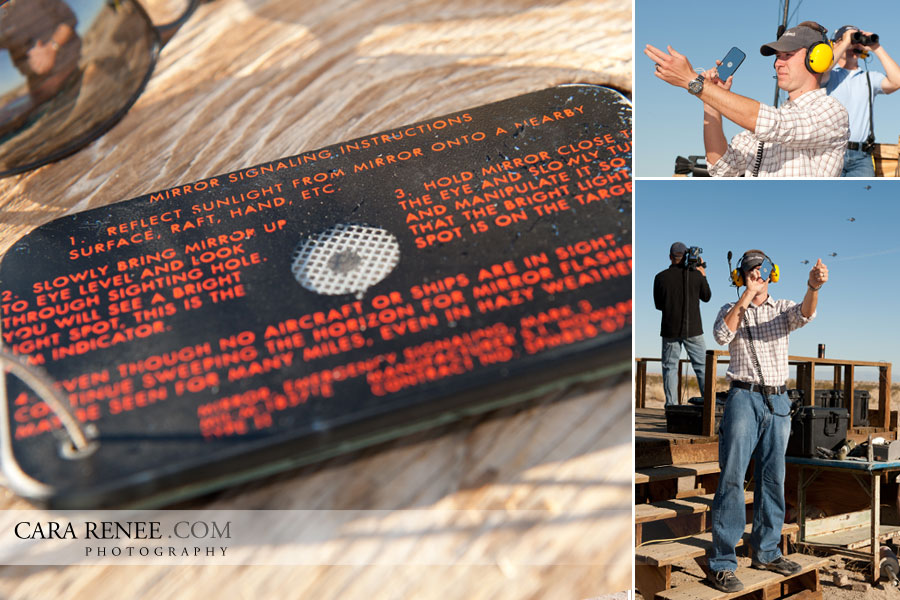
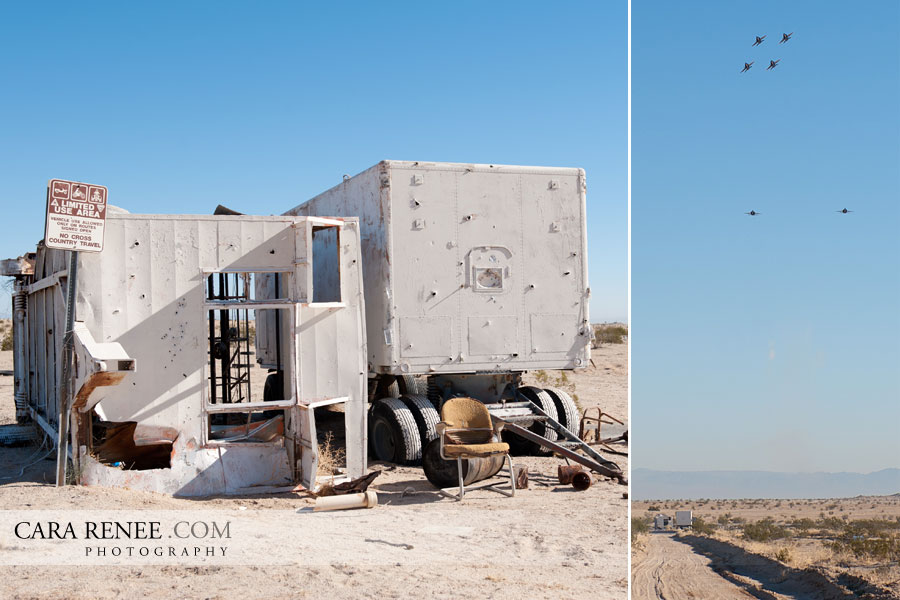
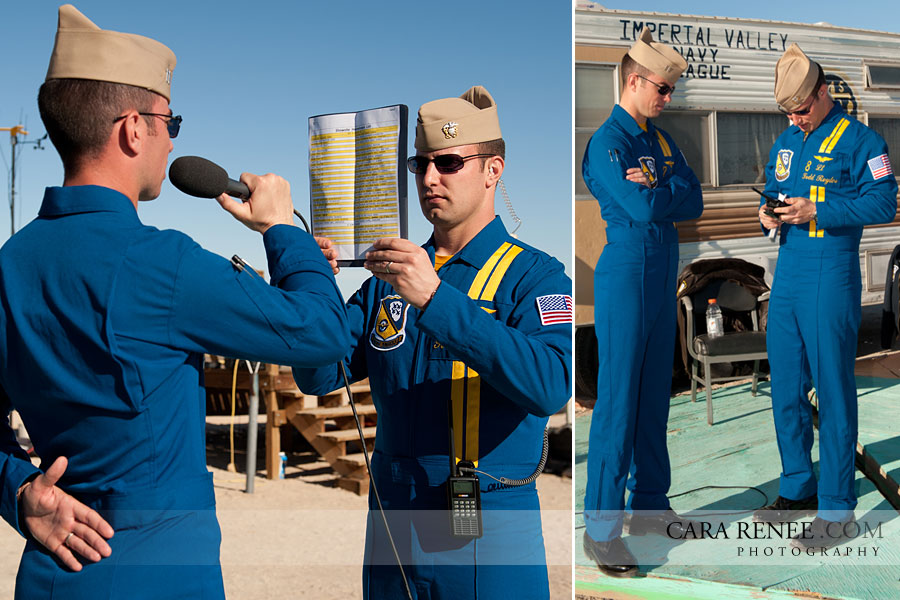
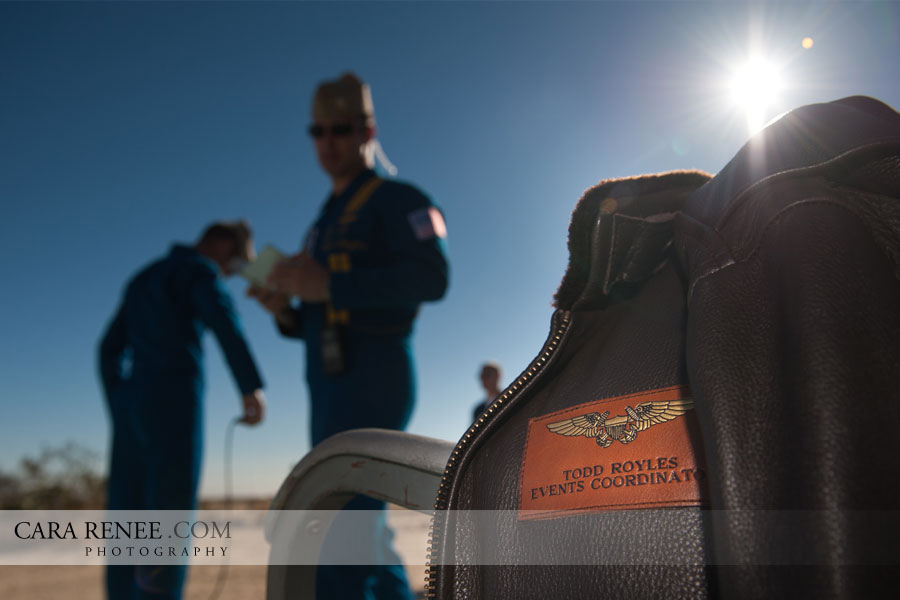
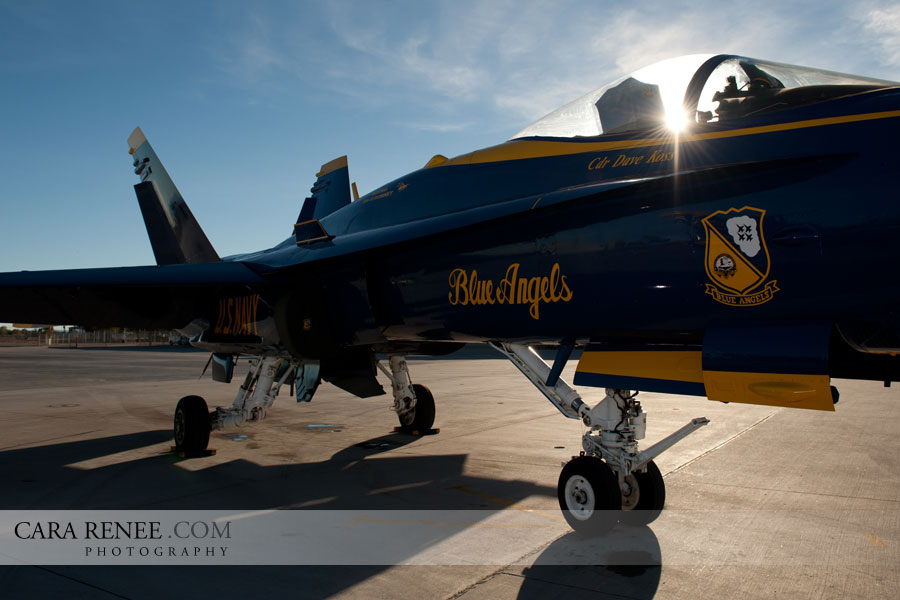
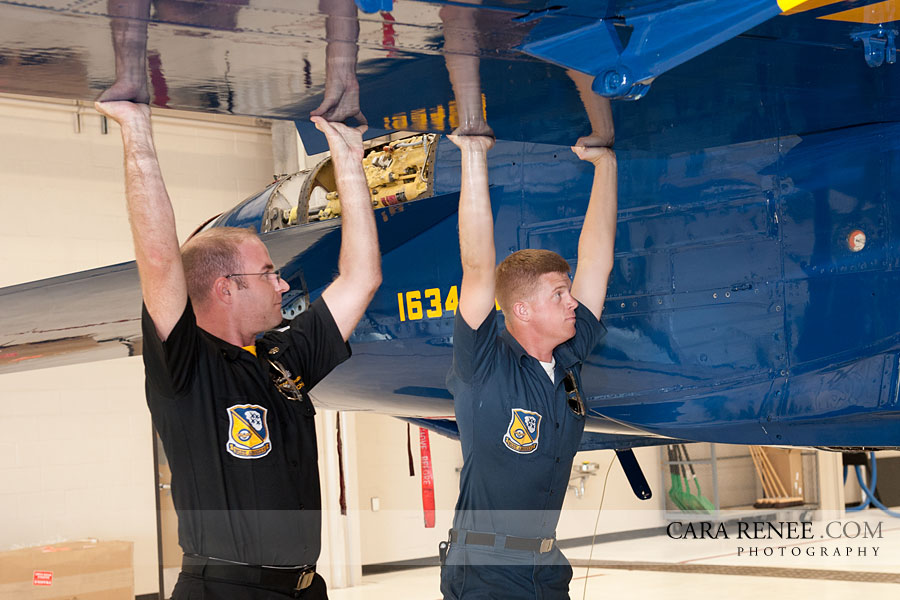
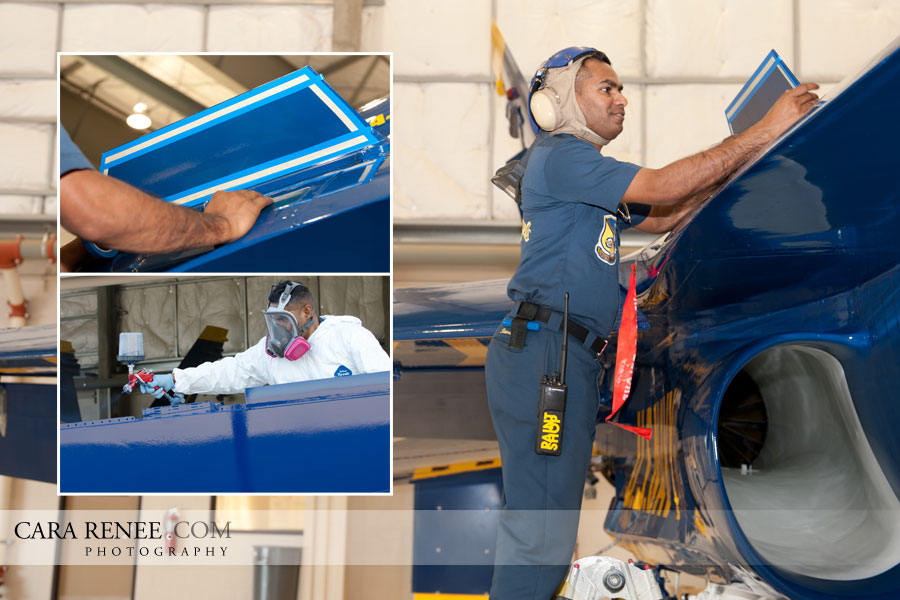
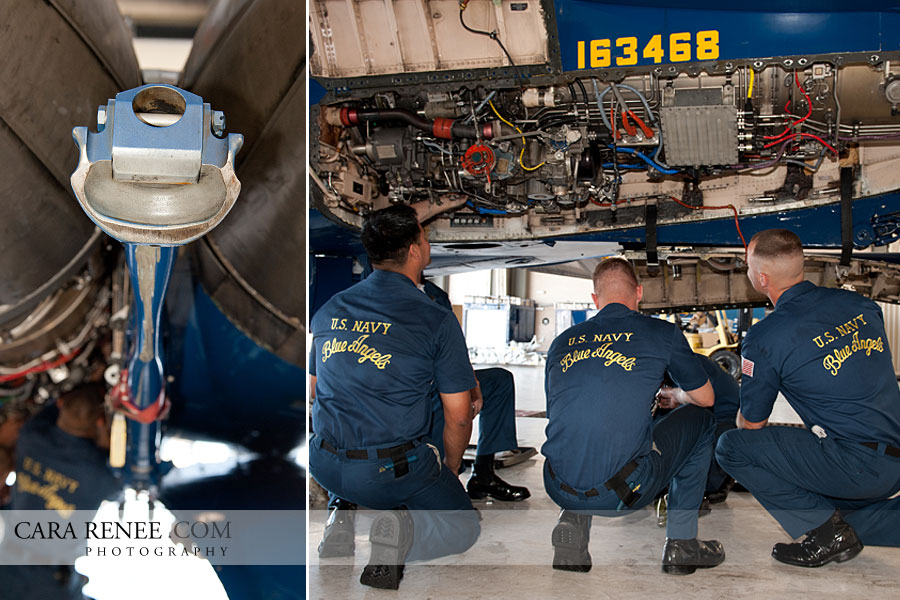
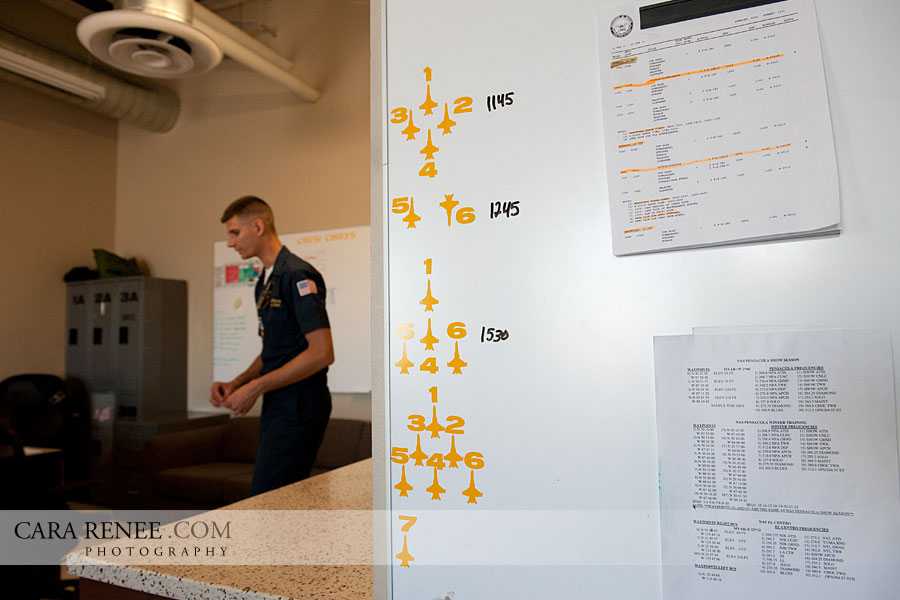
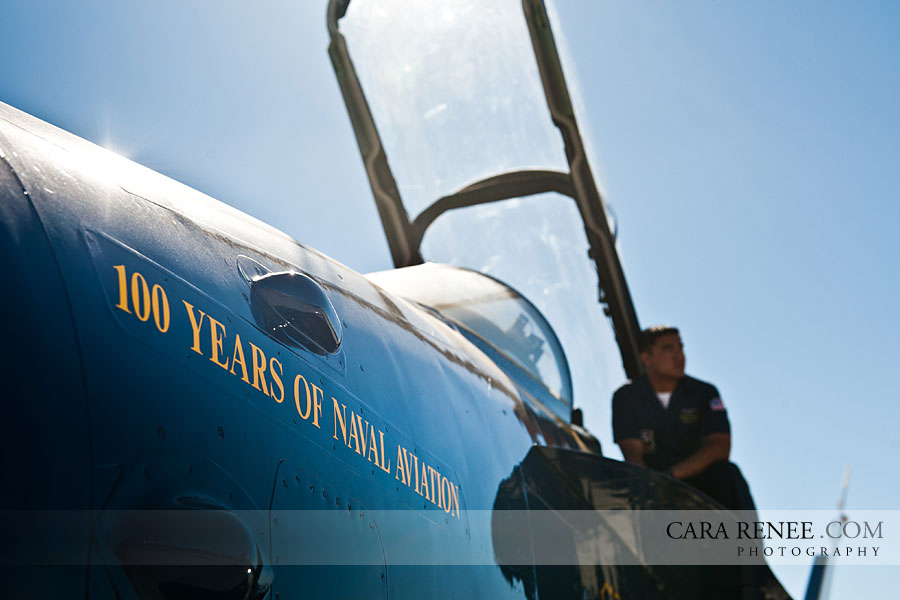
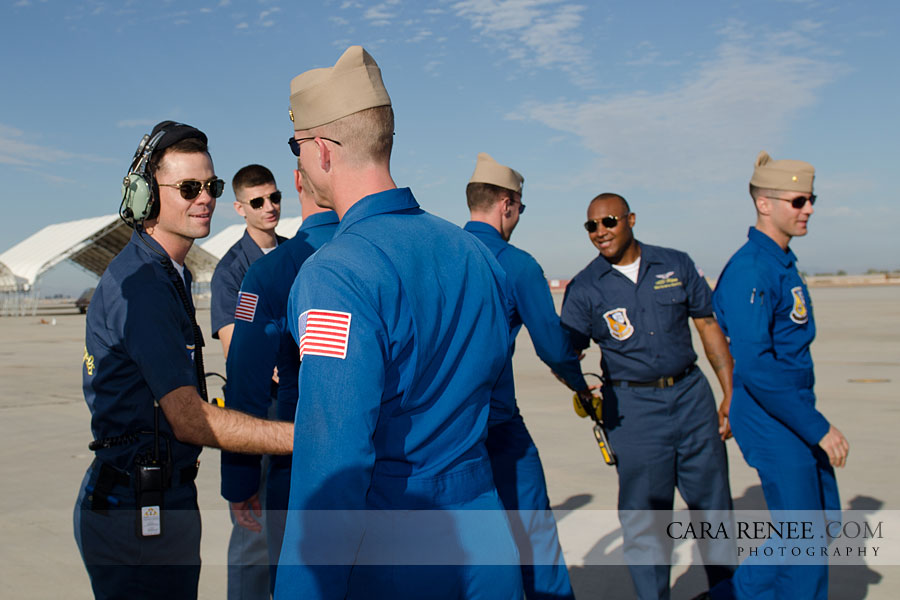
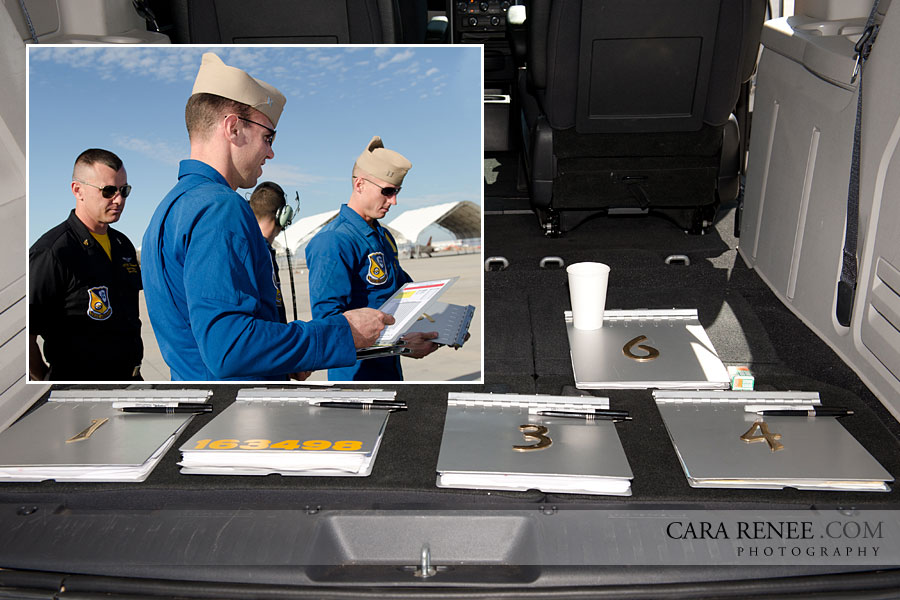
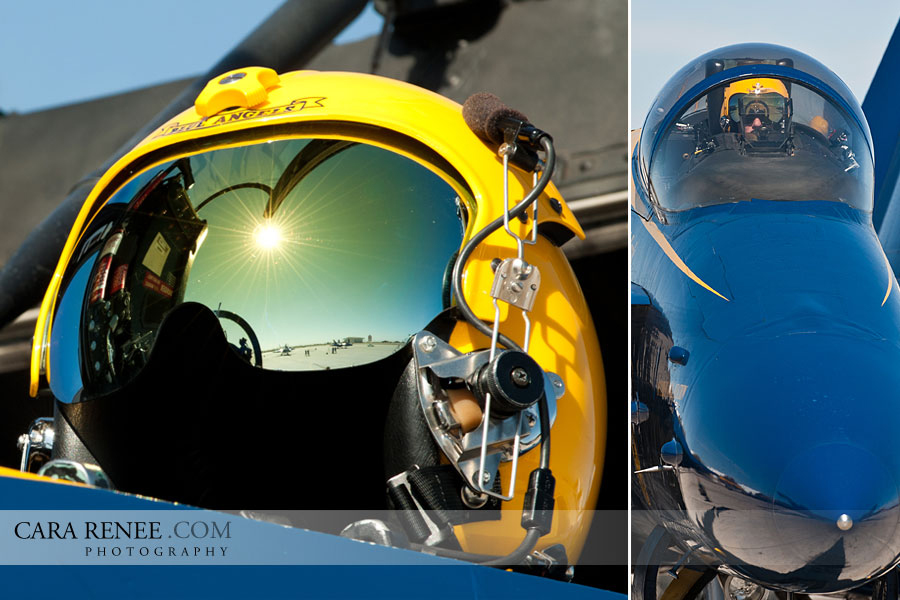
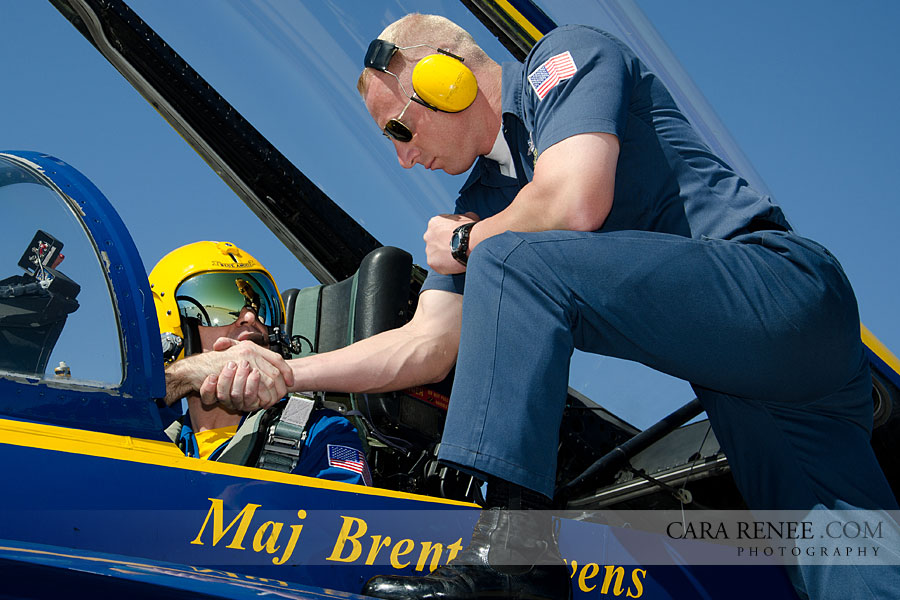
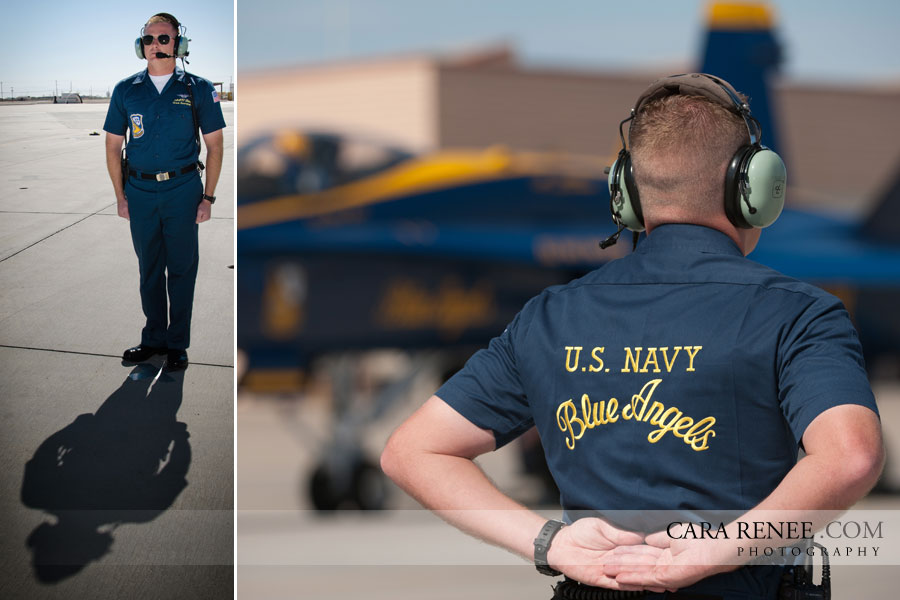
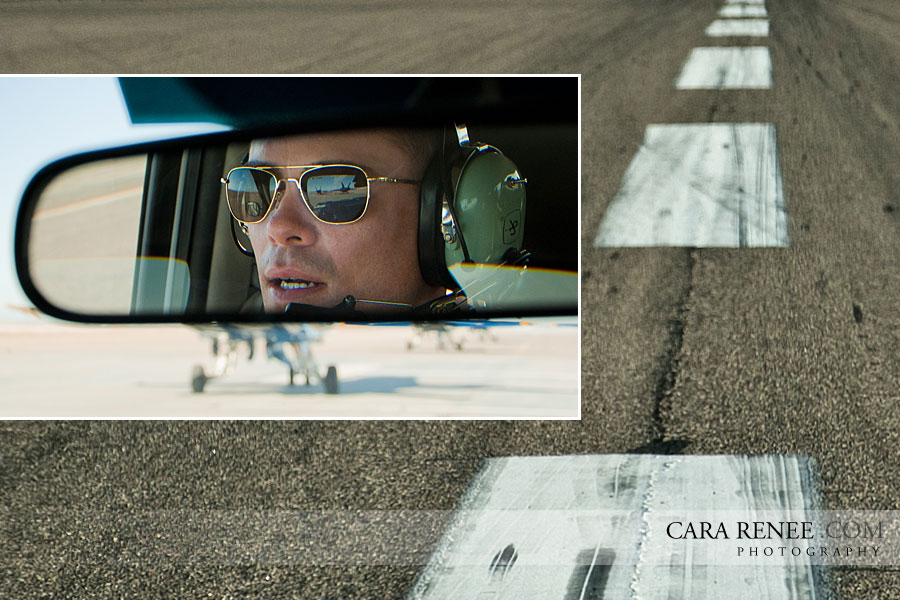
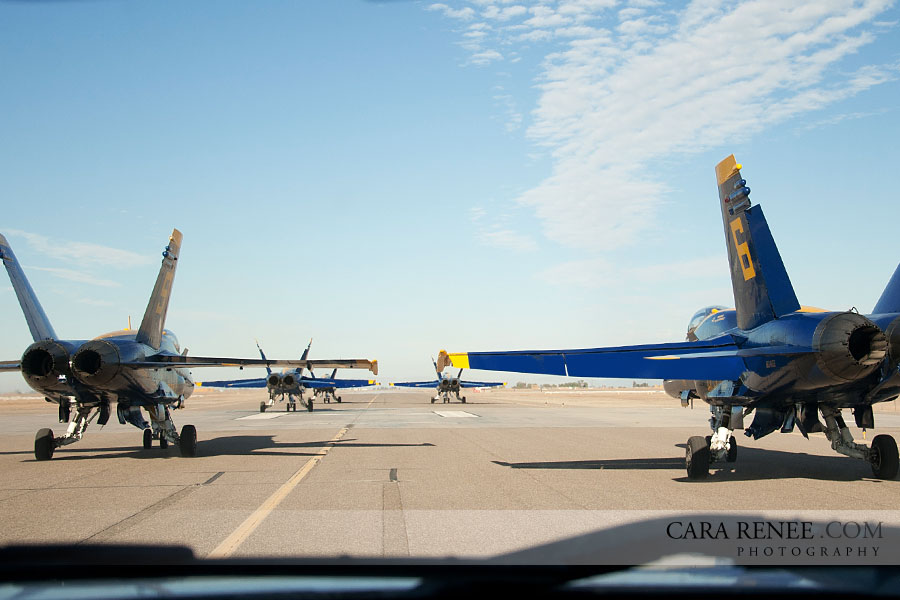
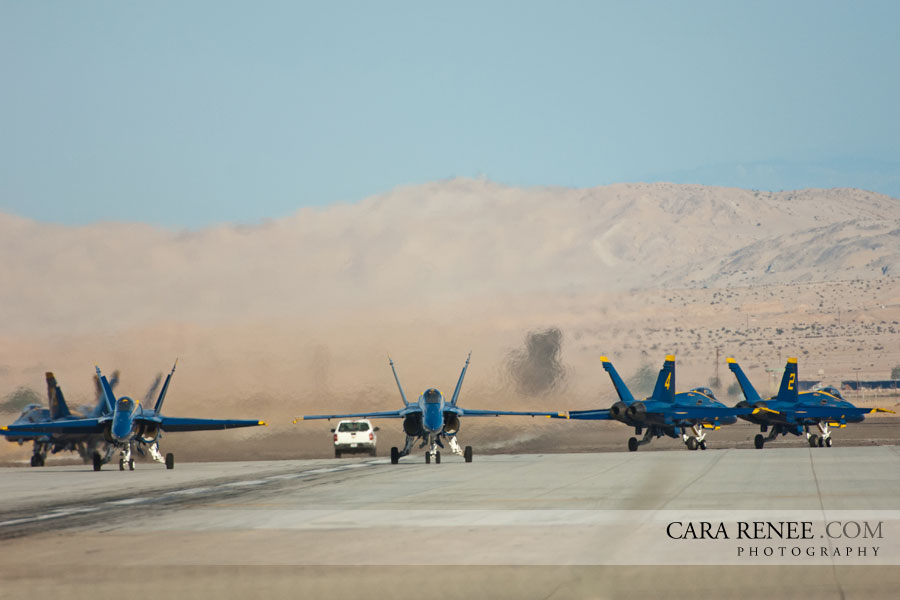
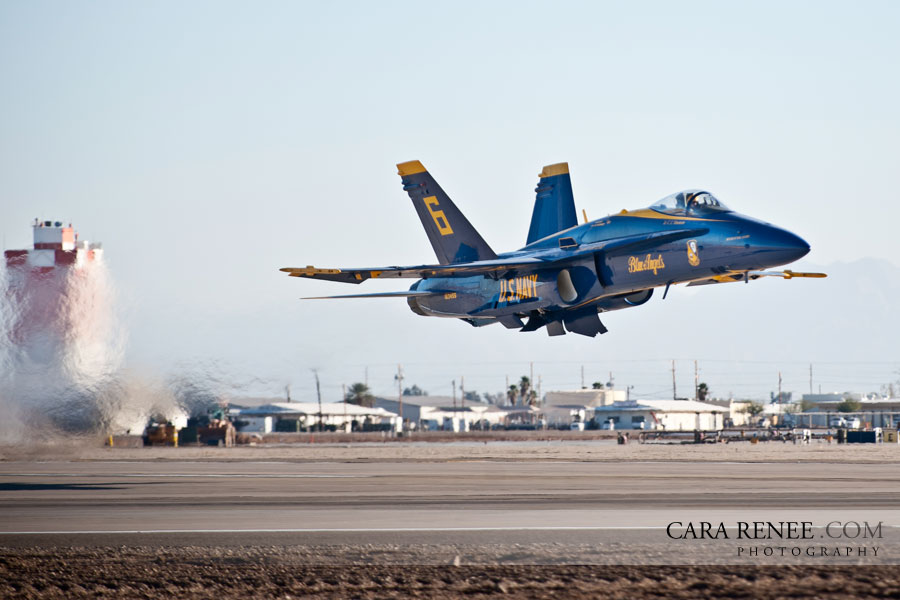
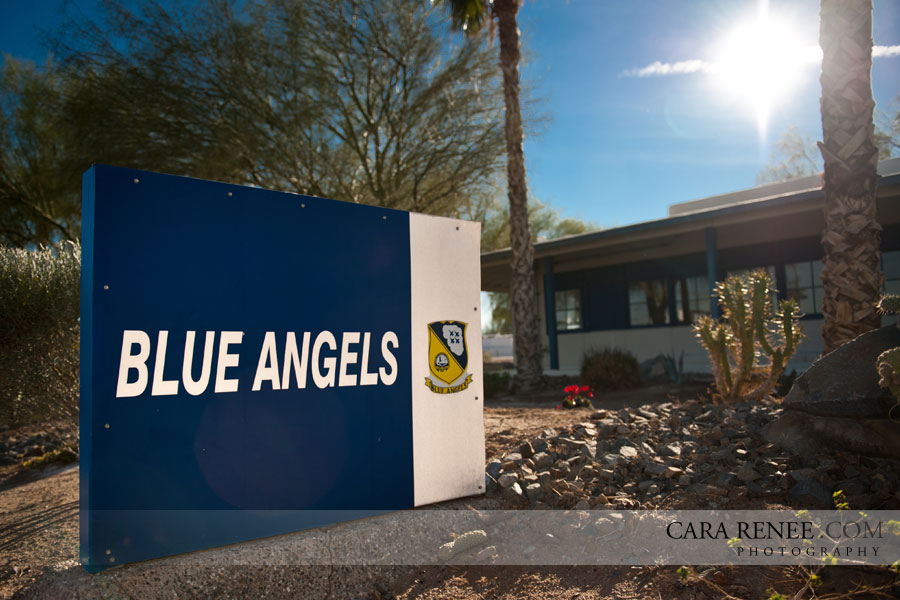
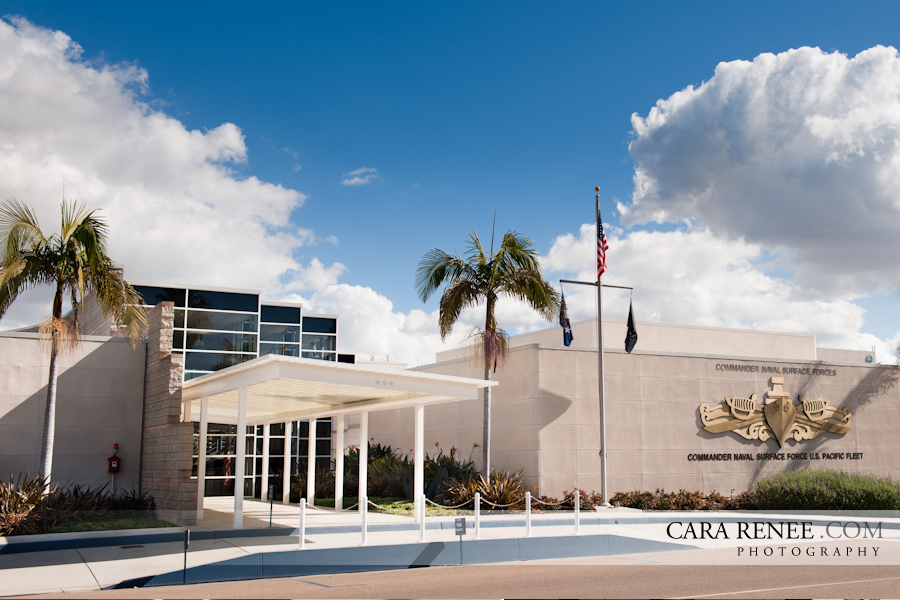
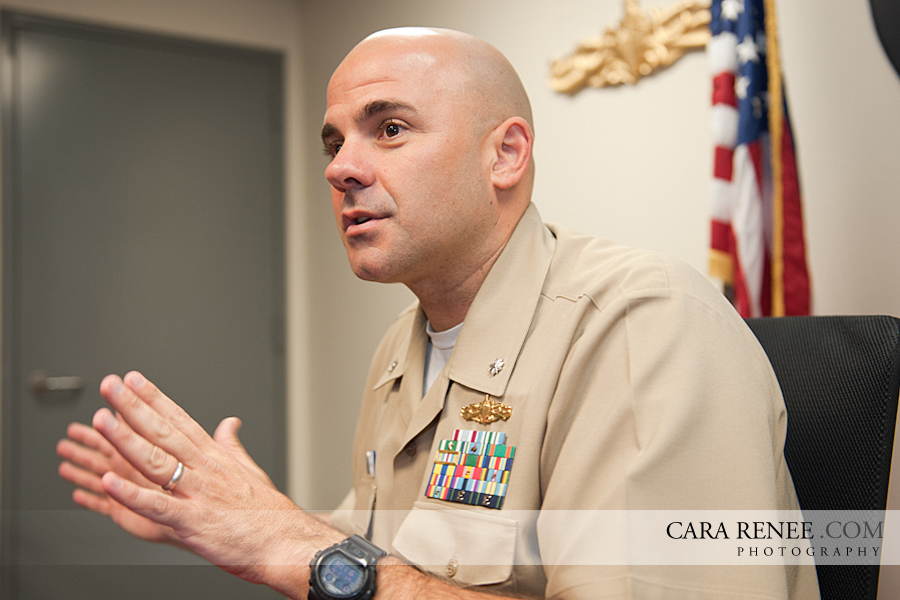
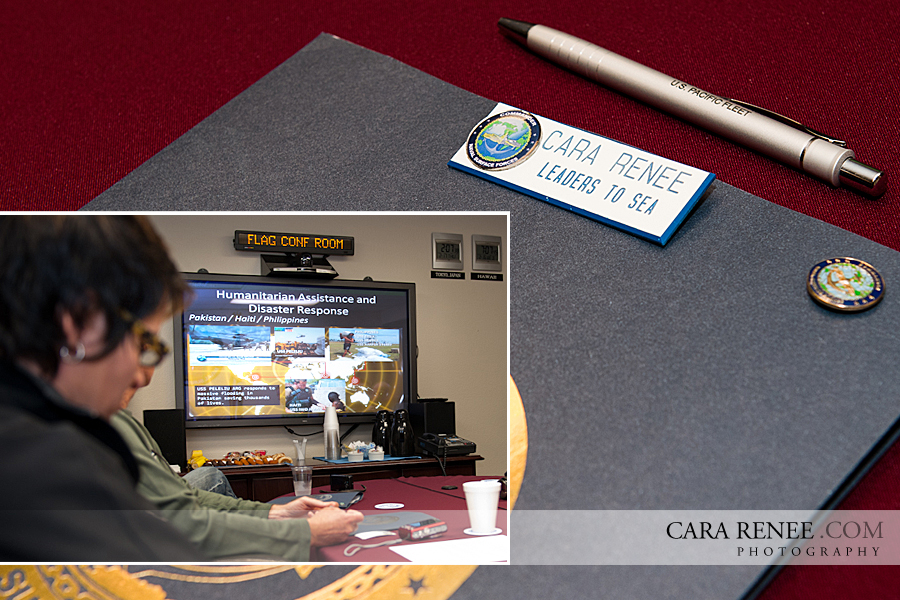
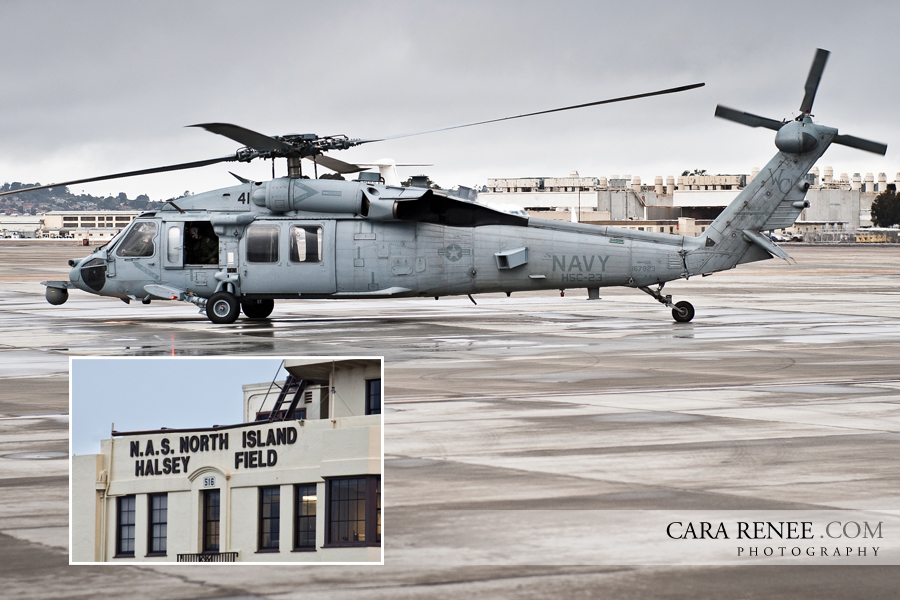
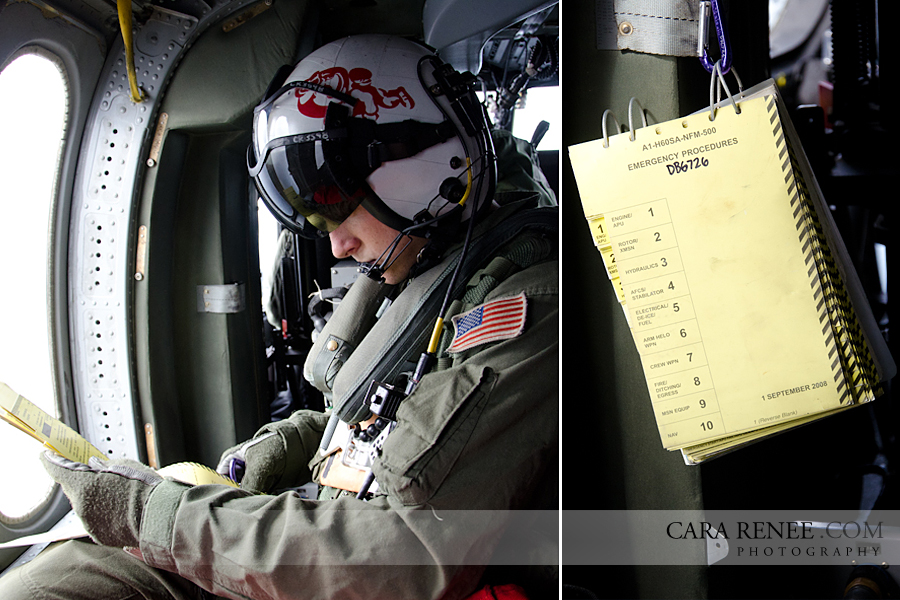
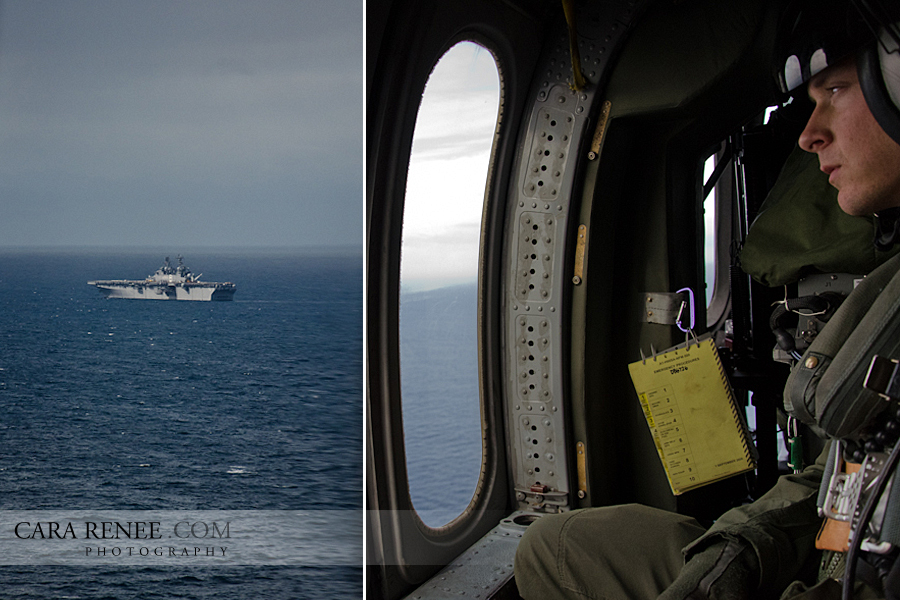
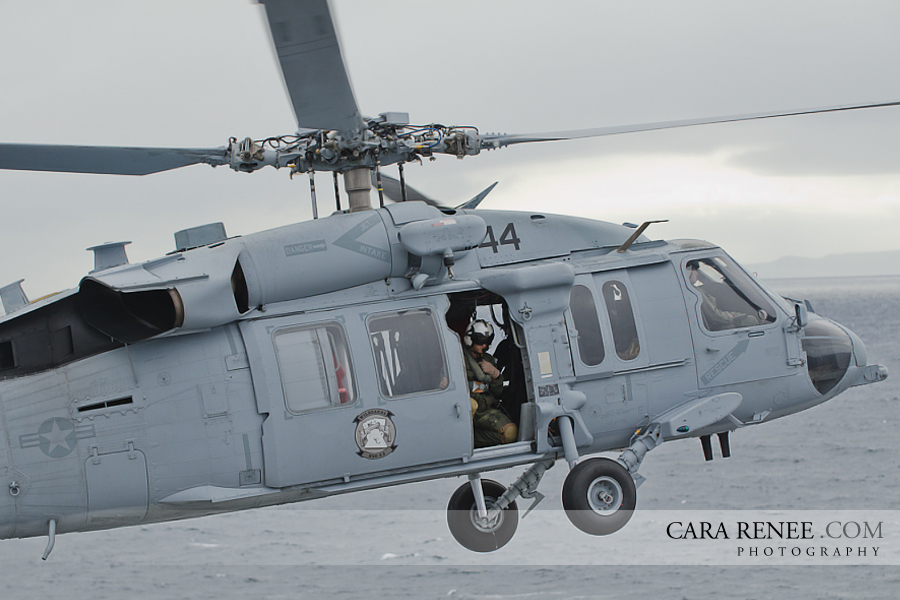
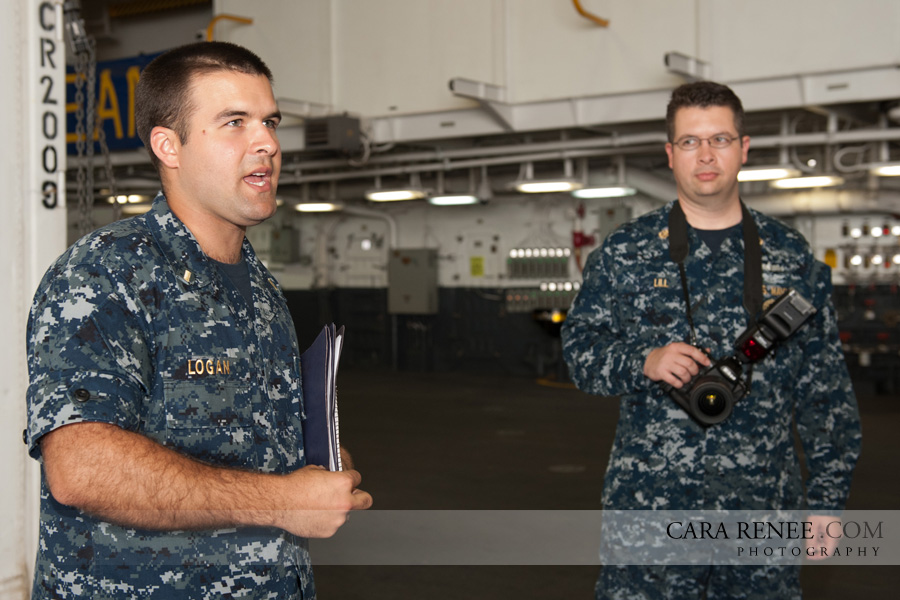
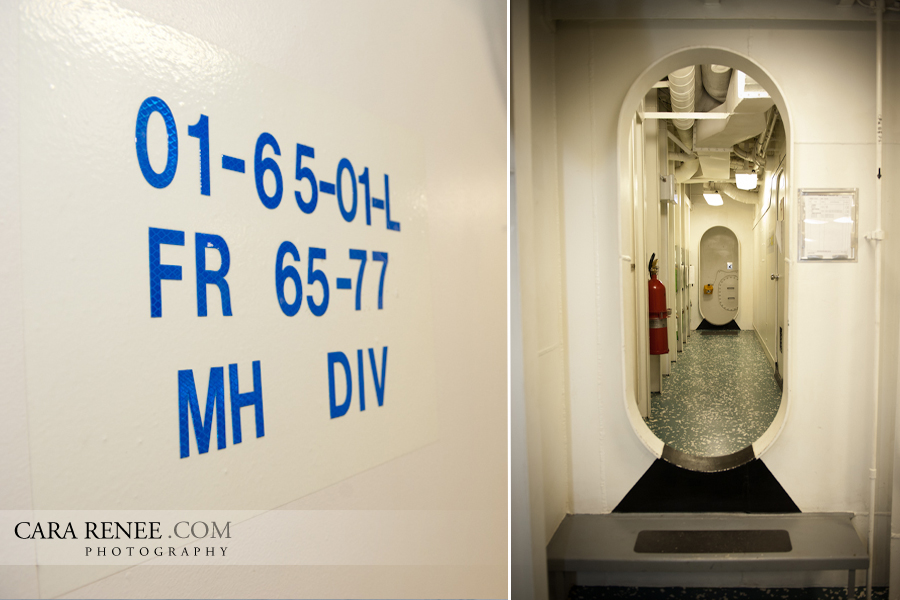 We were escorted from the Seahawk through a maze of hallways. The letters on the left are the compartment “address” of your
We were escorted from the Seahawk through a maze of hallways. The letters on the left are the compartment “address” of your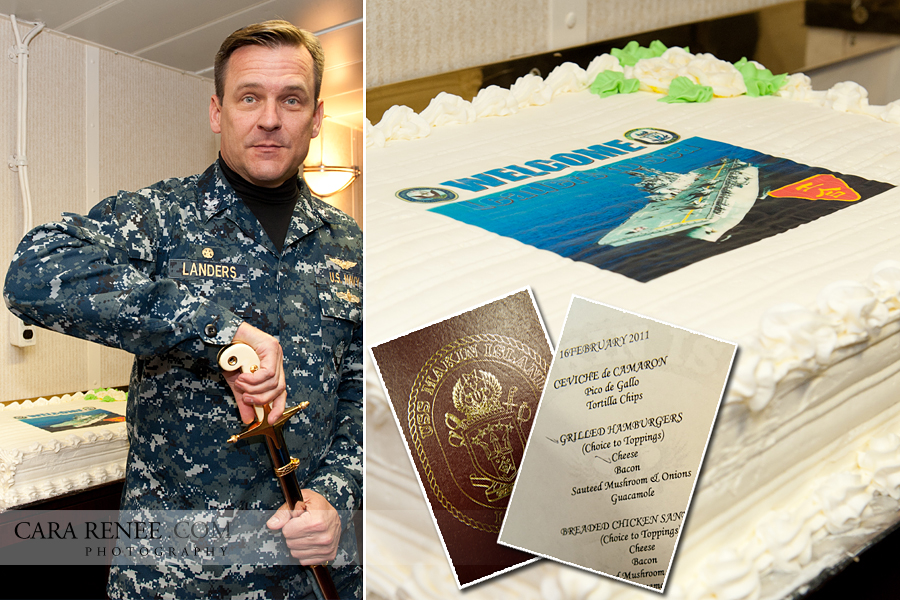
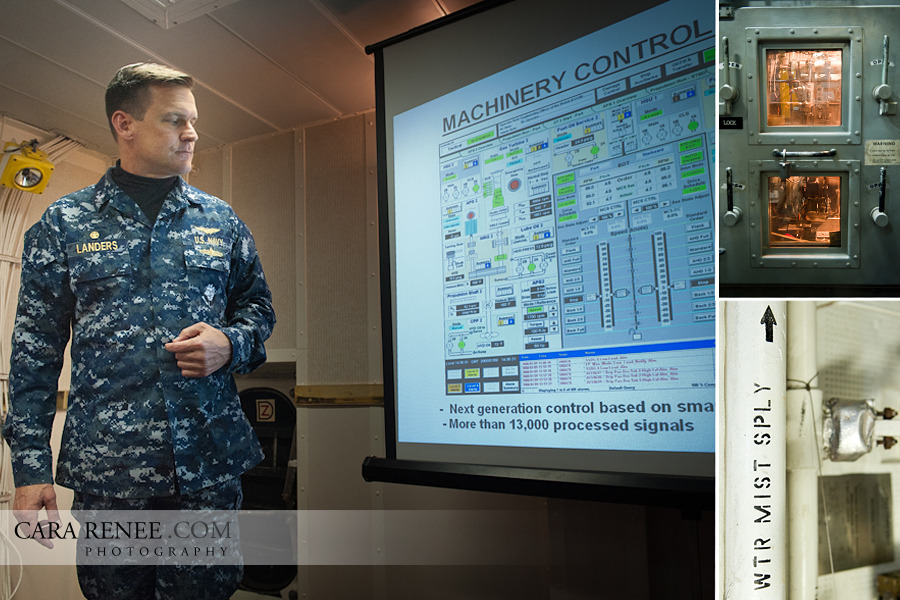
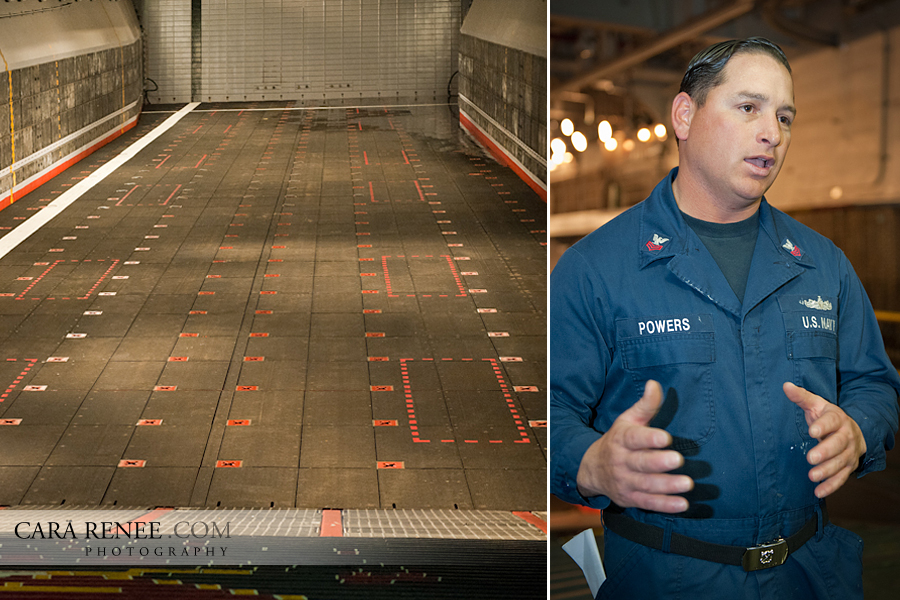
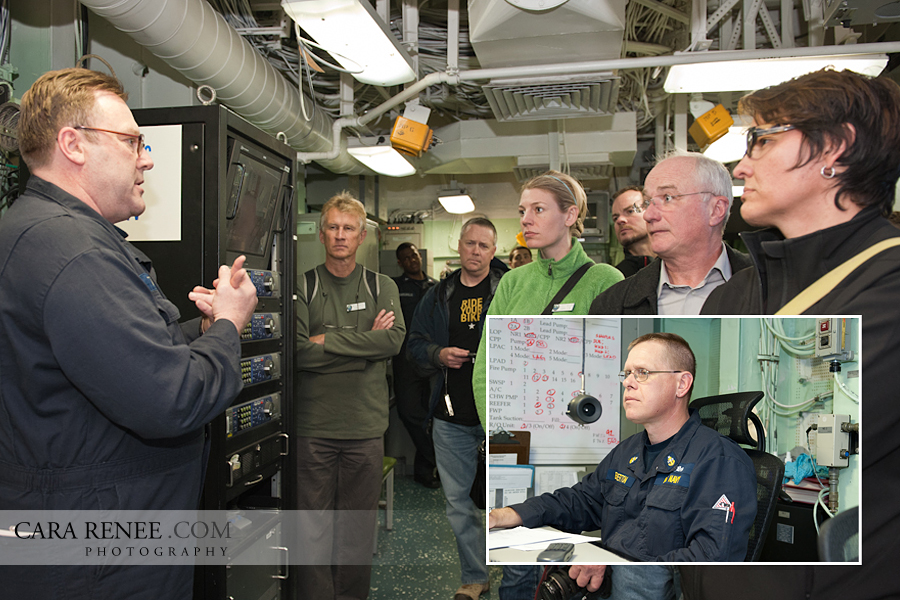
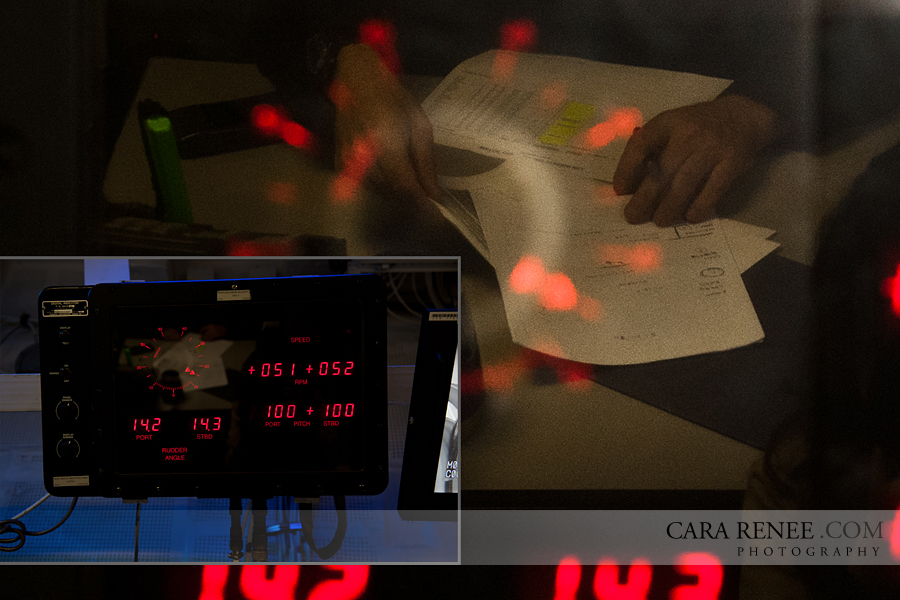
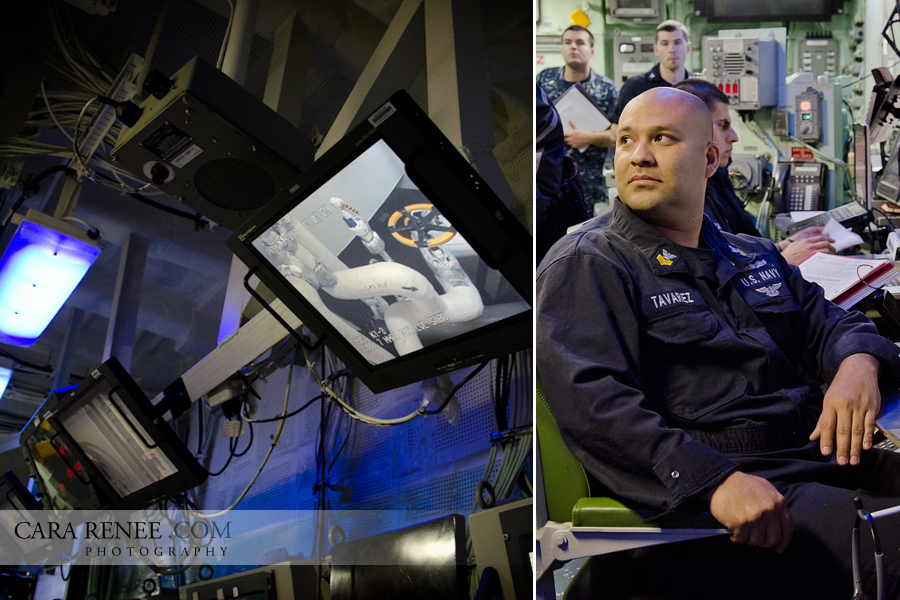
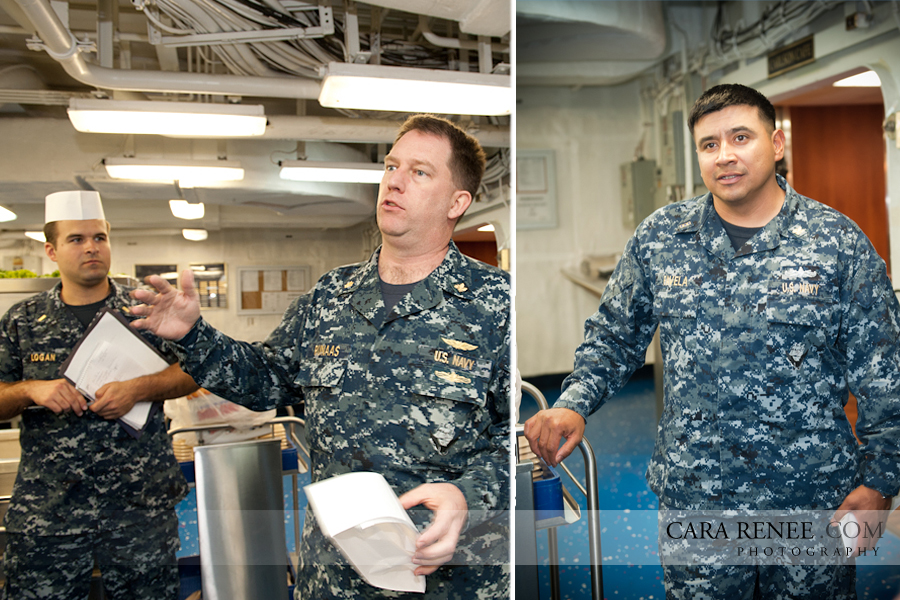
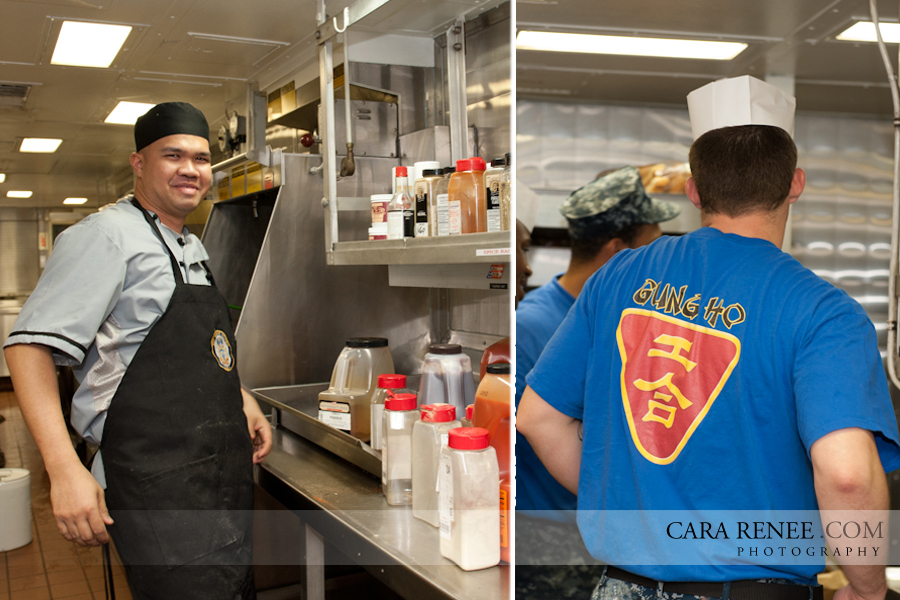
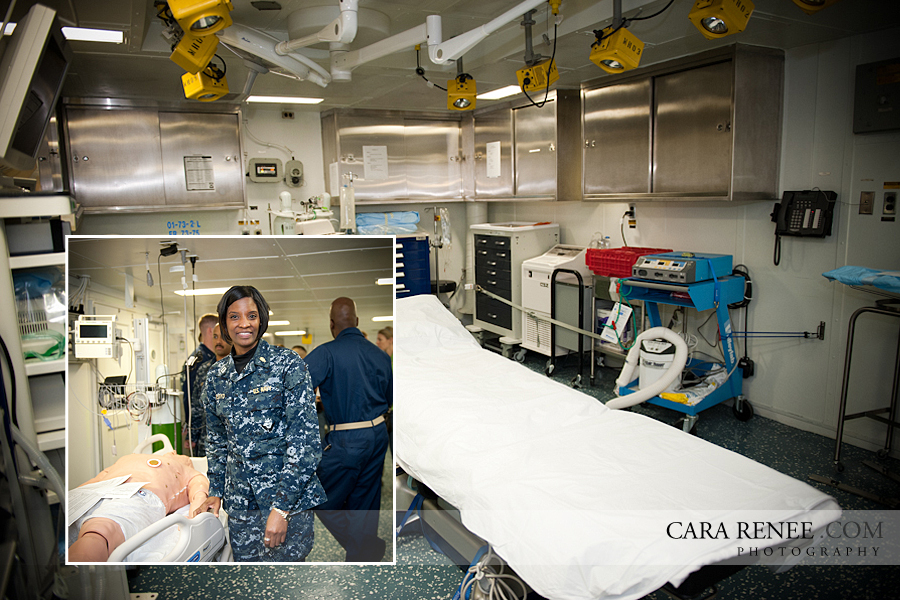
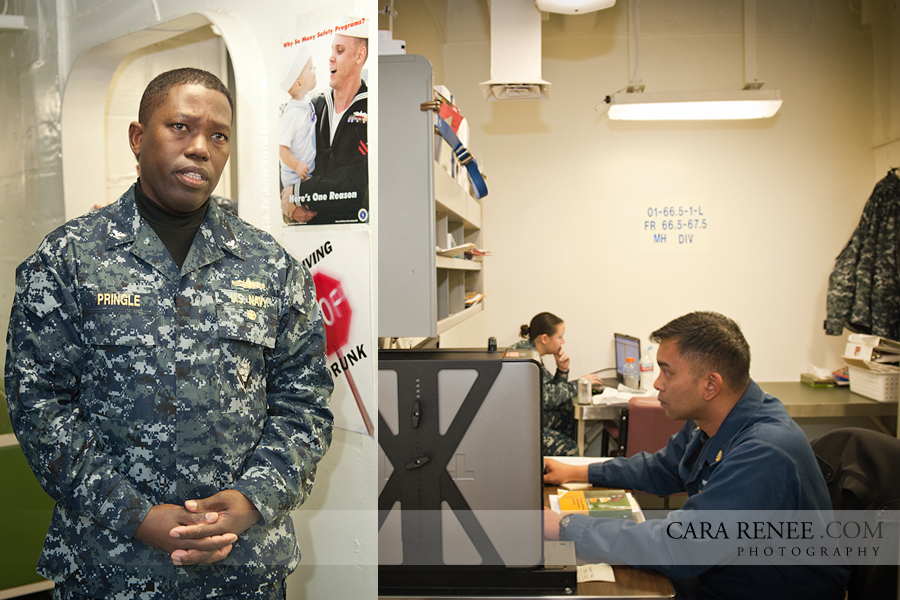
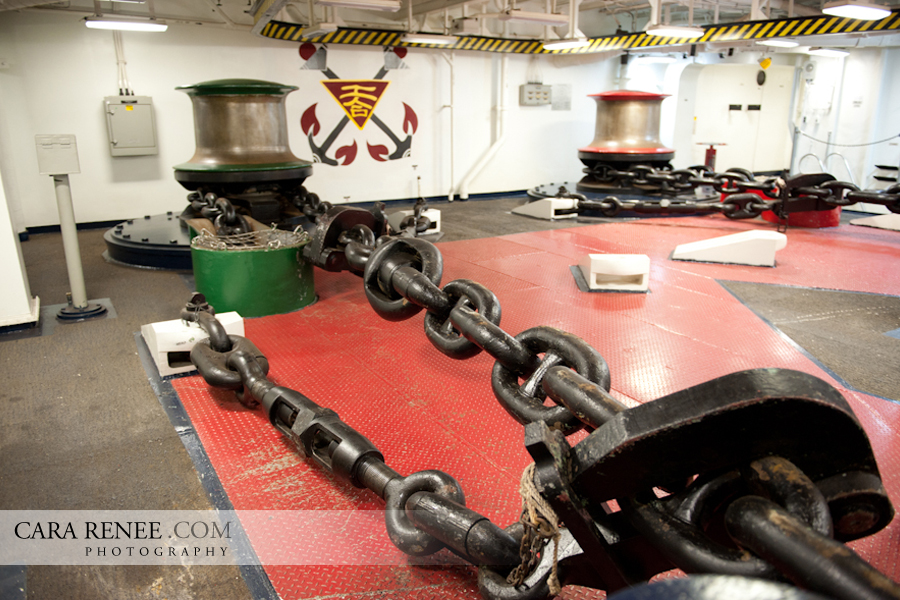
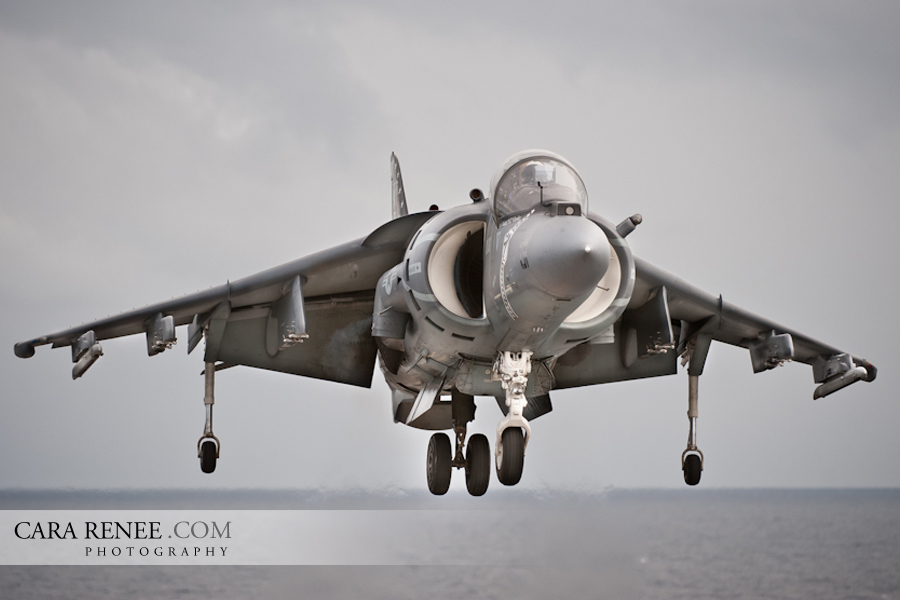
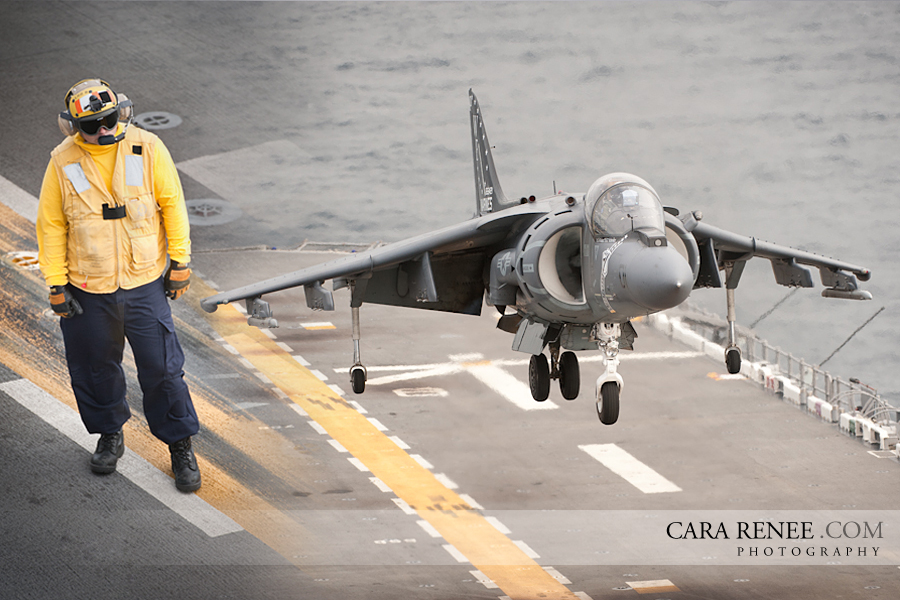
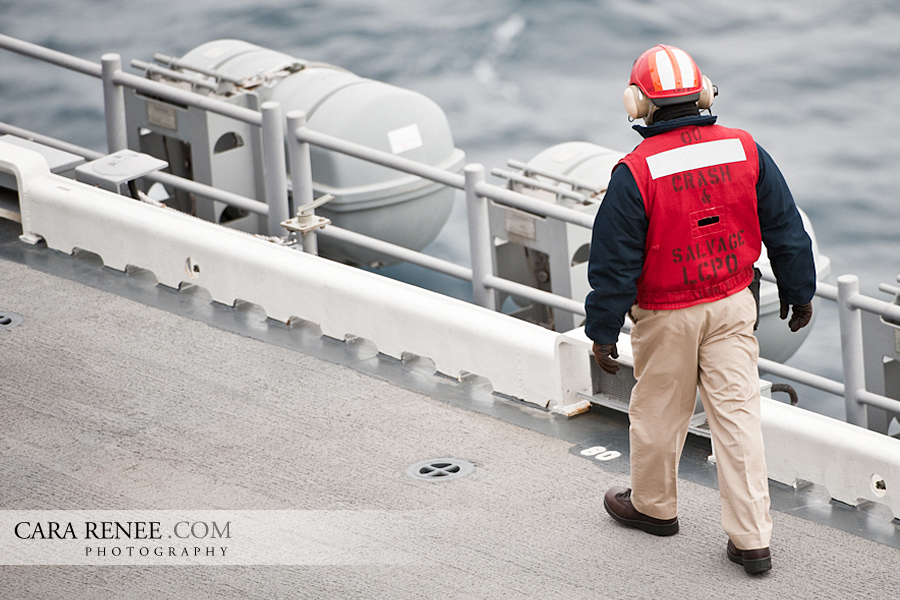
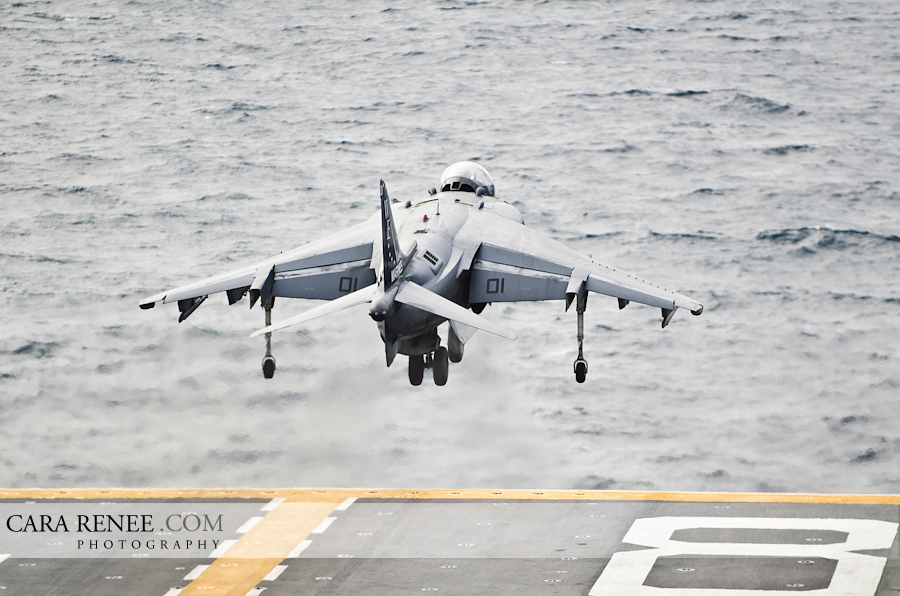
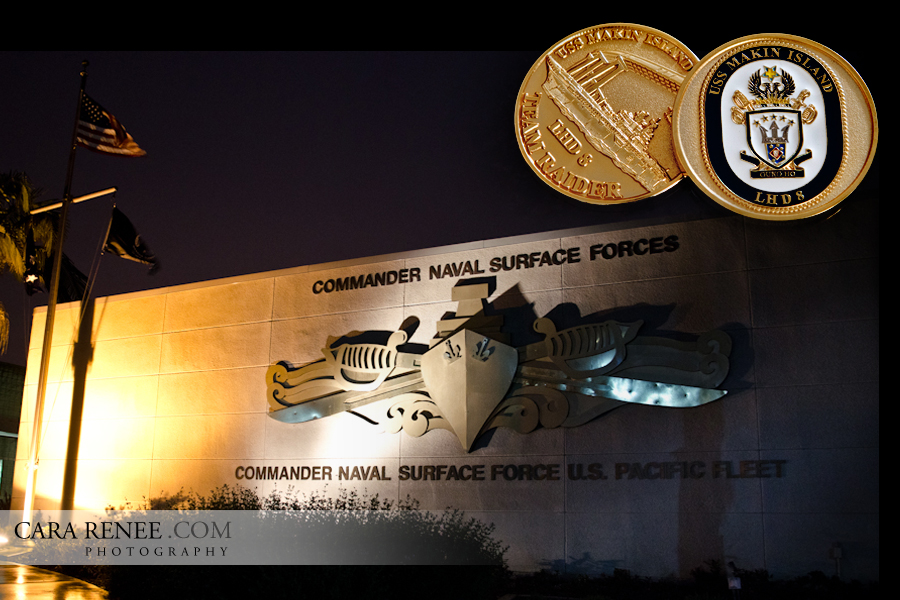
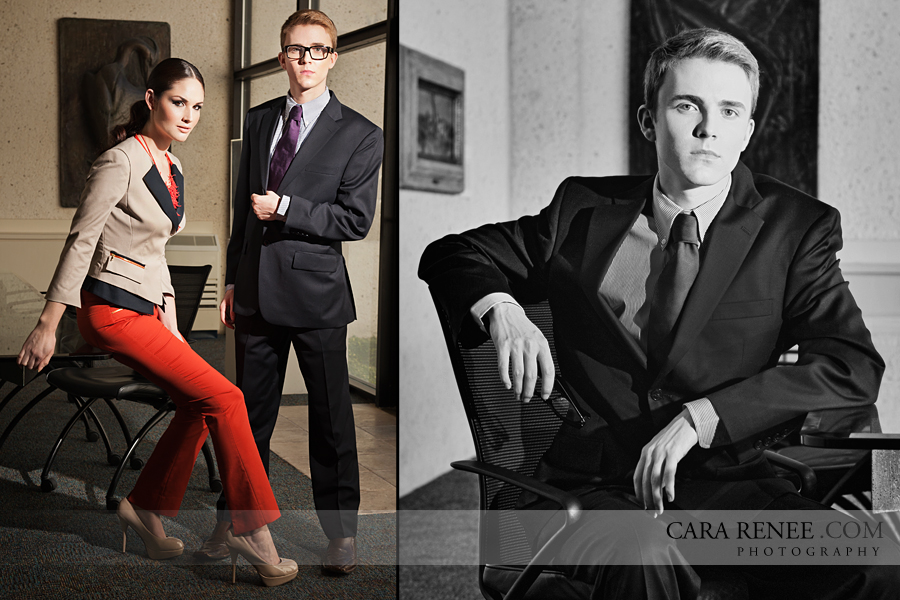


no comments